ЪҶЪҜЩҲЩҶЩҮ Ъ©Ш§ЩҮШҙ ШіШұШ№ШӘ Щ…ЫҢвҖҢШӘЩҲШ§ЩҶШҜ ШЁЩҮ ШҙЩ…Ш§ Ъ©Щ…Ъ© Ъ©ЩҶШҜ ШӘШ§ ШіШұШ№ШӘ Ш®ЩҲШҜ ШұШ§ Ш§ЩҒШІШ§ЫҢШҙ ШҜЩҮЫҢШҜ

ШҜЩҲЫҢШҜЩҶ ШЁШ§ ШіШұШ№ШӘ ШўЩҮШіШӘЩҮвҖҢШӘШұ Щ…ЫҢвҖҢШӘЩҲШ§ЩҶШҜ ШЁЩҮ ШҙЩ…Ш§ Ъ©Щ…Ъ© Ъ©ЩҶШҜ ШӘШ§ ШіШұШ№ШӘ Ш®ЩҲШҜ ШұШ§ Ш§ЩҒШІШ§ЫҢШҙ ШҜЩҮЫҢШҜ.
ЩҲЩӮШӘЫҢ Щ…Ш§ Ш®ЩҲШҜЩ…Ш§ЩҶ ШұШ§ ШЁШ§ ШіШ§ЫҢШұ ШҜЩҲЩҶШҜЪҜШ§ЩҶ Щ…ЩӮШ§ЫҢШіЩҮ Щ…ЫҢвҖҢЪ©ЩҶЫҢЩ…ШҢ ЪҶЩҮ ЩҮЩҶЪҜШ§Щ… ШҜЩҲЫҢШҜЩҶ ШҜШұ ЩҫЫҢШ§ШҜЩҮвҖҢШұЩҲЩҮШ§ЫҢ Щ…ШӯЩ„вҖҢЩ…Ш§ЩҶ ЩҲ ЪҶЩҮ ЩҮЩҶЪҜШ§Щ… Щ…ШіШ§ШЁЩӮШ§ШӘ ШҜЩҲ Ш§Щ…ШҜШ§ШҜЫҢШҢ Щ…Ш№Щ…ЩҲЩ„Ш§ЩӢ ШӘЩ…ШұЪ©ШІЩ…Ш§ЩҶ ШЁШұ ШұЩҲЫҢ Ъ©ШіШ§ЩҶЫҢ Ш§ШіШӘ Ъ©ЩҮ Ъ©Щ…ЫҢ Ш§ШІ Щ…Ш§ ШіШұЫҢШ№вҖҢШӘШұ ЩҮШіШӘЩҶШҜ.
ШҜЩҲЫҢШҜЩҶ ШЁШ§ Ш§ЩҒШұШ§ШҜЫҢ Ъ©ЩҮ ШіШұШ№ШӘ ШЁЫҢШҙШӘШұЫҢ ШҜШ§ШұЩҶШҜ Щ…Щ…Ъ©ЩҶ Ш§ШіШӘ ШЁШ§Ш№Ш« ШҙЩҲШҜ ШӯШӘЫҢ ШҜШұ ШҜЩҲЩҮШ§ЫҢ ШўШіШ§ЩҶвҖҢ ЩҮЩ… ШіШұШ№ШӘ ШЁЫҢШҙШӘШұЫҢ ШҜШ§ШҙШӘЩҮ ШЁШ§ШҙЫҢЩ….
Ш§ЫҢЩҶ ЩҶЩҲШ№ ШӘЩ…ШұЫҢЩҶ Ъ©ШұШҜЩҶ Щ…Щ…Ъ©ЩҶ Ш§ШіШӘ ШЁЩҮ ЩҶШёШұ Ш¬Ш°Ш§ШЁ ШЁЫҢШ§ЫҢШҜ.
Ш§ШІ Ш§ЫҢЩҶ ЪҜШ°ШҙШӘЩҮШҢ ЪҶЩҮ Ъ©ШіЫҢ ЩҶЩ…ЫҢвҖҢШ®ЩҲШ§ЩҮШҜ ШіШұЫҢШ№вҖҢШӘШұ ШЁЩҮ ЩҶШёШұ ШЁШұШіШҜШҹ ШӯШӘЫҢ Ш§ЪҜШұ Ш§ЫҢЩҶ ЩҒЩӮШ· ЫҢЪ© Ш®ЩҲШҜЩҶЩ…Ш§ЫҢЫҢ ШөШ§ШҜЩӮШ§ЩҶЩҮ ШҜШұ Щ…ЩҲШұШҜ “easy miles” ШҜШұ Ш§ШіШӘШұШ§ЩҲШ§ ШЁШ§ШҙШҜ. Ш§Щ…Ш§ ШўЫҢШ§ ЩҲШ§ЩӮШ№Ш§ Ш§ЫҢШҜЩҮ Ш®ЩҲШЁЫҢ Ш§ШіШӘШҹ
Щ…Ш§ Щ…ЫҢвҖҢШӘЩҲШ§ЩҶЫҢЩ… Ш§ШІ ШЁШІШұЪҜвҖҢШӘШұЫҢЩҶ ШҜЩҲЩҶШҜЩҮ Щ…Ш§ШұШ§ШӘЩҶ ШҜЩҶЫҢШ§ Ъ©ЩҮ Щ…ЫҢвҖҢШӘЩҲШ§ЩҶШҜ ШЁШ§ ШҜЩҲЫҢШҜЩҶ ШўЩҮШіШӘЩҮвҖҢШӘШұ ШҜШұ ШЁЫҢШҙШӘШұ Щ…ШіЫҢШұ Щ…ШіШ§ШЁЩӮЩҮ ШіШұШ№ШӘ Щ…ЫҢШ§ЩҶЪҜЫҢЩҶ ШЁШ§Щ„Ш§ШӘШұЫҢ ШҜШ§ШҙШӘЩҮ ШЁШ§ШҙШҜШҢ Ш§Щ„ЩҮШ§Щ… ШЁЪҜЫҢШұЫҢЩ… ЩҲ ШіШұШ№ШӘ Ш®ЩҲШҜ ШұШ§ Ъ©Ш§ЩҮШҙ ШҜЩҮЫҢЩ….
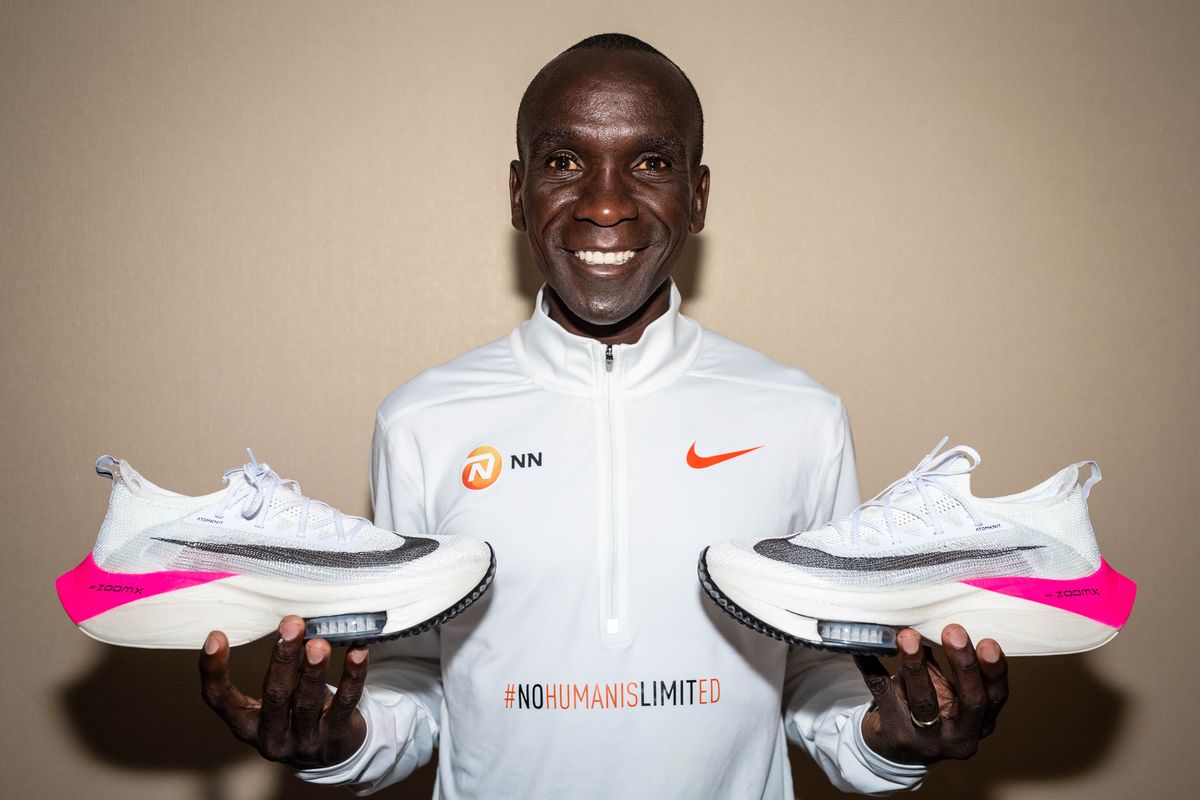
Ш§Щ…ШұЩҲШІЩҮ ШЁШіЫҢШ§ШұЫҢ Ш§ШІ ШҜЩҲЩҶШҜЪҜШ§ЩҶ ШәЫҢШұШӯШұЩҒЩҮвҖҢШ§ЫҢ Ш№Щ„Ш§ЩӮЩҮвҖҢЩ…ЩҶШҜ ШЁЩҮ ШҜЩҶШЁШ§Щ„ Ъ©ШұШҜЩҶ В«ШўЩҶЪҶЩҮ Ъ©ЩҮ ШӯШұЩҒЩҮвҖҢШ§ЫҢ ЩҮШ§ Ш§ЩҶШ¬Ш§Щ… Щ…ЫҢвҖҢШҜЩҮЩҶШҜВ» ЩҮШіШӘЩҶШҜШҢ Ш§ШІ Ъ©ЩҒШҙвҖҢЩҮШ§ЫҢ ШҙЪҜЩҒШӘвҖҢШ§ЩҶЪҜЫҢШІЫҢ Ъ©ЩҮ Щ…ЫҢвҖҢЩҫЩҲШҙЩҶШҜШҢ ЪҳЩ„вҖҢЩҮШ§ЫҢЫҢ Ъ©ЩҮ ШҜШұ Щ…ШіШ§ШЁЩӮЩҮ Щ…ШөШұЩҒ Щ…ЫҢвҖҢЪ©ЩҶЩҶШҜ ЫҢШ§ ШўШ®ШұЫҢЩҶ ШӘЪ©ЩҶЩҲЩ„ЩҲЪҳЫҢвҖҢЩҮШ§ЫҢЫҢ Ъ©ЩҮ ШЁЩҮ ШўЩҶЩҮШ§ ШЁШұШӘШұЫҢ ЩҶШіШЁЫҢ Щ…ЫҢвҖҢШҜЩҮЩҶШҜ.
Ш§Щ…Ш§ ШӘШ№ШҜШ§ШҜ Ъ©Щ…ШӘШұЫҢ Ш§ШІ Щ…Ш§ ШЁЩҮ Ш§ШөЩҲЩ„ Ш®ШіШӘЩҮвҖҢЪ©ЩҶЩҶШҜЩҮ ШӘЩ…ШұЫҢЩҶ ШўЩҶЩҮШ§ ШӘЩҲШ¬ЩҮ Щ…ЫҢвҖҢЪ©ЩҶЫҢЩ….
Ш§Щ„ШЁШӘЩҮ ЩӮШ§ШЁЩ„ ШҜШұЪ© Ш§ШіШӘШҢ ЪҶЩҲЩҶ Ш§ЫҢЩҶ Ш§ШөЩҲЩ„ Ш¬Ш°Ш§ШЁ ЩҶЫҢШіШӘ ЩҲ ЩҶЩ…ЫҢвҖҢШӘЩҲШ§ЩҶЫҢШҜ ШўЩҶ ШұШ§ ШўЩҶЩ„Ш§ЫҢЩҶ ШЁШ®ШұЫҢШҜ ЩҲ ШіШұЫҢШ№ Ш§ШІ ШўЩҶ Ш§ШіШӘЩҒШ§ШҜЩҮ Ъ©ЩҶЫҢШҜ.
ШҜШұ Ш№ЫҢЩҶ ШӯШ§Щ„ЫҢ Ъ©ЩҮ ШӯШұЩҒЩҮвҖҢШ§ЫҢ ЩҮШ§ Ш®ЫҢЩ„ЫҢ ШІЫҢШ§ШҜ ЩҲ ШіШ®ШӘ ШӘЩ…ШұЫҢЩҶ Щ…ЫҢвҖҢЪ©ЩҶЩҶШҜ ЩҲ Ъ©ЫҢЩ„ЩҲЩ…ШӘШұЩҮШ§ Щ…ЫҢвҖҢШҜЩҲЩҶШҜШҢ ШўЩҶвҖҢЩҮШ§ ЩҮЩ… ШӯШҜЩҲШҜ 80 ШҜШұШөШҜ ШӘЩ…ШұЫҢЩҶШ§ШӘШҙШ§ЩҶ ШЁШ§ ШҙШҜШӘ ЩҫШ§ЫҢЫҢЩҶ ЩҲ ЩҒЩӮШ· 20 ШҜШұШөШҜ ШЁШ§ ШҙШҜШӘ ШЁШ§Щ„Ш§ Ш§ЩҶШ¬Ш§Щ… Щ…ЫҢвҖҢШҙЩҲШҜ.
ЩҲ Ш§Щ„ШЁШӘЩҮШҢ ШҜЩ„ЫҢЩ„ Ш®ЩҲШЁ ЩҲ Щ…ЩҶШ·ЩӮЫҢ ЩҮЩ… ШҜШ§ШұЩҶШҜ. ШӘЩ…Ш§Щ… ШҙЩҲШ§ЩҮШҜ ЩҶШҙШ§ЩҶ Щ…ЫҢвҖҢШҜЩҮШҜ Ъ©ЩҮ Ъ©Ш§ЩҮШҙ ШіШұШ№ШӘ ШҜЩҲЫҢШҜЩҶ ШЁШұШ§ЫҢ ШЁШ®Шҙ ШІЫҢШ§ШҜЫҢ (Ш§ЪҜШұ ЩҶЩҮ ЩҮЩ…ЩҮ) Ш§ШІ ШӘЩ…ШұЫҢЩҶШ§ШӘ ШҙЩ…Ш§ Щ…ЫҢвҖҢШӘЩҲШ§ЩҶШҜ ШҜШұ ШЁЩ„ЩҶШҜ Щ…ШҜШӘ ШіШұШ№ШӘШӘШ§ЩҶ ШұШ§ ШЁЫҢШҙШӘШұ Ъ©ЩҶШҜ.
Ш§Щ„ШЁШӘЩҮ Ъ©ЩҮ “ШўЩҮШіШӘЩҮ ШҜЩҲЫҢШҜЩҶ” ЫҢЪ© Ш§ШөШ·Щ„Ш§Шӯ ЩҶШіШЁЫҢ Ш§ШіШӘ. ШўЩҶЪҶЩҮ ШЁШұШ§ЫҢ Ш§Щ„ЫҢЩҲШҜ Ъ©ЫҢЩҫЪҶЩҲЪҜЩҮ ШўЩҮШіШӘЩҮ Ш§ШіШӘШҢ ШЁШұШ§ЫҢ Ш§ЩҶШіШ§ЩҶвҖҢЩҮШ§ЫҢ Ш№Ш§ШҜЫҢ ШўЩҮШіШӘЩҮ ЩҶЫҢШіШӘ.
Щ…Ш№ЩҶЫҢ ЩҲШ§ЩӮШ№ЫҢ ШўЩҮШіШӘЩҮ ШҜЩҲЫҢШҜЩҶ Ш§ЫҢЩҶ Ш§ШіШӘ Ъ©ЩҮ ШҙЩ…Ш§ ШЁШ§ ШіШұШ№ШӘЫҢ Щ…ЫҢвҖҢШҜЩҲЫҢШҜ Ъ©ЩҮ ШЁЩҮ ШЁШҜЩҶШӘШ§ЩҶ ЩҒШҙШ§Шұ ЩҲШ§ШұШҜ ЩҶШҙЩҲШҜШҢ ЫҢШ§ ШЁЫҢШҙ Ш§ШІ ШӘЩҲШ§ЩҶШӘШ§ЩҶ ЩҶШЁШ§ШҙШҜШҢ ЪҶЩҲЩҶ ШҜШұ ШәЫҢШұ Ш§ЫҢЩҶ ШөЩҲШұШӘ ЩҮШұЪҜШІ ШЁЩҮ Ш®ЩҲШЁЫҢ ШұЫҢЪ©Ш§ЩҲШұ ЩҶЩ…ЫҢвҖҢШҙЩҲЫҢШҜ.
ЩҲ ШўЩҮШіШӘЩҮ ШіШұШ№ШӘЫҢ Ш§ШіШӘ Ъ©ЩҮ ШҙЩ…Ш§ Щ…ЫҢвҖҢШӘЩҲШ§ЩҶЫҢШҜ ЩҮЩҶЪҜШ§Щ… ШҜЩҲЫҢШҜЩҶ ЫҢЪ© Щ…Ъ©Ш§Щ„Щ…ЩҮ Ъ©Ш§Щ…Щ„ ШҜШ§ШҙШӘЩҮ ШЁШ§ШҙЫҢШҜШҢ ЩҶЩҮ ЩҒЩӮШ· ЫҢЪ© ЫҢШ§ ШҜЩҲ Ъ©Щ„Щ…ЩҮ ШўЩҶ ЩҮЩ… ШЁЩҮ ШіШ®ШӘЫҢ.
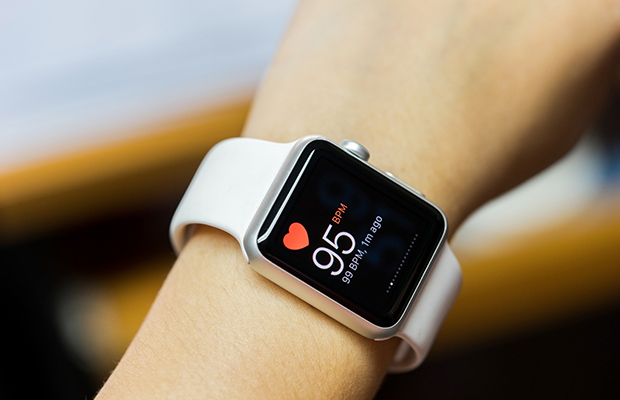
Ш§ЪҜШұ ШЁЫҢШҙШӘШұ Ш§ЩҮЩ„ Ш№ШҜШҜ ЩҲ ШұЩӮЩ… ЩҮШіШӘЫҢШҜ ЩҲ ШҜЩҲШіШӘ ШҜШ§ШұЫҢШҜ ШҜЩҲЫҢШҜЩҶ ЩҮШ§ЫҢ Ш®ЩҲШҜ ШұШ§ ШЁЩҮ ШөЩҲШұШӘ Ш№Щ„Щ…ЫҢвҖҢШӘШұЫҢ ШҜЩҶШЁШ§Щ„ Ъ©ЩҶЫҢШҜШҢ Ш¶ШұШЁШ§ЩҶ ЩӮЩ„ШЁ ЫҢЪ© Щ…Ш№ЫҢШ§Шұ Ш®ЩҲШЁ ШЁШұШ§ЫҢ Ш§ЩҶШҜШ§ШІЩҮвҖҢЪҜЫҢШұЫҢ Щ…ЫҢШІШ§ЩҶ ШўЩҮШіШӘЪҜЫҢ ШҜЩҲЫҢШҜЩҶ ШҙЩ…Ш§ Ш§ШіШӘ.
ЩҮЩ…ЪҶЩҶЫҢЩҶ Щ…ЫҢвҖҢШӘЩҲШ§ЩҶШҜ ШЁЩҮ ШҙЩ…Ш§ Ъ©Щ…Ъ© Ъ©ЩҶШҜ ШӘШ§ ШіШ·Шӯ ЩҲШ§ЩӮШ№ЫҢ ШӘЩ„Ш§Шҙ Ш®ЩҲШҜ ШұШ§ ШҜШұ ШҙШұШ§ЫҢШ· Щ…Ш®ШӘЩ„ЩҒ ШЁЩҮ ШҜШұШіШӘЫҢ Ш§ЩҶШҜШ§ШІЩҮ ШЁЪҜЫҢШұЫҢШҜ.
ШЁШұШ§ЫҢ Щ…Ш«Ш§Щ„ШҢ ШІЩ…Ш§ЩҶЫҢ Ъ©ЩҮ ШҜШұ ШӘШ№Ш·ЫҢЩ„Ш§ШӘ ШҜШұ ЩҮЩҲШ§ЫҢ ЪҜШұЩ… Щ…ЫҢвҖҢШҜЩҲЫҢШҜШҢ ШҜШұ ЩҫШіШӘЫҢвҖҢШЁЩ„ЩҶШҜЫҢвҖҢЩҮШ§ШҢ ЫҢШ§ ШІЩ…Ш§ЩҶЫҢ Ъ©ЩҮ Ъ©Щ… Ш®ЩҲШ§ШЁЫҢШҜЩҮвҖҢШ§ЫҢШҜ.
Ш§ЫҢЩҶ Щ…ЩҲШ§ШұШҜ Щ…ЫҢвҖҢШӘЩҲШ§ЩҶЩҶШҜ ШіШ·Шӯ ЩҲШ§ЩӮШ№ЫҢ ШӘЩ„Ш§Шҙ Щ…Ш§ ШұШ§ ШЁЩҮ Ш·ЩҲШұ ЩӮШ§ШЁЩ„ ШӘЩҲШ¬ЩҮЫҢ ШӘШәЫҢЫҢШұ ШҜЩҮЩҶШҜШҢ ШЁЩҶШ§ШЁШұШ§ЫҢЩҶ ЩҫШ§ЩҒШҙШ§ШұЫҢ ШұЩҲЫҢ ШўЩҶЪҶЩҮ Ъ©ЩҮ ШҙЩ…Ш§ ШЁЩҮ Ш№ЩҶЩҲШ§ЩҶ ШіШұШ№ШӘ ШўЩҮШіШӘЩҮвҖҢЫҢ Щ…Ш№Щ…ЩҲЩ„ Ш®ЩҲШҜ Щ…ЫҢвҖҢШҜШ§ЩҶЫҢШҜШҢ Щ…Щ…Ъ©ЩҶ Ш§ШіШӘ Ш®ЫҢЩ„ЫҢ ШіШ®ШӘ ШЁШ§ШҙШҜ.
Щ…Щ…Ъ©ЩҶ Ш§ШіШӘ Ъ©ЩҮ ШЁЫҢШҙ Ш§ШІ ШӯШҜ ШҜШұЪҜЫҢШұ Ш§Ш№ШҜШ§ШҜ ЩҲ Ш§ШұЩӮШ§Щ… ШҙЩҲЫҢШҜ ЩҲ Щ…ШҜШӘвҖҢЩҮШ§ ЩҲЩӮШӘ ШөШұЩҒ Щ…ШӯШ§ШіШЁЩҮ ШІЩҲЩҶвҖҢЩҮШ§ЫҢ Щ…Ш®ШӘЩ„ЩҒ Ш¶ШұШЁШ§ЩҶ ЩӮЩ„ШЁ Ъ©ЩҶЫҢШҜШҢ Ш§Щ…Ш§ ШЁЫҢШҙШӘШұ ШіШ§Ш№ШӘвҖҢЩҮШ§ЫҢ ЩҲШұШІШҙЫҢ Ъ©ЩҮ ЩҶЩ…Ш§ЫҢШҙЪҜШұ Ш¶ШұШЁШ§ЩҶ ЩӮЩ„ШЁ ШҜШ§ШұЩҶШҜШҢ Ш§Ъ©ЩҶЩҲЩҶ Ш§ЫҢЩҶ Ъ©Ш§Шұ ШұШ§ ШЁШ§ Ш§ЩҶШ¬Ш§Щ… ЫҢЪ© ШӘШіШӘ ШіШ§ШҜЩҮ ШЁШұШ§ЫҢ ШҙЩ…Ш§ Ш§ЩҶШ¬Ш§Щ… Щ…ЫҢвҖҢШҜЩҮЩҶШҜ ЫҢШ§ Щ…ЫҢвҖҢШӘЩҲШ§ЩҶЫҢШҜ Ш®ЩҲШҜШӘШ§ЩҶ ШЁШ§ ЫҢЪ© ШӯШіШ§ШЁ ШіШұШ§ЩҶЪҜШҙШӘЫҢ ШіШ§ШҜЩҮ ШўЩҶ ШұШ§ Щ…ШӯШ§ШіШЁЩҮ Ъ©ЩҶЫҢШҜ.
ЩҲ ШӯШ§Щ„Ш§ ШҜЩ„ЫҢЩ„ Ш§ЫҢЩҶЪ©ЩҮ ЪҶШұШ§ ШЁШ§ЫҢШҜ ШўЩҮШіШӘЩҮвҖҢШӘШұ ШЁШҜЩҲЫҢШҜ
ШЁШұШ§ЫҢШ§ЩҶ ШұЩҲШІШӘЫҢШҢ Щ…ШұШЁЫҢ ШҜЩҲ ШіШ§Ъ©ЩҶ ЩҶЫҢЩҲЫҢЩҲШұЪ© ЩҲ ШЁЩҶЫҢШ§ЩҶвҖҢЪҜШ°Ш§Шұ Run SMART Project Щ…ЫҢвҖҢЪҜЩҲЫҢШҜ: В«Ш§ШҙШӘШЁШ§ЩҮ ШұШ§ЫҢШ¬ ШЁЫҢШҙШӘШұ ШҜЩҲЩҶШҜЪҜШ§ЩҶ Ш§ЫҢЩҶ Ш§ШіШӘ Ъ©ЩҮ ЩҒЪ©Шұ Щ…ЫҢвҖҢЪ©ЩҶЩҶШҜ ЩҲЩӮШӘЫҢ ЩҮЩҶЪҜШ§Щ… ШҜЩҲЫҢШҜЩҶ ШұШ§ШӯШӘ ЩҲ ШӘШӯШӘ ЩҒШҙШ§Шұ Ъ©Щ…ЫҢ ЩҮШіШӘЩҶШҜШҢ ШҜЩҲЫҢШҜЩҶ ШЁШұШ§ЫҢШҙШ§ЩҶ ЩҒШ§ЫҢШҜЩҮ ЪҶЩҶШҜШ§ЩҶЫҢ ЩҮЩ… ЩҶШҜШ§ШұШҜВ».
Ш§Щ…Ш§ ЩҲШ§ЩӮШ№ЫҢШӘ Ш§ЫҢЩҶ ЩҶЫҢШіШӘШҢШ§ШӘЩҒШ§ЩӮШ§ШҢ ШұШ§ШӯШӘ ШҜЩҲЫҢШҜЩҶ ШЁШ§ Щ…ШІШ§ЫҢШ§ЫҢ ШІЫҢШ§ШҜЫҢ ЩҮЩ…ШұШ§ЩҮ Ш§ШіШӘ.
ШәШ§ШІШ§ШұЫҢШ§ЩҶ Щ…ЫҢвҖҢЪҜЩҲЫҢШҜ: В«Ш§ЩҲЩ„ Ш§ШІ ЩҮЩ…ЩҮШҢ ЩҮЩҶЪҜШ§Щ…ЫҢ Ъ©ЩҮ ШЁШҜЩҶ ШҙЩ…Ш§ ШЁЩҮ ШҜЩҲЩҮШ§ЫҢ ШўЩҮШіШӘЩҮ ЩҲ ЩҮЩҲШ§ШІЫҢ ШЁЫҢШҙШӘШұ ШіШ§ШІЪҜШ§Шұ Щ…ЫҢвҖҢШҙЩҲШҜШҢ ЪҶШұШЁЫҢ ШұШ§ ШЁЩҮ Ш·ЩҲШұ Щ…ШӨШ«ШұШӘШұЫҢ Щ…ШөШұЩҒ Щ…ЫҢвҖҢЪ©ЩҶШҜ.
Ш§ЫҢЩҶ ЩҒШұШўЫҢЩҶШҜ ШЁЩҮ Ш§Ш«Шұ ШіШ§ШІЪҜШ§ШұЫҢ ЪҶШұШЁЫҢ Щ…Ш№ШұЩҲЩҒ Ш§ШіШӘ. ШҜЩҲЩҮШ§ЫҢ ШіШұЫҢШ№ ЩҲ ШЁЫҢвҖҢЩҮЩҲШ§ШІЫҢ Ш№Щ…ШҜШӘШ§ЩӢ ЪҜЩ„ЫҢЪ©ЩҲЪҳЩҶ Ш№Ш¶Щ„Ш§ЩҶЫҢ Ш°Ш®ЫҢШұЩҮ ШҙШҜЩҮ Ш§ШІ Ъ©ШұШЁЩҲЩҮЫҢШҜШұШ§ШӘ ШұШ§ Щ…ШөШұЩҒ Щ…ЫҢвҖҢЪ©ЩҶЩҶШҜ.
ШҜЩҲЩҮШ§ЫҢ ШўЩҮШіШӘЩҮ ЩҲ ЩҮЩҲШ§ШІЫҢШҢ Ш§ШІ Ш·ШұЩҒ ШҜЫҢЪҜШұШҢ ШӯШҜЩҲШҜ 80 ШҜШұШөШҜ Ш§ШІ ЪҶШұШЁЫҢ ШЁШұШ§ЫҢ ШӘШЈЩ…ЫҢЩҶ Ш§ЩҶШұЪҳЫҢ Ш§ШіШӘЩҒШ§ШҜЩҮ Щ…ЫҢвҖҢЪ©ЩҶЩҶШҜ ЩҲ 20 ШҜШұШөШҜ ШЁШ§ЩӮЫҢЩ…Ш§ЩҶШҜЩҮ ШӘШұЪ©ЫҢШЁЫҢ Ш§ШІ ЪҜЩ„ЩҲЪ©ШІ ЩҲ ЩҫШұЩҲШӘШҰЫҢЩҶ Ш§ШіШӘВ».
Ш§ЫҢЩҶ ШіШ§ШІЪҜШ§ШұЫҢ ШҜШұЩҶЩҮШ§ЫҢШӘ ШЁЩҮ ШҙЩ…Ш§ Ш§Щ…Ъ©Ш§ЩҶ Щ…ЫҢвҖҢШҜЩҮШҜ Ъ©ЩҮ ЩҒШ§ШөЩ„ЩҮвҖҢЩҮШ§ЫҢ Ш·ЩҲЩ„Ш§ЩҶЫҢвҖҢШӘШұ ШұШ§ ШЁШҜЩҲЩҶ ЩҶЫҢШ§ШІ ШЁЩҮ ШӘШ¬ШҜЫҢШҜ Ш§ЩҶШұЪҳЫҢ ШЁШҜЩҲЫҢШҜ.
ШЁЩҮ Ш№ЩӮЫҢШҜЩҮ ШұЩҲШІШӘЫҢШҢ ШҜЩҲЫҢШҜЩҶ Щ…ШіШ§ЩҒШӘвҖҢЩҮШ§ЫҢ Ш·ЩҲЩ„Ш§ЩҶЫҢ ШЁЩҮ Ш·ЩҲШұ ШўЩҮШіШӘЩҮ ЩҲ ШҜШұ Щ…ШҜШӘ ШІЩ…Ш§ЩҶ ШІЫҢШ§ШҜ Ш§ЩҶШ¬Ш§Щ… ЩҫШ°ЫҢШұШӘШұ Ш§ШіШӘ.
Ш§ЩҲ Щ…ЫҢвҖҢЪҜЩҲЫҢШҜ: В«ШҜШұ Ш§ЫҢЩҶ ШҜЩҲЩҮШ§ШҢ ШЁШҜЩҶ ШҙЩ…Ш§ ШЁШ§ЫҢШҜ ШҜШ§ШҰЩ…Ш§ ЩҲ ШЁЩҮ Ш·ЩҲШұ Щ…ШҜШ§ЩҲЩ… Ш°Ш®Ш§ЫҢШұ Ш§Ъ©ШіЫҢЪҳЩҶЫҢ ШұШ§ Ъ©ЩҮ ШЁШұШ§ЫҢ ШӘЩҲЩ„ЫҢШҜ Ш§ЩҶШұЪҳЫҢ Ш§ШіШӘЩҒШ§ШҜЩҮ Щ…ЫҢвҖҢЪ©ЩҶШҜШҢ ШЁШ§ШІШіШ§ШІЫҢ Ъ©ЩҶШҜ ЩҲ Ш§ШІ ШўЩҶШ¬Ш§ Ъ©ЩҮ Щ…ШӘШ§ШЁЩҲЩ„ЫҢШіЩ… ЪҶШұШЁЫҢ ЩҶЫҢШ§ШІ ШЁЩҮ Ш§Ъ©ШіЫҢЪҳЩҶ ШҜШ§ШұШҜШҢ [ШЁШ§ Ш§ЩҶШ¬Ш§Щ… Ш§ЫҢЩҶ ШҜЩҲЩҮШ§]ШҢ ШҙЩ…Ш§ ШЁШҜЩҶ Ш®ЩҲШҜ ШұШ§ ШҙШұШ·ЫҢ Щ…ЫҢвҖҢЪ©ЩҶЫҢШҜ Ъ©ЩҮ ШЁЩҮ Ш¬Ш§ЫҢ Ъ©ШұШЁЩҲЩҮЫҢШҜШұШ§ШӘ Ш§ШІ ЪҶШұШЁЫҢ ШЁЩҮ Ш№ЩҶЩҲШ§ЩҶ Щ…ЩҶШЁШ№ Ш§ШөЩ„ЫҢ Ш§ЩҶШұЪҳЫҢ Ш®ЩҲШҜ Ш§ШіШӘЩҒШ§ШҜЩҮ Ъ©ЩҶШҜ.
ШҜЩҲЩҮШ§ЫҢ ШўШіШ§ЩҶ ЩҮЩ…ЪҶЩҶЫҢЩҶ ШіЫҢШіШӘЩ…вҖҢЩҮШ§ЫҢ ЩӮЩ„ШЁЫҢШҢ ШӘЩҶЩҒШіЫҢ ЩҲ Ш№Ш¶Щ„Ш§ЩҶЫҢ ШұШ§ ШӘЩ…ШұЫҢЩҶ Щ…ЫҢвҖҢШҜЩҮЩҶШҜ ШӘШ§ ШЁЩҮ Ш·ЩҲШұ Щ…ЩҲШӨШ«ШұШӘШұ Ъ©Ш§Шұ Ъ©ЩҶЩҶШҜ.
ШЁЩҮ ЪҜЩҒШӘЩҮ ШәШ§ШІШ§ШұЫҢШ§ЩҶ: В«Ш§ЫҢЩҶ ЩҶЩҲШ№ ШҜЩҲЫҢШҜЩҶвҖҢЩҮШ§ ШЁЩҮ ШЁШҜЩҶ Ш§Ш¬Ш§ШІЩҮ Щ…ЫҢвҖҢШҜЩҮШҜ ШӘШ§ ШіЫҢШіШӘЩ…вҖҢЩҮШ§ЫҢ Щ…Ш®ШӘЩ„ЩҒ Ш®ЩҲШҜ ШұШ§ ШЁЩҮШӘШұ ЫҢЪ©ЩҫШ§ШұЪҶЩҮ Ъ©ЩҶШҜ ЩҲ ШЁЩҮ ШҙЩ…Ш§ Ш§Щ…Ъ©Ш§ЩҶ Щ…ЫҢвҖҢШҜЩҮШҜ ШҜШұ ШұЩҲШІЩҮШ§ЫҢЫҢ Ъ©ЩҮ ШіШұШ№ШӘЫҢ Щ…ЫҢвҖҢШҜЩҲЫҢШҜ ШЁШ§ Ъ©Щ…ШӘШұЫҢЩҶ ШӘЩ„Ш§Шҙ ШіШұЫҢШ№ШӘШұ ШЁШ§ШҙЫҢШҜВ».
ШҜЩҲЩҮШ§ЫҢ ШўЩҮШіШӘЩҮвҖҢШӘШұ ЩҮЩ…ЪҶЩҶЫҢЩҶ ЩҒЫҢШЁШұЩҮШ§ЫҢ Ш№Ш¶Щ„Ш§ЩҶЫҢ Ъ©ЩҶШҜ Ш§ЩҶЩӮШЁШ§Ш¶ (ЩҶЩҲШ№ 1) ШҙЩ…Ш§ ШұШ§ ШӘЩ…ШұЫҢЩҶ Щ…ЫҢвҖҢШҜЩҮЩҶШҜ. В«ШўЩҶ Ш№Ш¶Щ„Ш§ШӘЫҢ Ъ©ЩҮ ШЁЩҮ ШҙЩ…Ш§ Ш§Ш¬Ш§ШІЩҮ Щ…ЫҢвҖҢШҜЩҮЩҶШҜ ШЁЩҮ ШөЩҲШұШӘ ЩҮЩҲШ§ШІЫҢ Ъ©Ш§Шұ Ъ©ЩҶЫҢШҜ ШӘШ§ ШіШұШ№ШӘ Ш®ЩҲШҜ ШұШ§ ШҜШұ Щ…ШіШ§ЩҒШӘвҖҢЩҮШ§ЫҢ Ш·ЩҲЩ„Ш§ЩҶЫҢ ШӯЩҒШё Ъ©ЩҶЫҢШҜВ».
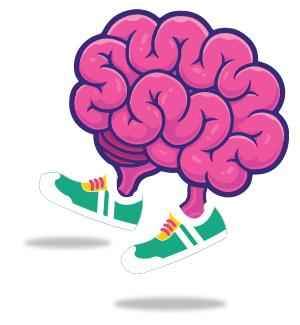
ШЁШ§ ЩҲШ¬ЩҲШҜ Ш§ЫҢЩҶЪ©ЩҮ ШҜЩҲЩҮШ§ЫҢ ШіШұЫҢШ№ШӘШұ ШӘШЈШ«ЫҢШұ ШЁЫҢШҙШӘШұЫҢ ШҜШұ ШіШ§Ш®ШӘ Ш№Ш¶Щ„Ш§ШӘ ШҙЩ…Ш§ ШҜШ§ШұЩҶШҜШҢ ШҜЩҲЩҶШҜЪҜШ§ЩҶ ШіШұШ№ШӘ ШЁШҜЩҲЩҶ ШҙЪ© Ш№Ш¶Щ„Ш§ЩҶЫҢвҖҢШӘШұ Ш§ШІ ШҜЩҲЩҶШҜЪҜШ§ЩҶ Ш§ШіШӘЩӮШ§Щ…ШӘ ЩҮШіШӘЩҶШҜШҢ Ш§Щ…Ш§ ШҜЩҲЩҮШ§ЫҢ ШўЩҮШіШӘЩҮвҖҢШӘШұ ШЁЩҮ ШұШЁШ§Ш·вҖҢЩҮШ§ШҢ Щ…ЩҒШ§ШөЩ„ ЩҲ Ш§ШіШӘШ®ЩҲШ§ЩҶвҖҢЩҮШ§ЫҢ ШҙЩ…Ш§ Ъ©Щ…Ъ© Щ…ЫҢвҖҢЪ©ЩҶШҜ ШӘШ§ ШЁШ§ ЩҒШҙШ§Шұ ШҜЩҲЫҢШҜЩҶ ШіШ§ШІЪҜШ§Шұ ШҙЩҲЩҶШҜ.
ШЁЩҮ ЪҜЩҒШӘЩҮ ШәШ§ШІШ§ШұЫҢШ§ЩҶШҢ В«ЩҮЩ…ЪҶЩҶЫҢЩҶ Ш§ЫҢЩҶ ЩҶЩҲШ№ ШҜЩҲЫҢШҜЩҶ ШЁШҜЩҲЩҶ ЩҒШҙШ§Шұ ШўЩҲШұШҜЩҶ ШҜШұ Щ„ШӯШёЩҮШҢ Ъ©ЩҮ Щ…Щ…Ъ©ЩҶ Ш§ШіШӘ Щ…ЩҶШ¬Шұ ШЁЩҮ ШўШіЫҢШЁ ШҙЩҲШҜШҢ Ш№Ш¶Щ„Ш§ШӘ ШұШ§ ШӘЩӮЩҲЫҢШӘ Щ…ЫҢвҖҢЪ©ЩҶШҜВ».
ШҜЩҲЩҮШ§ЫҢ ШўЩҮШіШӘЩҮвҖҢШӘШұ ЫҢЪ© Щ…ШІЫҢШӘ ШҜЫҢЪҜШұ ЩҮЩ… ШҜШ§ШұШҜ ЩҲ ШўЩҶ Ш§ЫҢЩҶ Ш§ШіШӘ Ъ©ЩҮ Щ…ЫҢвҖҢШӘЩҲШ§ЩҶЩҶШҜ ШЁЩҮ ШЁЩҮШЁЩҲШҜ ЩҒШұЩ… ШҜЩҲЫҢШҜЩҶ Ъ©Щ…Ъ© Ъ©ЩҶЩҶШҜШҢ ШІЫҢШұШ§ ШўЩҮШіШӘЩҮвҖҢШӘШұ ШҜЩҲЫҢШҜЩҶ ШӘЩ…ШұЪ©ШІ ШұЩҲЫҢ ШӘЪ©ЩҶЫҢЪ© ШұШ§ ШўШіШ§ЩҶвҖҢШӘШұ Щ…ЫҢвҖҢЪ©ЩҶШҜ.
ШҜШұ ШҜЩҲЩҮШ§ЫҢ ШіШұЫҢШ№вҖҢШӘШұ ЪҶШұШ®ЩҮ Ш®ЩҲЩҶ Ш§ШІ Щ…ШәШІ ШҜЩҲШұ Щ…ЫҢвҖҢШҙЩҲШҜ ШӘШ§ ШЁЩҮ ЩҶЫҢШ§ШІЩҮШ§ЫҢ Ш§Ъ©ШіЫҢЪҳЩҶЫҢ ШЁШҜЩҶ ЩҫШ§ШіШ® ШҜЩҮШҜШҢ Ъ©ЩҮ ШӘЩҲШ§ЩҶШ§ЫҢЫҢ ШӘЩ…ШұЪ©ШІ ШҙЩ…Ш§ ШұШ§ Ъ©Ш§ЩҮШҙ Щ…ЫҢвҖҢШҜЩҮШҜ.
ШЁЩҶШ§ШЁШұШ§ЫҢЩҶ ШўЩҮШіШӘЩҮ ШҜЩҲЫҢШҜЩҶ Щ…ЫҢвҖҢШӘЩҲШ§ЩҶШҜ ШЁЩҮ ШҙЩ…Ш§ Ъ©Щ…Ъ© Ъ©ЩҶШҜ ШӘШ§ ШұЩҲЫҢ ЩҒШұЩ… ШҜЩҲЫҢШҜЩҶ Ш®ЩҲШҜ ШЁЫҢШҙШӘШұ ШӘЩ…ШұЪ©ШІ Ъ©ЩҶЫҢШҜ.
ШҜШұ ЩҶЩҮШ§ЫҢШӘШҢ ШўЩҮШіШӘЩҮвҖҢШӘШұ ШҜЩҲЫҢШҜЩҶ ЩҶЫҢШІ ШҜШ§ШұШ§ЫҢ Щ…ШІШ§ЫҢШ§ЫҢ Ш°ЩҮЩҶЫҢ ШЁШіЫҢШ§Шұ Ш®ЩҲШЁЫҢ Ш§ШіШӘ.
ЩҲЩӮШӘЫҢ ШҙЩ…Ш§ ШЁЫҢШҙШӘШұ ШұЩҲЫҢ Щ…ШҜШӘ ШІЩ…Ш§ЩҶ ШҜЩҲЫҢШҜЩҶ ШӘЩ…ШұЪ©ШІ Щ…ЫҢвҖҢЪ©ЩҶЫҢШҜ ШӘШ§ ШіШұШ№ШӘШҢ ЫҢШ§ШҜ Щ…ЫҢвҖҢЪҜЫҢШұЫҢШҜ Ъ©ЩҮ Ш§ШІ Щ…ЩҲШ§ЩҶШ№ Ш°ЩҮЩҶЫҢ ЩҲ ШіШ®ШӘЫҢвҖҢЩҮШ§ЫҢ ЩҒЫҢШІЫҢЪ©ЫҢШҢ ШЁЩҮ Ш®ШөЩҲШө ШҜШұ Ш§ЩҲШ§Ш®Шұ ЫҢЪ© Щ…ШіШ§ШЁЩӮЩҮ Ш·ЩҲЩ„Ш§ЩҶЫҢШҢ Ш№ШЁЩҲШұ Ъ©ЩҶЫҢШҜ.

ШҜЩҲЫҢШҜЩҶ ШЁШ§ ШҜЩҲШіШӘЫҢ Ъ©ЩҮ Ъ©Щ…ЫҢ ШўЩҮШіШӘЩҮвҖҢШӘШұ Ш§ШіШӘ ЩҶЩҮ ШӘЩҶЩҮШ§ ШұШ§ЩҮ Ш®ЩҲШЁЫҢ ШЁШұШ§ЫҢ Ш§ЩҶШ¶ШЁШ§Ш· ШЁШ®ШҙЫҢШҜЩҶ ШЁЩҮ ШӘЩ…Ш§ЫҢЩ„ ШҙЩ…Ш§ ШЁЩҮ ШіШұШ№ШӘ ЪҜШұЩҒШӘЩҶ Ш§ШіШӘШҢ ШЁЩ„Ъ©ЩҮ Ш§ЩҶЪҜЫҢШІЩҮ ШЁШ®Шҙ ЩҮЩ… ЩҮШіШӘШҢ Щ…Ш«Щ„Ш§ЩӢШҢ Ъ©Щ…Ъ© ШЁЩҮ ШҜЩҲШіШӘШӘШ§ЩҶ ШЁШұШ§ЫҢ ШұШіЫҢШҜЩҶ ШЁЩҮ ЫҢЪ© ШұЪ©ЩҲШұШҜ ШІЩ…Ш§ЩҶЫҢ ЫҢШ§ Щ…ШіШ§ЩҒШӘЫҢ.
ЩҮШұ ЪҶЩҶШҜ ЩҲЩӮШӘ ШЁШ§ЫҢШҜ ШўЩҮШіШӘЩҮвҖҢШӘШұ ШЁШҜЩҲЫҢШҜШҹ
Щ…Щ…Ъ©ЩҶ Ш§ШіШӘ ШЁШұШ§ЫҢ ШҙЩ…Ш§ ШӘШ№Ш¬ШЁвҖҢШўЩҲШұ ШЁШ§ШҙШҜШҢ Ш§Щ…Ш§ ШЁЫҢШҙШӘШұ ШҜЩҲЩҮШ§ЫҢ ШҙЩ…Ш§ ШЁШ§ЫҢШҜ ШўЩҮШіШӘЩҮ ШЁШ§ШҙЩҶШҜ.
В ШұЩҲШІШӘЫҢ Щ…ЫҢвҖҢЪҜЩҲЫҢШҜ: В«ШЁШұШ§ЫҢ Ъ©ШіЫҢ Ъ©ЩҮ ШӯШұЩҒЩҮвҖҢЫҢ ШҜЫҢЪҜШұЫҢ ШҜШ§ШұШҜ ЩҲ ШӘЩҒШұЫҢШӯЫҢ Щ…ЫҢвҖҢШҜЩҲШҜШҢ Щ…Ш§ ШӘЩҲШөЫҢЩҮ Щ…ЫҢвҖҢЪ©ЩҶЫҢЩ… Ъ©ЩҮ ЫҢЪ© Ш¬Щ„ШіЩҮ ШҜЩҲЫҢ ШіШұЫҢШ№ШҢ ЫҢЪ© ШҜЩҲЫҢ Ш·ЩҲЩ„Ш§ЩҶЫҢ ШЁШ§ ШіШұШ№ШӘ ШўЩҮШіШӘЩҮ ЩҲ ШҜЩҲ ШӘШ§ ШіЩҮ ШҜЩҲЫҢ Ъ©ЩҲШӘШ§ЩҮвҖҢШӘШұ ЩҲ ШўЩҮШіШӘЩҮ Ш§ЩҶШ¬Ш§Щ… ШҜЩҮШҜ.В»
ЫҢШ№ЩҶЫҢ ЪҶЩҮШ§Шұ Ш¬Щ„ШіЩҮ Ш§ШІ ЩҫЩҶШ¬ Ш¬Щ„ШіЩҮ ШҜЩҲ ШЁШ§ ШіШұШ№ШӘЫҢ Ш§ЩҶШ¬Ш§Щ… Щ…ЫҢвҖҢШҙЩҲШҜ Ъ©ЩҮ ШЁШӘЩҲШ§ЩҶ ШӯЫҢЩҶ ШўЩҶ Щ…Ъ©Ш§Щ„Щ…ЩҮ Ъ©ШұШҜ.
В ШІШ§ЩҫЩҲШӘЪҶЩҶ Щ…ЫҢвҖҢЪҜЩҲЫҢШҜ: В«ШЁШұШ§ЫҢ Щ…ШұШҜЩ… ШіШ®ШӘ Ш§ШіШӘ Ъ©ЩҮ ШіШұШ№ШӘ Ш®ЩҲШҜ ШұШ§ ЩҫШ§ЫҢЫҢЩҶ ШЁЫҢШ§ЩҲШұЩҶШҜ ЫҢШ§ ШЁШ§ ШіШұШ№ШӘ ШӘЩ…ЩҫЩҲЫҢЫҢ ШЁШҜЩҲЩҶШҜ Ъ©ЩҮ ЩӮШ§ШЁЩ„ЫҢШӘ Ш§ЫҢЩҶ ШұШ§ ШҜШ§ШҙШӘЩҮ ШЁШ§ШҙШҜ Ъ©ЩҮ ШЁШӘЩҲШ§ЩҶЩҶШҜ ШӯЫҢЩҶ ШҜЩҲЫҢШҜЩҶ Щ…Ъ©Ш§Щ„Щ…ЩҮ ЩҮЩ… ШҜШ§ШҙШӘЩҮ ШЁШ§ШҙЩҶШҜ.
ЩҮШұ ШҜЩҲЫҢШҜЩҶЫҢ ЩҮШҜЩҒЫҢ ШҜШ§ШұШҜ ЩҲ Ш§ЫҢЩҶ ШҜЩҲЩҮШ§ЫҢ ШЁШ§ ШіШұШ№ШӘ ЩҫШ§ЫҢЫҢЩҶ ЩӮШөШҜ ШҜШ§ШұЩҶШҜ ШЁЩҮ ШҙЩ…Ш§ Ъ©Щ…Ъ© Ъ©ЩҶЩҶШҜ ШӘШ§ ШЁЫҢШі Щ…ШіШ§ЩҒШӘЫҢ Ъ©ЩҮ Щ…ЫҢвҖҢШҜЩҲЫҢШҜ ЩҲ ЫҢШ§ ШіШ·Шӯ ШӘЩҶШ§ШіШЁ Ш§ЩҶШҜШ§Щ… Ш®ЩҲШҜ ШұШ§ Ш§ЩҒШІШ§ЫҢШҙ ШҜЩҮЫҢШҜ.В»

ШәШ§ШІШ§ШұЫҢШ§ЩҶ Щ…ЫҢвҖҢЪҜЩҲЫҢШҜ: В«ШҜЩҲЫҢШҜЩҶ Ш®ЫҢЩ„ЫҢ ШіШұЫҢШ№ШҢ ЪҜШ§ЩҮШ§ЩӢ ЩҶЩҮ ШӘЩҶЩҮШ§ Ш®Ш·Шұ ШўШіЫҢШЁ ШұШ§ Ш§ЩҒШІШ§ЫҢШҙ Щ…ЫҢвҖҢШҜЩҮШҜШҢ ШЁЩ„Ъ©ЩҮ Щ…ЫҢвҖҢШӘЩҲШ§ЩҶШҜ ШҜШұ ШіШ·Шӯ Ш№Щ…Щ„Ъ©ШұШҜ ЩҮЩ… ШӘШЈШ«ЫҢШұ Щ…ЩҶЩҒЫҢ ШҜШ§ШҙШӘЩҮ ШЁШ§ШҙШҜ. ШҙЩ…Ш§ ЩҶЩ…ЫҢ ШӘЩҲШ§ЩҶЫҢШҜ ЩҒЫҢШЁШұЩҮШ§ЫҢ Ш№Ш¶Щ„Ш§ЩҶЫҢ ШӘЩҶШҜ Ш§ЩҶЩӮШЁШ§Ш¶ (ЩҶЩҲШ№ 2) Ъ©ЩҮ ШЁШұШ§ЫҢ ШӘШӯЩ…Щ„ ЫҢЪ© Щ…ШіШ§ШЁЩӮЩҮ Ш·ЩҲЩ„Ш§ЩҶЫҢ Щ„Ш§ШІЩ… Ш§ШіШӘ ШұШ§ ШӘЩҲШіШ№ЩҮ ШҜЩҮЫҢШҜВ».
ШЁЩҮ ЪҜЩҒШӘЩҮ ШұЩҲШІШӘЫҢ: В«ЩҒЫҢШЁШұЩҮШ§ЫҢ Ш№Ш¶Щ„Ш§ЩҶЫҢ ШӘЩҶШҜ Ш§ЩҶЩӮШЁШ§Ш¶ ШЁШұШ§ЫҢ ШўШ®ШұЫҢЩҶ ШӘЩ„Ш§ШҙвҖҢЩҮШ§ЫҢ ШҙЩ…Ш§ ШҜШұ Щ„ШӯШёШ§ШӘ ЩҫШ§ЫҢШ§ЩҶЫҢ Щ…ШіШ§ШЁЩӮЩҮ ШЁШіЫҢШ§Шұ Щ…ЩҮЩ… ЩҮШіШӘЩҶШҜ.
ШЁШҜЩҲЩҶ Ъ©Щ…Ъ© ЩҒЫҢШЁШұЩҮШ§ЫҢ Ш№Ш¶Щ„Ш§ЩҶЫҢ ШӘЩҶШҜ Ш§ЩҶЩӮШЁШ§Ш¶ШҢ ЩӮШҜШұШӘ ШҜЩҲЫҢШҜЩҶ ШЁШ§ ШӯШҜШ§Ъ©Ш«Шұ ШіШұШ№ШӘ Ш®ЩҲШҜ ШұШ§ ШҜШұ ЩҫШ§ЫҢШ§ЩҶ ЩҶШ®ЩҲШ§ЩҮЫҢШҜ ШҜШ§ШҙШӘШҢ
ЩҮЩ…ЪҶЩҶЫҢЩҶ Ш§ШіШӘШұШ§ШӯШӘ ЩҲ ШұЫҢЪ©Ш§ЩҲШұЫҢ Ш®ЩҲШЁЫҢ ЩҮЩ… ЩҶШ®ЩҲШ§ЩҮЫҢШҜ ШҜШ§ШҙШӘВ».
Ш§ЩҲ ШҜШұ Ш§ШҜШ§Щ…ЩҮ Ш§Ш¶Ш§ЩҒЩҮ Щ…ЫҢвҖҢЪ©ЩҶШҜ Ъ©ЩҮ: В«ШЁЩҶШ§ШЁШұШ§ЫҢЩҶ ШҙЩ…Ш§ ШЁШ§ Ш®Ш·Шұ ШўШіЫҢШЁ ШЁЫҢШҙШӘШұЫҢ ЩҲШ§ШұШҜ ШӘЩ…ШұЫҢЩҶШ§ШӘ ШЁШ№ШҜЫҢ ШіШұШ№ШӘЫҢ ЫҢШ§ ШӘЪ©ЩҶЫҢЪ©ЫҢ Ш®ЩҲШҜ Щ…ЫҢвҖҢШҙЩҲЫҢШҜШҢ Щ…Щ…Ъ©ЩҶ Ш§ШіШӘ ШҜЪҶШ§Шұ Щ…ШҙЪ©Щ„Ш§ШӘ ШӯШ§ШҜШӘШұЫҢ ШҙШҜЩҮ ЩҲ ШҜШұ Ш§ШҜШ§Щ…ЩҮ Ш«ШЁШ§ШӘ ЩӮШҜЩ… Ъ©Ш§ЩҒЫҢ ЩҶШҜШ§ШҙШӘЩҮ ШЁШ§ШҙЫҢШҜ ЩҲ ШҜШұ Ш·ЩҲЩ„Ш§ЩҶЫҢ Щ…ШҜШӘ ЩҫЫҢШҙШұЩҒШӘ ЪҶШҙЩ… ЪҜЫҢШұЫҢ ЩҶЪ©ЩҶЫҢШҜ.
ШЁЩҶШ§ШЁШұШ§ЫҢЩҶ ЩҮЩ…ЫҢЩҶ ШӘЪ©Ш§ШӘ ШёШұЫҢЩҒ Щ…ЫҢвҖҢШӘЩҲШ§ЩҶЩҶШҜ ШӘЩҒШ§ЩҲШӘвҖҢЩҮШ§ЫҢ ШЁШІШұЪҜЫҢ Ш§ЫҢШ¬Ш§ШҜ Ъ©ЩҶЩҶШҜ.
ЩҮШұ ЪҶЩӮШҜШұ ЩҮЩ… Ъ©ЩҮ ШЁШ®ЩҲШ§ЩҮЫҢШҜ ШҜЩҲЩҮШ§ЫҢ Ъ©ЩҲШӘШ§ЩҮвҖҢШӘШұ ЩҲ ШўШіШ§ЩҶвҖҢШӘШұ ШұШ§ ЩҒЩӮШ· ШЁШұШ§ЫҢ Ш§ЩҶШ¬Ш§Щ… ШҜШ§ШҜЩҶШҙШ§ЩҶ Ш§ЩҶШ¬Ш§Щ… ШҜЩҮЫҢШҜШҢ ШЁШ§ШІ ЩҮЩ… ЩҶЩ…ЫҢвҖҢШӘЩҲШ§ЩҶЫҢШҜ Ш®ЫҢЩ„ЫҢ ШЁЩҮ Ш®ЩҲШҜШӘШ§ЩҶ ЩҒШҙШ§Шұ ШЁЫҢШ§ЩҲШұЫҢШҜ.
ШЁШұШ§ЫҢ ШіШ§Щ„Щ… Щ…Ш§ЩҶШҜЩҶ ШҜШұ Ш·ЩҲЩ„Ш§ЩҶЫҢ Щ…ШҜШӘ ШЁШ§ЫҢШҜ ЩҮШҜЩҒЩ…ЩҶШҜ ШЁШҜЩҲЫҢШҜ ЩҲ ЪҜШ§ЩҮЫҢ Ш§ЩҲЩӮШ§ШӘШҢ ЩҮШҜЩҒЩ…ЩҶШҜЫҢ ШЁЩҮ Щ…Ш№ЩҶШ§ЫҢ Ш§ЫҢЩҶ Ш§ШіШӘ Ъ©ЩҮ ШЁШіЫҢШ§Шұ ШөШЁЩҲШұ ЩҲ ШЁШ§ Ш·Щ…ШЈЩҶЫҢЩҶЩҮ ШЁШ§ШҙЫҢШҜ.
|


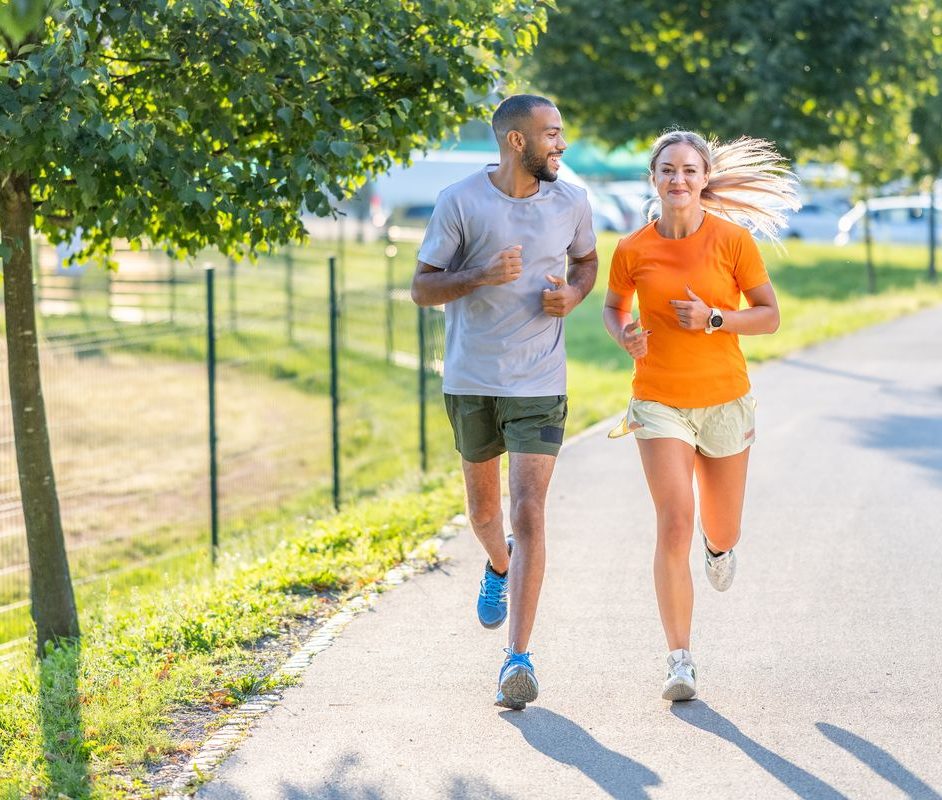
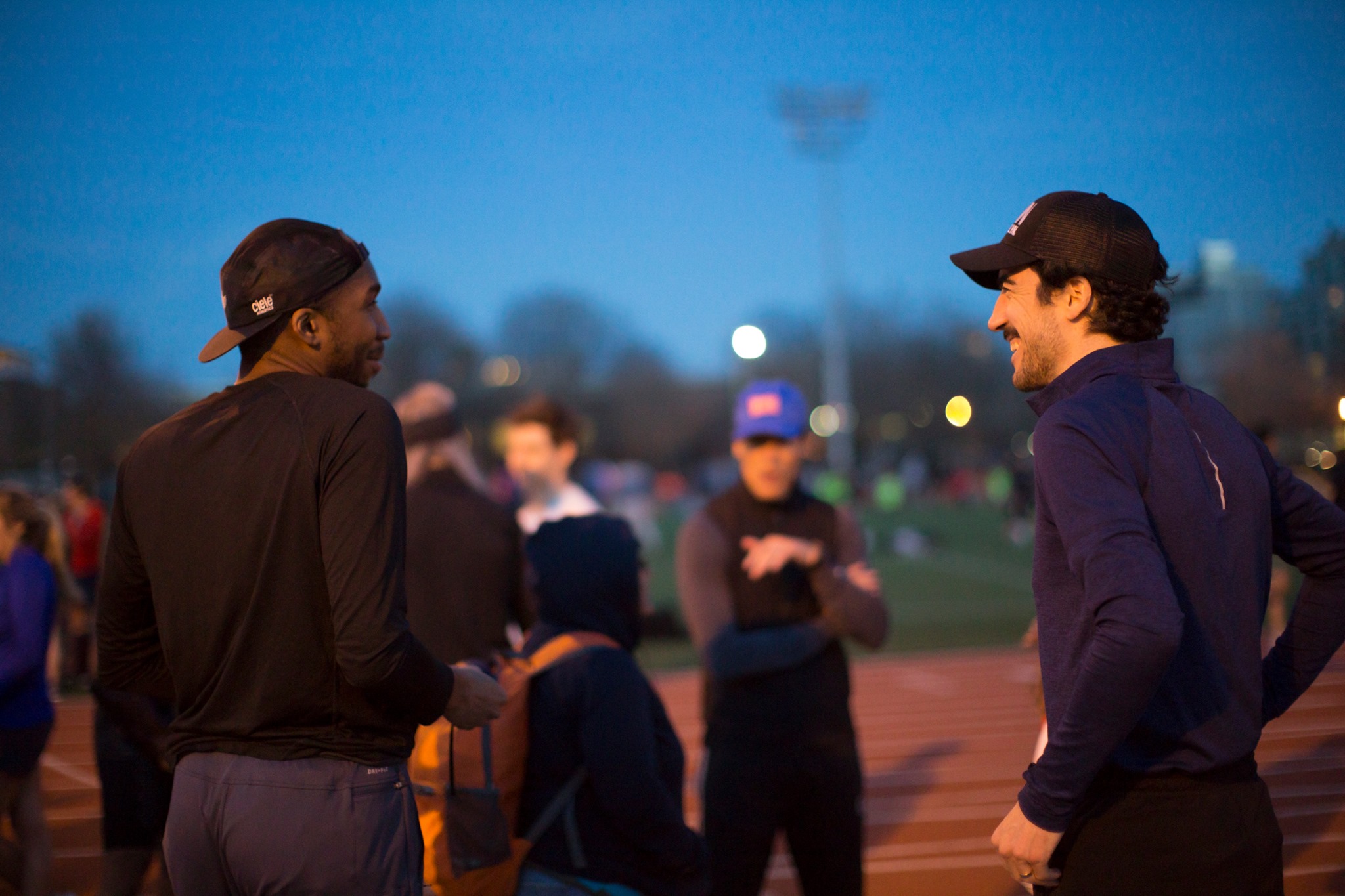



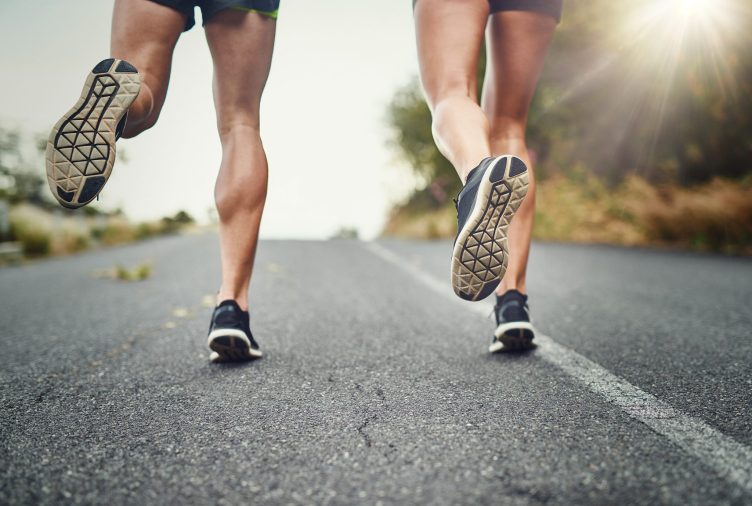
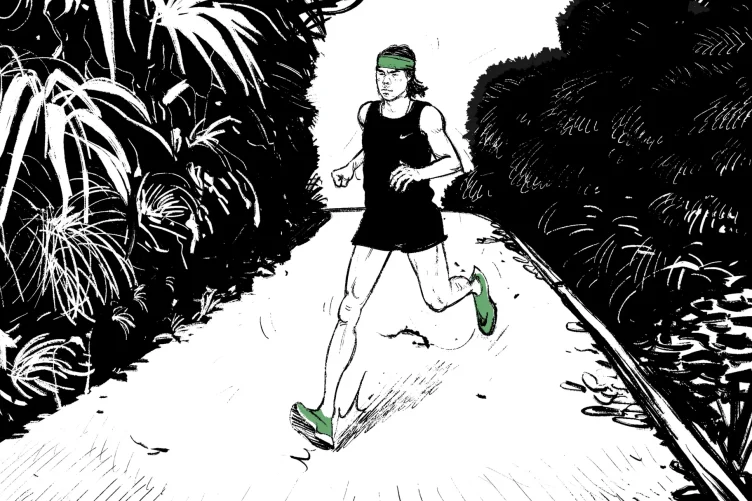
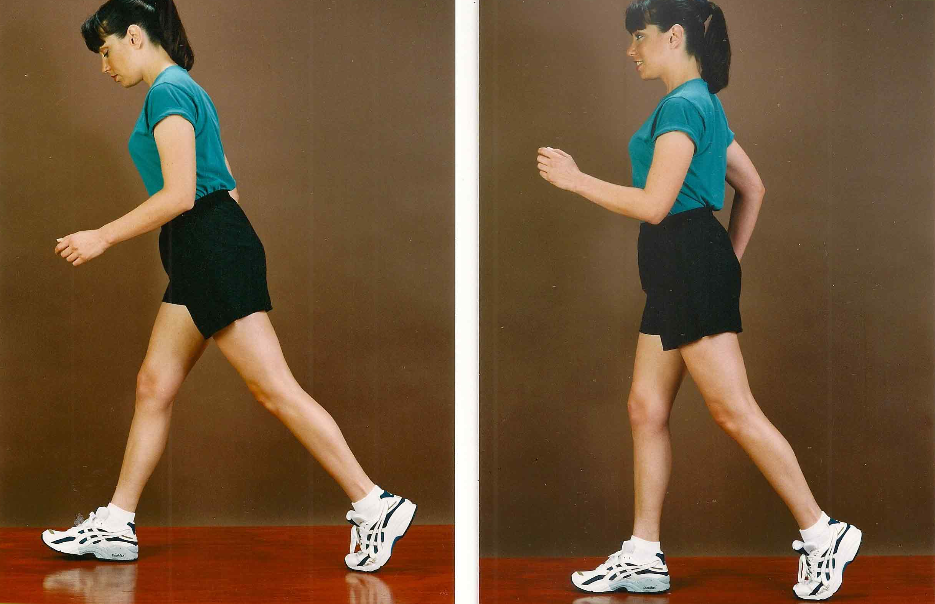
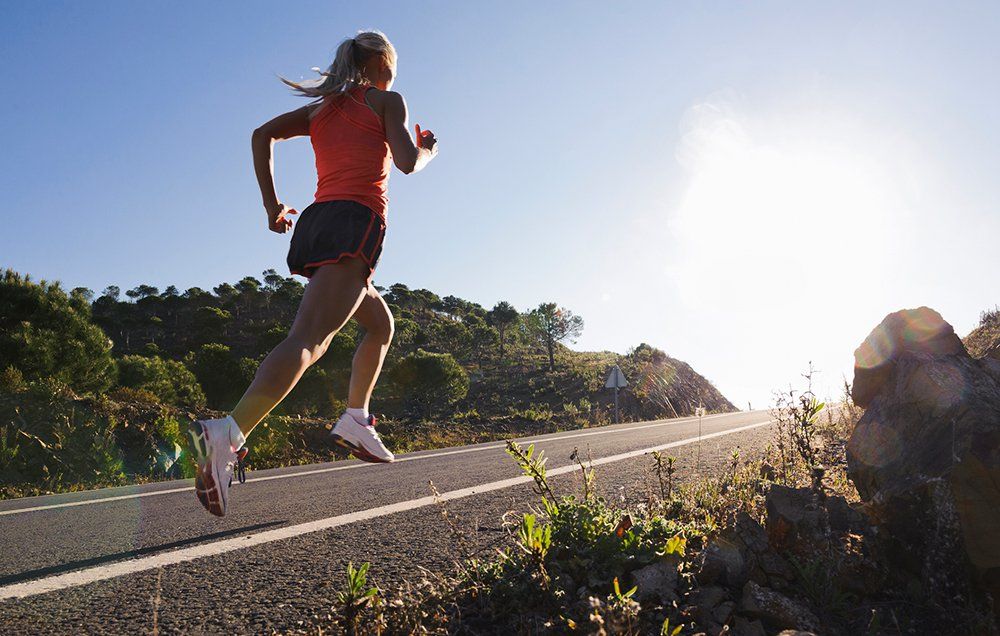 Ыі. ШЁШұШ§ЫҢ ШҜЩҲЫҢШҜЩҶ ШҜШұ ШҙЫҢШЁ ШўЩ…Ш§ШҜЩҮ ШЁШ§ШҙЫҢШҜ
Ыі. ШЁШұШ§ЫҢ ШҜЩҲЫҢШҜЩҶ ШҜШұ ШҙЫҢШЁ ШўЩ…Ш§ШҜЩҮ ШЁШ§ШҙЫҢШҜ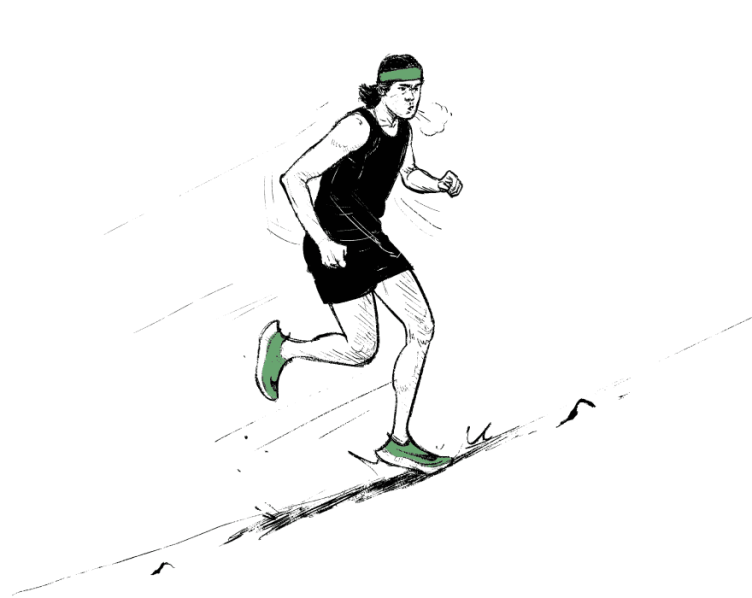

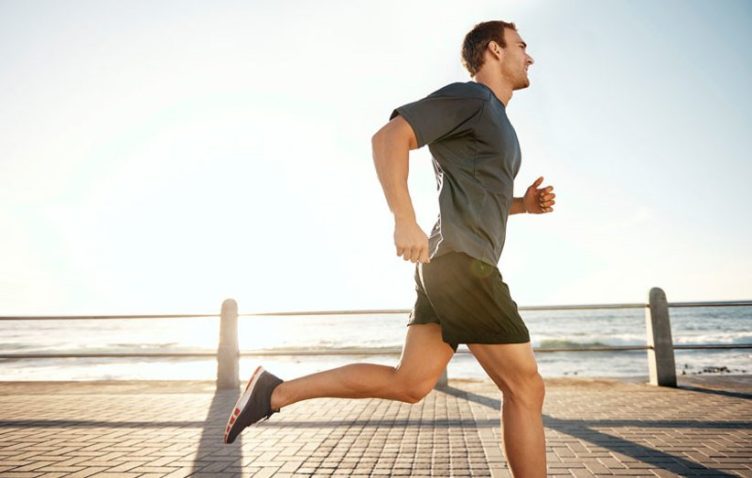
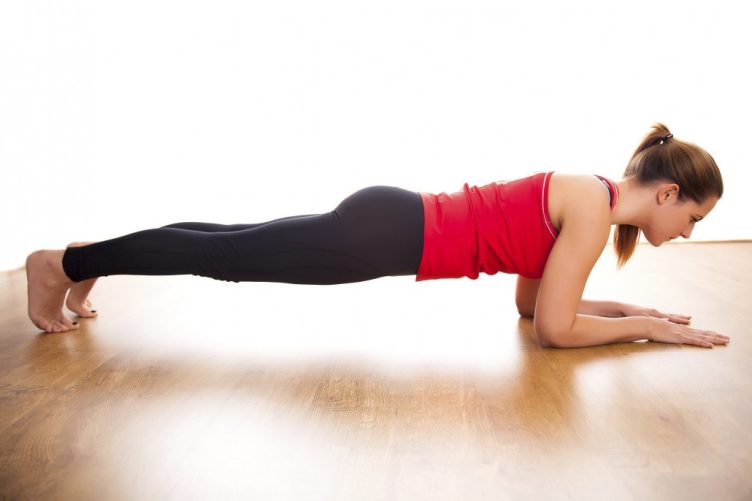
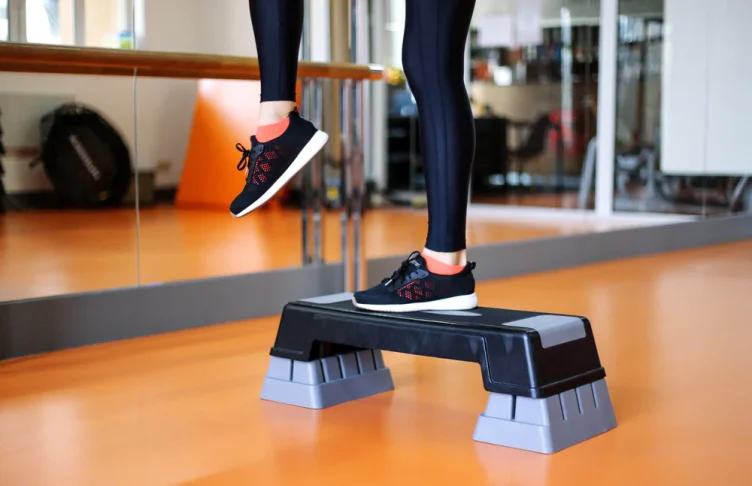

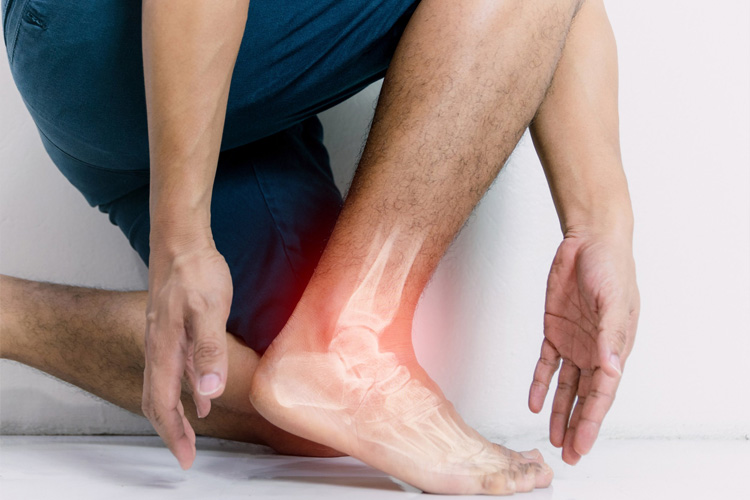
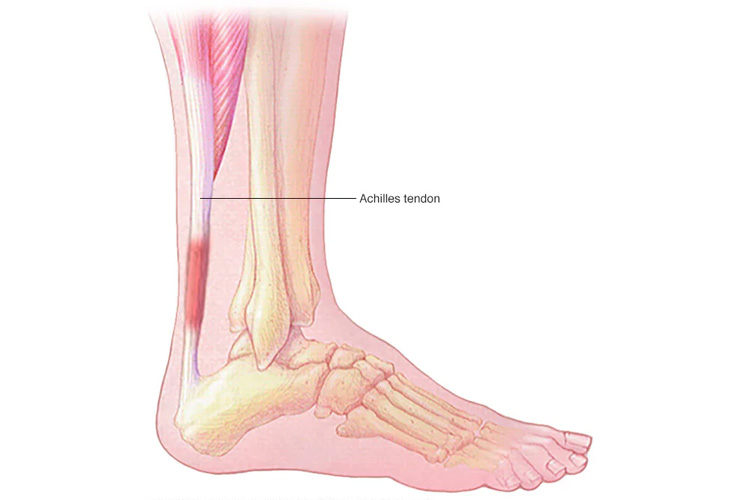
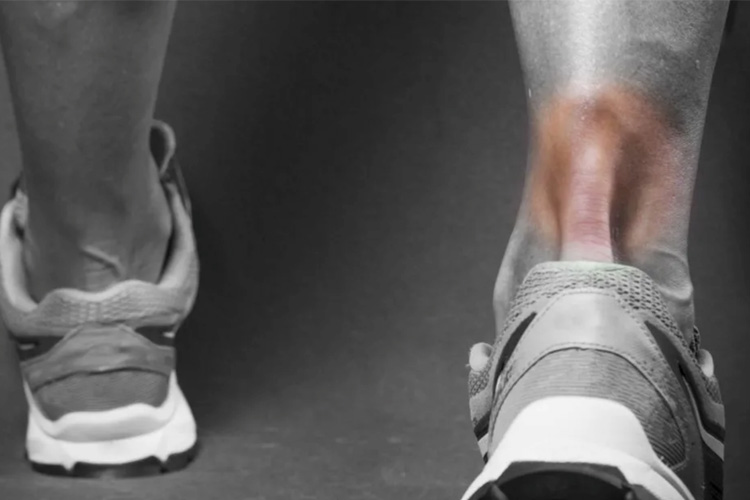
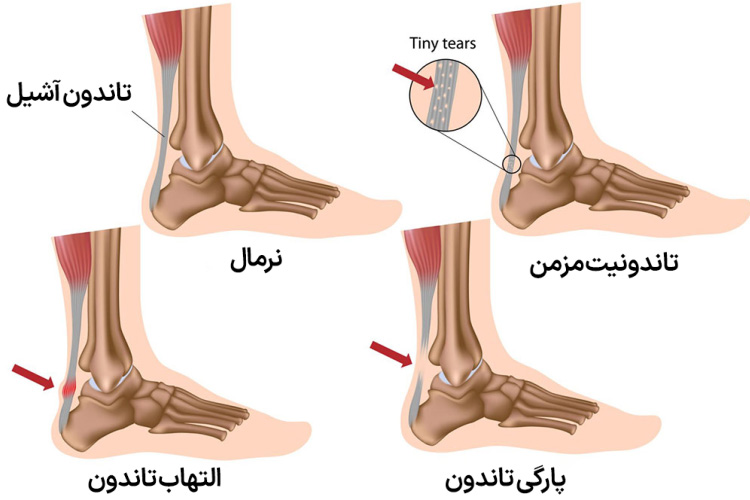
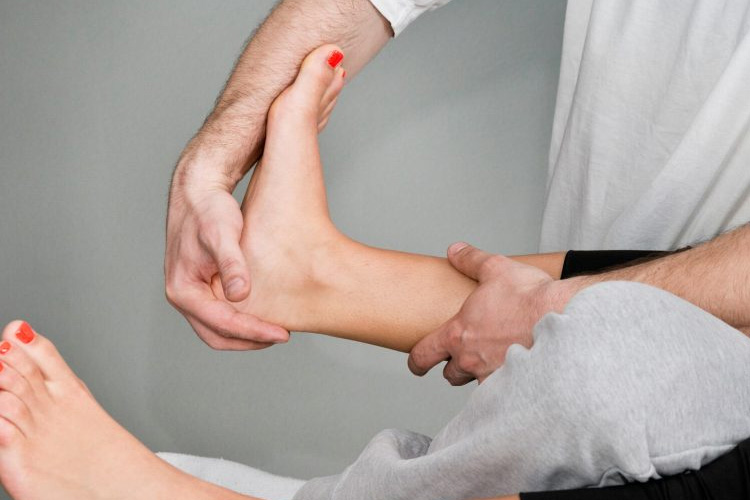
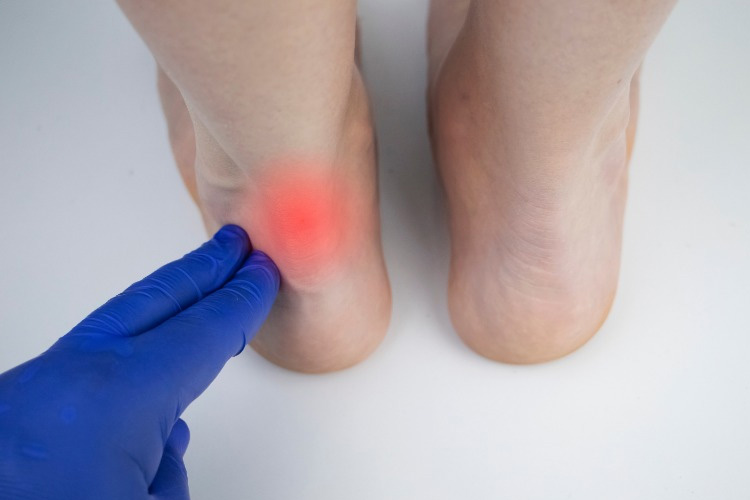 ШӘШ§ЩҶШҜЩҲЩҶ ШўШҙЫҢЩ„ ШЁШ§ Ш§ЩҒШІШ§ЫҢШҙ ШіЩҶ Ш¶Ш№ЫҢЩҒ Щ…ЫҢвҖҢШҙЩҲШҜШҢ Ъ©ЩҮ Ш§ЫҢЩҶ Щ…ЫҢвҖҢШӘЩҲШ§ЩҶШҜ В ШӘШ§ЩҶШҜЩҲЩҶ ШұШ§ Щ…ШіШӘШ№ШҜ ШўШіЫҢШЁвҖҢШҜЫҢШҜЪҜЫҢ Ъ©ЩҶШҜШҢ ШЁЩҮвҖҢЩҲЫҢЪҳЩҮ ШҜШұ Ш§ЩҒШұШ§ШҜЫҢ Ъ©ЩҮ Щ…Щ…Ъ©ЩҶ Ш§ШіШӘ ЩҒЩӮШ· ШҜШұ ШӘШ№Ш·ЫҢЩ„Ш§ШӘ ШўШ®Шұ ЩҮЩҒШӘЩҮ ШҜШұ ЩҲШұШІШҙ ШҙШұЪ©ШӘ Ъ©ЩҶЩҶШҜ ЫҢШ§ ШЁЩҮ Ш·ЩҲШұ ЩҶШ§ЪҜЩҮШ§ЩҶЫҢ ШҙШҜШӘ ШЁШұЩҶШ§Щ…ЩҮвҖҢЩҮШ§ЫҢ ШҜЩҲЫҢШҜЩҶ Ш®ЩҲШҜ ШұШ§ Ш§ЩҒШІШ§ЫҢШҙ ШҜЩҮЩҶШҜ.
ШӘШ§ЩҶШҜЩҲЩҶ ШўШҙЫҢЩ„ ШЁШ§ Ш§ЩҒШІШ§ЫҢШҙ ШіЩҶ Ш¶Ш№ЫҢЩҒ Щ…ЫҢвҖҢШҙЩҲШҜШҢ Ъ©ЩҮ Ш§ЫҢЩҶ Щ…ЫҢвҖҢШӘЩҲШ§ЩҶШҜ В ШӘШ§ЩҶШҜЩҲЩҶ ШұШ§ Щ…ШіШӘШ№ШҜ ШўШіЫҢШЁвҖҢШҜЫҢШҜЪҜЫҢ Ъ©ЩҶШҜШҢ ШЁЩҮвҖҢЩҲЫҢЪҳЩҮ ШҜШұ Ш§ЩҒШұШ§ШҜЫҢ Ъ©ЩҮ Щ…Щ…Ъ©ЩҶ Ш§ШіШӘ ЩҒЩӮШ· ШҜШұ ШӘШ№Ш·ЫҢЩ„Ш§ШӘ ШўШ®Шұ ЩҮЩҒШӘЩҮ ШҜШұ ЩҲШұШІШҙ ШҙШұЪ©ШӘ Ъ©ЩҶЩҶШҜ ЫҢШ§ ШЁЩҮ Ш·ЩҲШұ ЩҶШ§ЪҜЩҮШ§ЩҶЫҢ ШҙШҜШӘ ШЁШұЩҶШ§Щ…ЩҮвҖҢЩҮШ§ЫҢ ШҜЩҲЫҢШҜЩҶ Ш®ЩҲШҜ ШұШ§ Ш§ЩҒШІШ§ЫҢШҙ ШҜЩҮЩҶШҜ.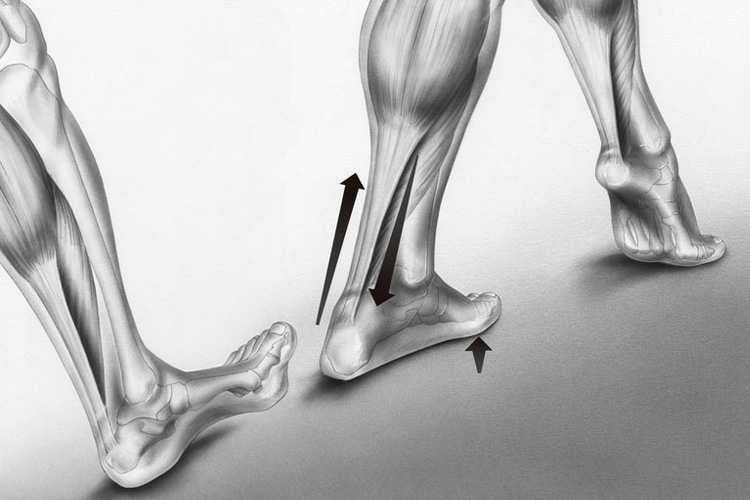 Щ…ШҙЪ©Щ„Ш§ШӘ Ш¬ШіЩ…ЫҢ: Ъ©ЩҒ ЩҫШ§ЫҢ ШөШ§ЩҒ Щ…ЫҢ ШӘЩҲШ§ЩҶШҜ ЩҒШҙШ§Шұ ШЁЫҢШҙШӘШұЫҢ ШЁЩҮ ШӘШ§ЩҶШҜЩҲЩҶ ШўШҙЫҢЩ„ ЩҲШ§ШұШҜ Ъ©ЩҶШҜ. ЪҶШ§ЩӮЫҢ ЩҲ ЪҜШұЩҒШӘЪҜЫҢ Ш№Ш¶Щ„Ш§ШӘ ШіШ§ЩӮ ЩҫШ§ ЩҶЫҢШІ Щ…ЫҢ ШӘЩҲШ§ЩҶШҜ ШЁШ§Ш№Ш« Ш§ЩҒШІШ§ЫҢШҙ ЩҒШҙШ§Шұ ШЁЩҮ ШӘШ§ЩҶШҜЩҲЩҶ ШҙЩҲШҜ.
Щ…ШҙЪ©Щ„Ш§ШӘ Ш¬ШіЩ…ЫҢ: Ъ©ЩҒ ЩҫШ§ЫҢ ШөШ§ЩҒ Щ…ЫҢ ШӘЩҲШ§ЩҶШҜ ЩҒШҙШ§Шұ ШЁЫҢШҙШӘШұЫҢ ШЁЩҮ ШӘШ§ЩҶШҜЩҲЩҶ ШўШҙЫҢЩ„ ЩҲШ§ШұШҜ Ъ©ЩҶШҜ. ЪҶШ§ЩӮЫҢ ЩҲ ЪҜШұЩҒШӘЪҜЫҢ Ш№Ш¶Щ„Ш§ШӘ ШіШ§ЩӮ ЩҫШ§ ЩҶЫҢШІ Щ…ЫҢ ШӘЩҲШ§ЩҶШҜ ШЁШ§Ш№Ш« Ш§ЩҒШІШ§ЫҢШҙ ЩҒШҙШ§Шұ ШЁЩҮ ШӘШ§ЩҶШҜЩҲЩҶ ШҙЩҲШҜ.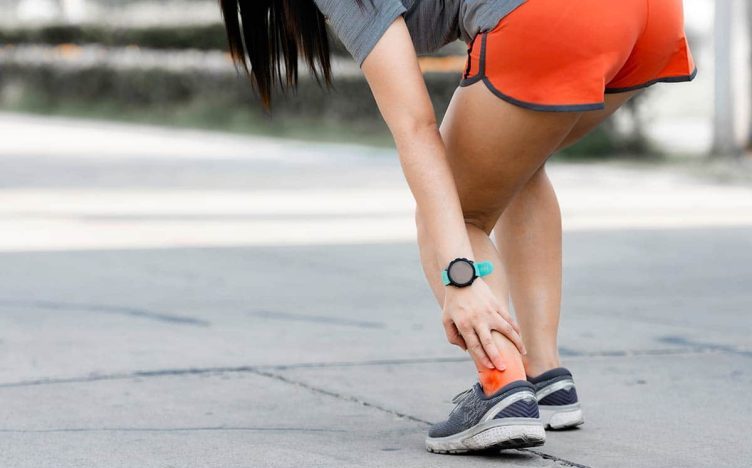
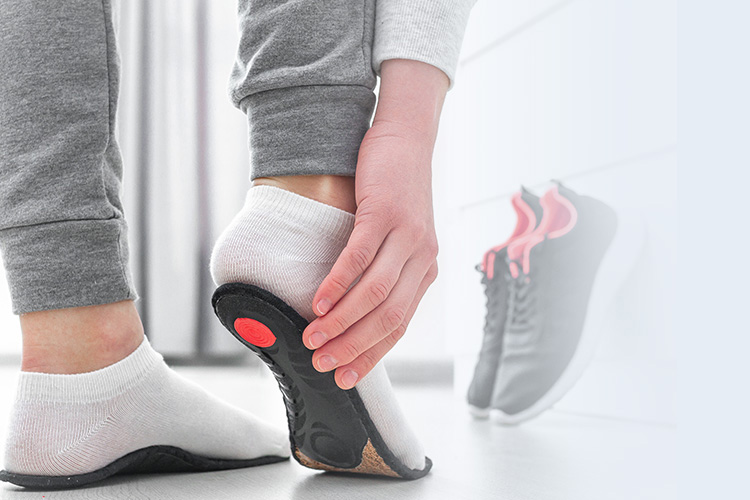 Ъ©ЩҒШҙ ЩҮШ§ЫҢ Ш®ЩҲШҜ ШұШ§ ШЁШ§ ШҜЩӮШӘ Ш§ЩҶШӘШ®Ш§ШЁ Ъ©ЩҶЫҢШҜ: Ъ©ЩҒШҙЫҢ Ъ©ЩҮ ШҜШұ ШӯЫҢЩҶ ЩҲШұШІШҙ Щ…ЫҢ ЩҫЩҲШҙЫҢШҜ ШЁШ§ЫҢШҜ ШЁШ§Щ„ШҙШӘЪ© Щ…ЩҶШ§ШіШЁЫҢ ШЁШұШ§ЫҢ ЩҫШ§ШҙЩҶЩҮ ЩҫШ§ ШҜШ§ШҙШӘЩҮ ШЁШ§ШҙШҜ ЩҲ ШЁШ§ЫҢШҜ ШҜШ§ШұШ§ЫҢ ЫҢЪ© ЩӮЩҲШі Щ…ШӯЪ©Щ… ШЁШ§ШҙШҜ ШӘШ§ ШЁЩҮ Ъ©Ш§ЩҮШҙ ШӘЩҶШҙ ШҜШұ ШӘШ§ЩҶШҜЩҲЩҶ ШўШҙЫҢЩ„ Ъ©Щ…Ъ© Ъ©ЩҶШҜ.
Ъ©ЩҒШҙ ЩҮШ§ЫҢ Ш®ЩҲШҜ ШұШ§ ШЁШ§ ШҜЩӮШӘ Ш§ЩҶШӘШ®Ш§ШЁ Ъ©ЩҶЫҢШҜ: Ъ©ЩҒШҙЫҢ Ъ©ЩҮ ШҜШұ ШӯЫҢЩҶ ЩҲШұШІШҙ Щ…ЫҢ ЩҫЩҲШҙЫҢШҜ ШЁШ§ЫҢШҜ ШЁШ§Щ„ШҙШӘЪ© Щ…ЩҶШ§ШіШЁЫҢ ШЁШұШ§ЫҢ ЩҫШ§ШҙЩҶЩҮ ЩҫШ§ ШҜШ§ШҙШӘЩҮ ШЁШ§ШҙШҜ ЩҲ ШЁШ§ЫҢШҜ ШҜШ§ШұШ§ЫҢ ЫҢЪ© ЩӮЩҲШі Щ…ШӯЪ©Щ… ШЁШ§ШҙШҜ ШӘШ§ ШЁЩҮ Ъ©Ш§ЩҮШҙ ШӘЩҶШҙ ШҜШұ ШӘШ§ЩҶШҜЩҲЩҶ ШўШҙЫҢЩ„ Ъ©Щ…Ъ© Ъ©ЩҶШҜ.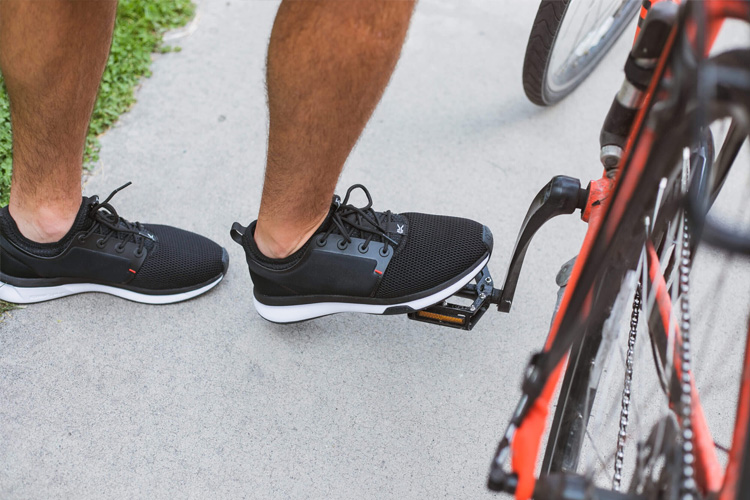 Ш№Ш¶Щ„Ш§ШӘ ШіШ§ЩӮ ЩҫШ§ ШұШ§ ШӘЩӮЩҲЫҢШӘ Ъ©ЩҶЫҢШҜ: ШӘЩӮЩҲЫҢШӘ Щ…Ш§ЩҮЫҢЪҶЩҮ ЩҮШ§ЫҢ ШіШ§ЩӮ ЩҫШ§ШҢ ШЁЩҮ ШіШ§ЩӮ ЩҫШ§ ЩҲ ШӘШ§ЩҶШҜЩҲЩҶ ШўШҙЫҢЩ„ Ш§ЫҢЩҶ Ш§Щ…Ъ©Ш§ЩҶ ШұШ§ Щ…ЫҢ ШҜЩҮШҜ Ъ©ЩҮ Ш§ШіШӘШұШі ЩҮШ§ЫҢЫҢ ШұШ§ Ъ©ЩҮ ШҜШұ ЩҒШ№Ш§Щ„ЫҢШӘ ЩҲ ЩҲШұШІШҙ ШЁШ§ ШўЩҶ Щ…ЩҲШ§Ш¬ЩҮ Щ…ЫҢ ШҙЩҲЩҶШҜ ШЁЩҮШӘШұ ШӘШӯЩ…Щ„ Ъ©ЩҶЩҶШҜ.
Ш№Ш¶Щ„Ш§ШӘ ШіШ§ЩӮ ЩҫШ§ ШұШ§ ШӘЩӮЩҲЫҢШӘ Ъ©ЩҶЫҢШҜ: ШӘЩӮЩҲЫҢШӘ Щ…Ш§ЩҮЫҢЪҶЩҮ ЩҮШ§ЫҢ ШіШ§ЩӮ ЩҫШ§ШҢ ШЁЩҮ ШіШ§ЩӮ ЩҫШ§ ЩҲ ШӘШ§ЩҶШҜЩҲЩҶ ШўШҙЫҢЩ„ Ш§ЫҢЩҶ Ш§Щ…Ъ©Ш§ЩҶ ШұШ§ Щ…ЫҢ ШҜЩҮШҜ Ъ©ЩҮ Ш§ШіШӘШұШі ЩҮШ§ЫҢЫҢ ШұШ§ Ъ©ЩҮ ШҜШұ ЩҒШ№Ш§Щ„ЫҢШӘ ЩҲ ЩҲШұШІШҙ ШЁШ§ ШўЩҶ Щ…ЩҲШ§Ш¬ЩҮ Щ…ЫҢ ШҙЩҲЩҶШҜ ШЁЩҮШӘШұ ШӘШӯЩ…Щ„ Ъ©ЩҶЩҶШҜ.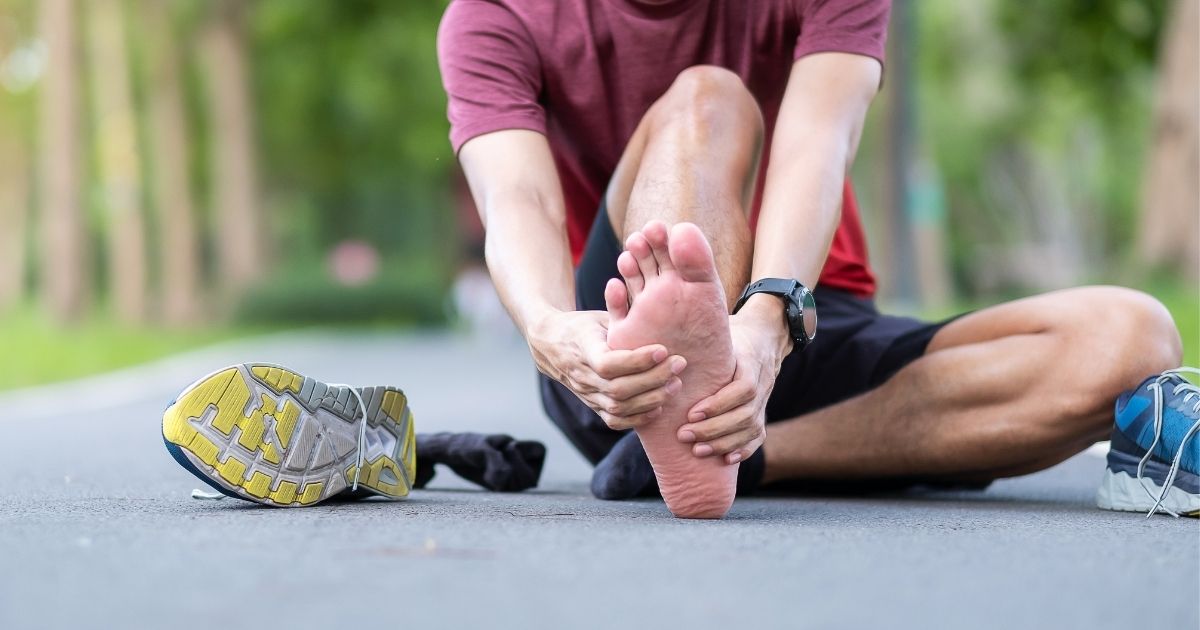
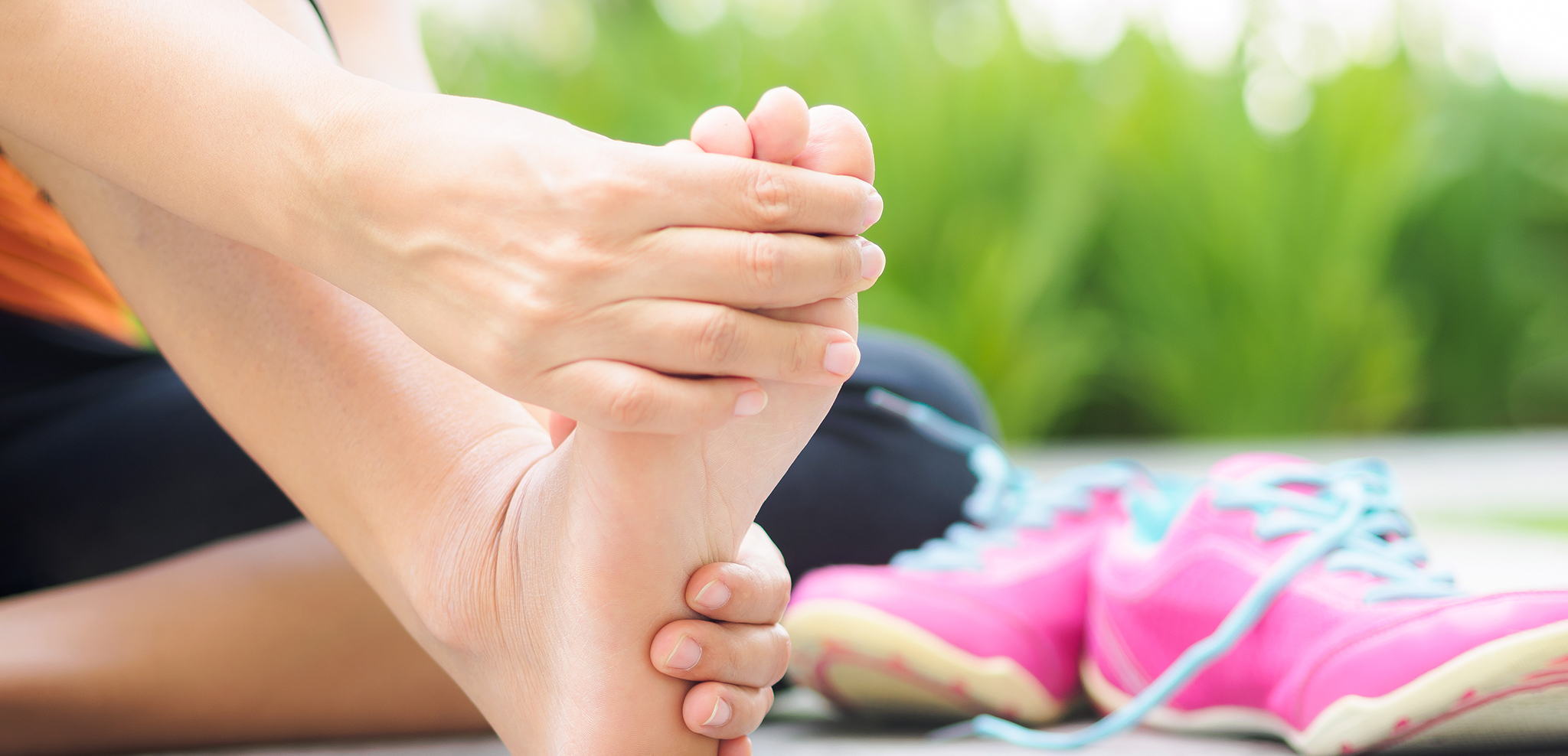 ШўЩҶЪҶЩҮ ШЁШ§ЫҢШҜ ШҜШұ Щ…ЩҲШұШҜ ШҜЩҲЫҢШҜЩҶ ШЁШ§ ШҜШұШҜ ЩҫШ§ШҙЩҶЩҮ ЩҫШ§ ШЁШҜШ§ЩҶЫҢШҜ. Ш§ШІ ЩҫЫҢШҙвҖҢЪҜЫҢШұЫҢ ШӘШ§ ШҜШұЩ…Ш§ЩҶ… ШӯЩӮШ§ЫҢЩӮ Щ…ШұШЁЩҲШ· ШЁЩҮ ШҜЩҲЫҢШҜЩҶ ШЁШ§ ШҜШұШҜ ЩҫШ§ШҙЩҶЩҮ ЩҫШ§ ЩҲ ЪҶЪҜЩҲЩҶЪҜЫҢ Щ…ШӘЩҲЩӮЩҒ Ъ©ШұШҜЩҶ ШўЩҶ ШұШ§ ЫҢШ§ШҜ ШЁЪҜЫҢШұЫҢШҜ.
ШўЩҶЪҶЩҮ ШЁШ§ЫҢШҜ ШҜШұ Щ…ЩҲШұШҜ ШҜЩҲЫҢШҜЩҶ ШЁШ§ ШҜШұШҜ ЩҫШ§ШҙЩҶЩҮ ЩҫШ§ ШЁШҜШ§ЩҶЫҢШҜ. Ш§ШІ ЩҫЫҢШҙвҖҢЪҜЫҢШұЫҢ ШӘШ§ ШҜШұЩ…Ш§ЩҶ… ШӯЩӮШ§ЫҢЩӮ Щ…ШұШЁЩҲШ· ШЁЩҮ ШҜЩҲЫҢШҜЩҶ ШЁШ§ ШҜШұШҜ ЩҫШ§ШҙЩҶЩҮ ЩҫШ§ ЩҲ ЪҶЪҜЩҲЩҶЪҜЫҢ Щ…ШӘЩҲЩӮЩҒ Ъ©ШұШҜЩҶ ШўЩҶ ШұШ§ ЫҢШ§ШҜ ШЁЪҜЫҢШұЫҢШҜ.
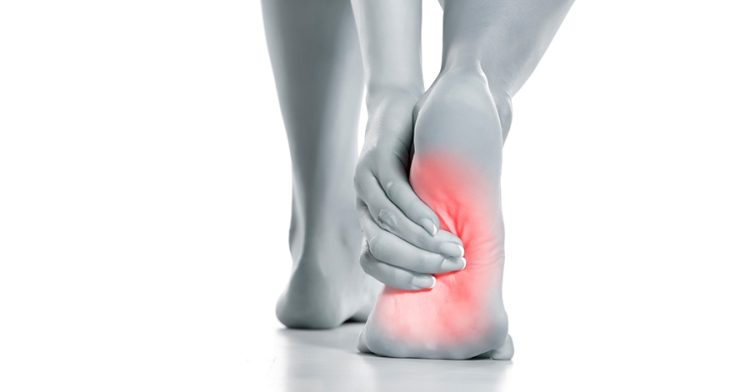
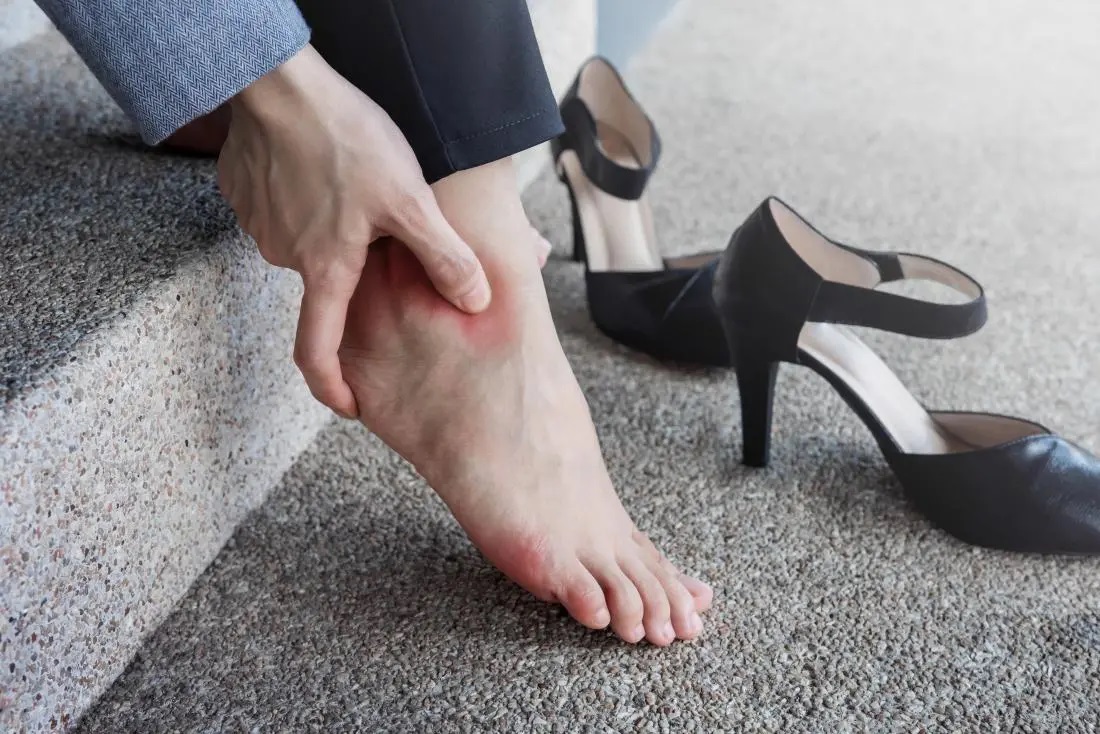 Щ„ЩҲШ§ШІЩ… ЩҲШұШІШҙЫҢ ЩҮЩ… ШЁШіЫҢШ§Шұ Щ…ЩҮЩ… Ш§ШіШӘ. ЩҫЩҲШҙЫҢШҜЩҶ Ъ©ЩҒШҙвҖҢЩҮШ§ЫҢ ШҜЩҲ Ъ©ЩҮЩҶЩҮ ЫҢШ§ ШҜЩҲЫҢШҜЩҶ Щ…ШҜШ§ЩҲЩ… ШұЩҲЫҢ ШіШ·ЩҲШӯ ШіШ®ШӘ Щ…Ш§ЩҶЩҶШҜ ШўШіЩҒШ§Щ„ШӘ ЫҢШ§ ШЁШӘЩҶ Щ…ЫҢвҖҢШӘЩҲШ§ЩҶШҜ Ш®Ш·Шұ Ш§ШЁШӘЩ„Ш§ ШЁЩҮ Ш§ЫҢЩҶ ШЁЫҢЩ…Ш§ШұЫҢ ШұШ§ Ш§ЩҒШІШ§ЫҢШҙ ШҜЩҮШҜ.
Щ„ЩҲШ§ШІЩ… ЩҲШұШІШҙЫҢ ЩҮЩ… ШЁШіЫҢШ§Шұ Щ…ЩҮЩ… Ш§ШіШӘ. ЩҫЩҲШҙЫҢШҜЩҶ Ъ©ЩҒШҙвҖҢЩҮШ§ЫҢ ШҜЩҲ Ъ©ЩҮЩҶЩҮ ЫҢШ§ ШҜЩҲЫҢШҜЩҶ Щ…ШҜШ§ЩҲЩ… ШұЩҲЫҢ ШіШ·ЩҲШӯ ШіШ®ШӘ Щ…Ш§ЩҶЩҶШҜ ШўШіЩҒШ§Щ„ШӘ ЫҢШ§ ШЁШӘЩҶ Щ…ЫҢвҖҢШӘЩҲШ§ЩҶШҜ Ш®Ш·Шұ Ш§ШЁШӘЩ„Ш§ ШЁЩҮ Ш§ЫҢЩҶ ШЁЫҢЩ…Ш§ШұЫҢ ШұШ§ Ш§ЩҒШІШ§ЫҢШҙ ШҜЩҮШҜ.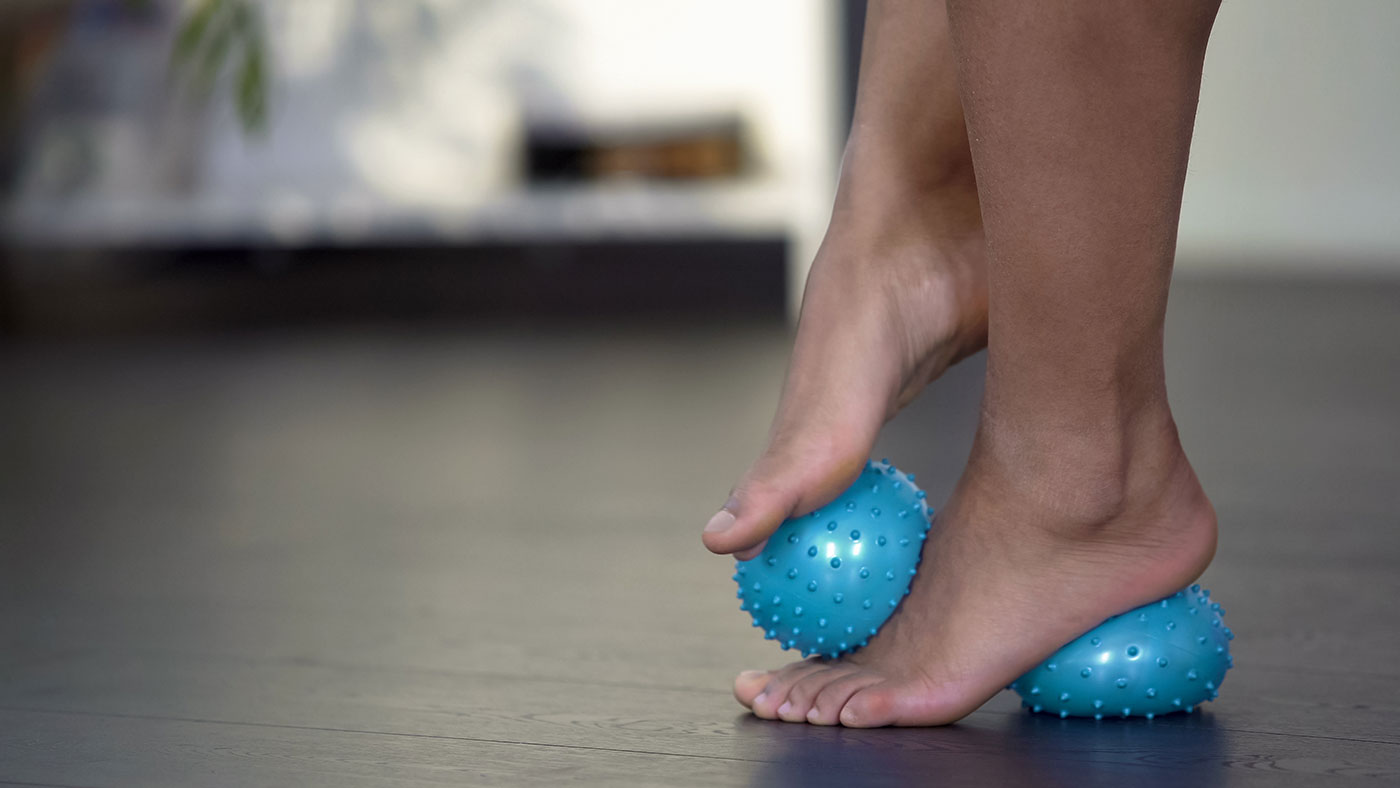 Ш§ЩҲЩ„ЫҢЩҶ ЪҜШ§Щ… ШҜШұ ШҜШұЩ…Ш§ЩҶ Ш§Щ„ШӘЩҮШ§ШЁ Ъ©ЩҒ ЩҫШ§ШҢ Ъ©Ш§ЩҮШҙ ШӘЩҲШұЩ… Ш§ШіШӘ. Щ…ШӘШІЩ„ ШӘЩҲШөЫҢЩҮ Щ…ЫҢвҖҢЪ©ЩҶШҜ Ъ©ЩҮ ЩҫШ§ЫҢ Ш®ЩҲШҜ ШұШ§ ШҜШұ ЫҢЪ© ШіШ·Щ„ ЫҢШ® ШЁЪҜШ°Ш§ШұЫҢШҜ ЫҢШ§ ЫҢЪ© ШЁШ·ШұЫҢ ШўШЁ ШұШ§ Щ…ЩҶШ¬Щ…ШҜ Ъ©ЩҶЫҢШҜ ЩҲ ЩҫШ§ЫҢ Ш®ЩҲШҜ ШұШ§ ШұЩҲЫҢ ШўЩҶ ЪҜШ°Ш§ШҙШӘЩҮ ШЁШәЩ„ШӘШ§ЩҶЫҢШҜ.
Ш§ЩҲЩ„ЫҢЩҶ ЪҜШ§Щ… ШҜШұ ШҜШұЩ…Ш§ЩҶ Ш§Щ„ШӘЩҮШ§ШЁ Ъ©ЩҒ ЩҫШ§ШҢ Ъ©Ш§ЩҮШҙ ШӘЩҲШұЩ… Ш§ШіШӘ. Щ…ШӘШІЩ„ ШӘЩҲШөЫҢЩҮ Щ…ЫҢвҖҢЪ©ЩҶШҜ Ъ©ЩҮ ЩҫШ§ЫҢ Ш®ЩҲШҜ ШұШ§ ШҜШұ ЫҢЪ© ШіШ·Щ„ ЫҢШ® ШЁЪҜШ°Ш§ШұЫҢШҜ ЫҢШ§ ЫҢЪ© ШЁШ·ШұЫҢ ШўШЁ ШұШ§ Щ…ЩҶШ¬Щ…ШҜ Ъ©ЩҶЫҢШҜ ЩҲ ЩҫШ§ЫҢ Ш®ЩҲШҜ ШұШ§ ШұЩҲЫҢ ШўЩҶ ЪҜШ°Ш§ШҙШӘЩҮ ШЁШәЩ„ШӘШ§ЩҶЫҢШҜ.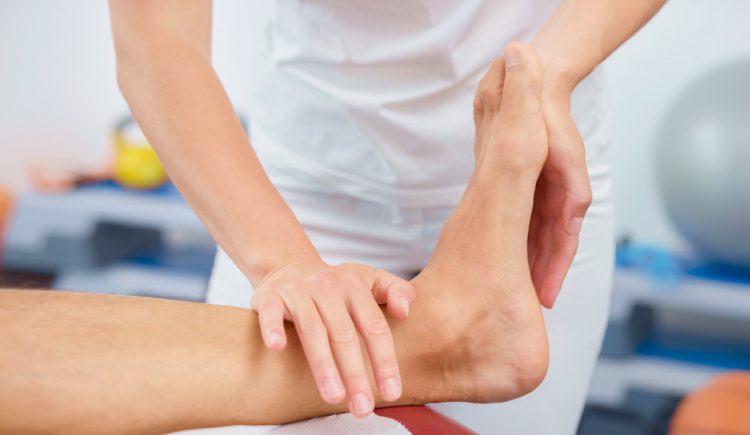
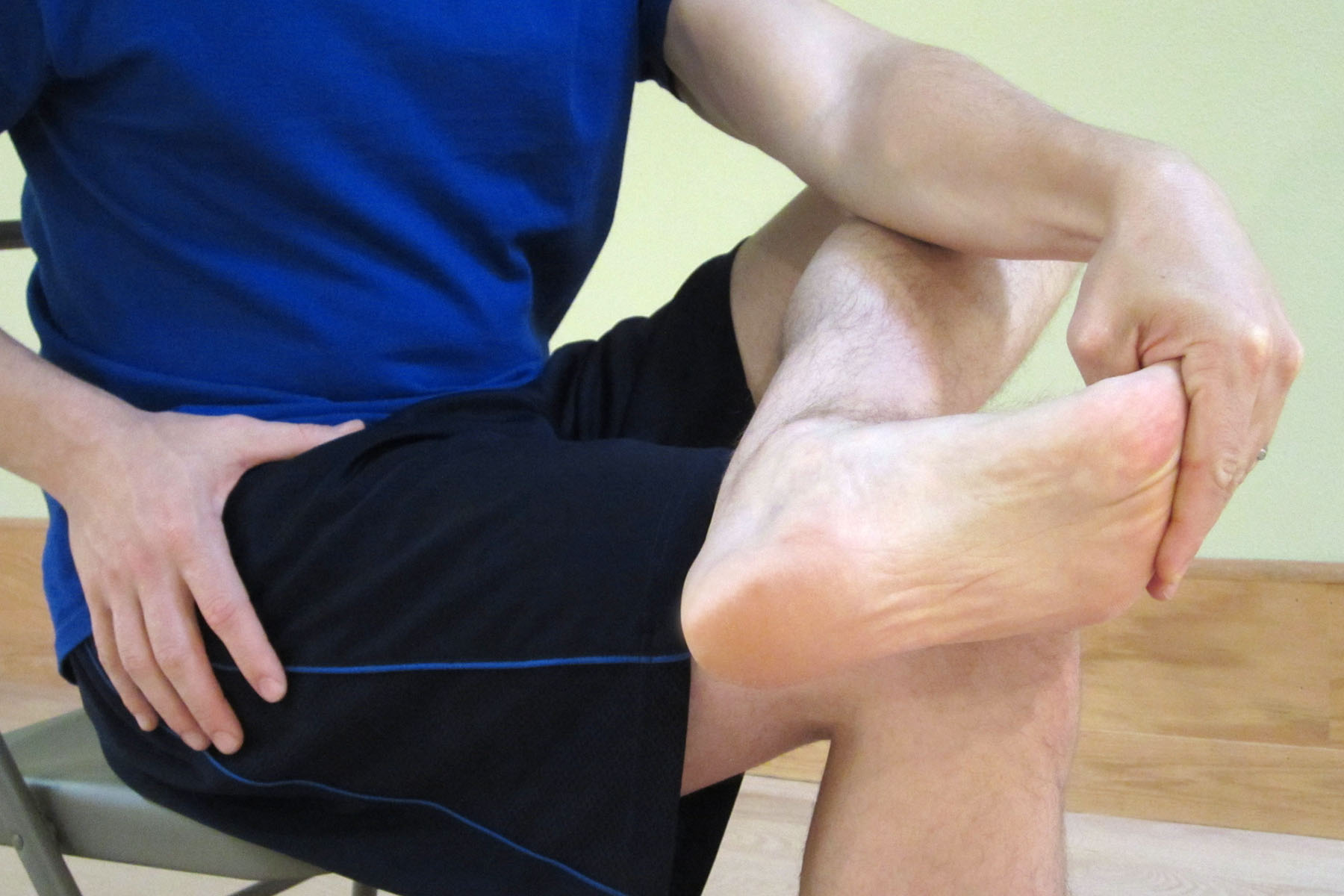
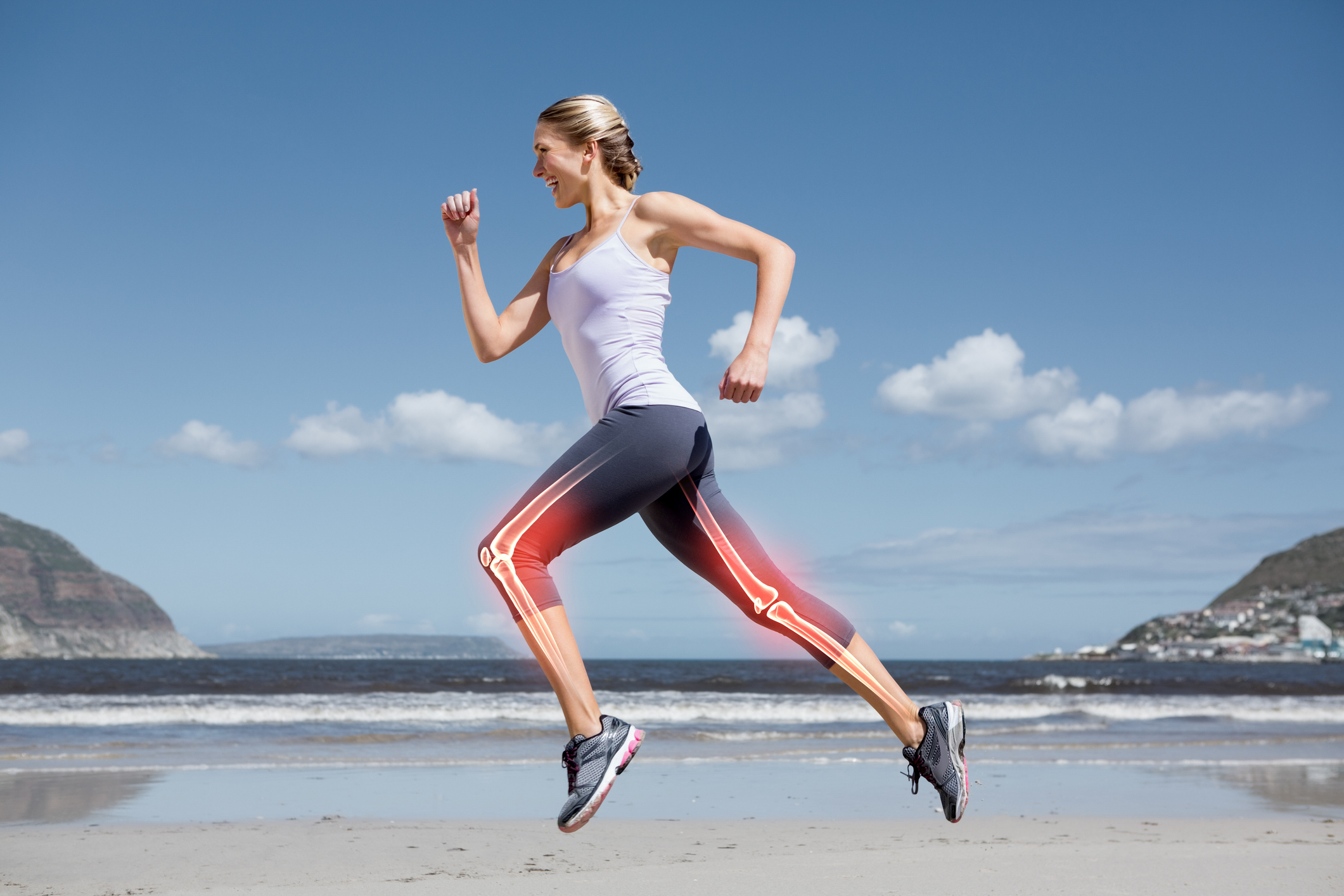
 ЩҒШұЩ… ШҜЩҲЫҢШҜЩҶ Щ…ЫҢвҖҢШӘЩҲШ§ЩҶШҜ ШЁЩҮ ШҙЩ…Ш§ Ъ©Щ…Ъ© Ъ©ЩҶШҜ ШӘШ§ ШіШұЫҢШ№вҖҢШӘШұШҢ Ъ©Ш§ШұШўЩ…ШҜШӘШұ ЩҲ ШұШ§ШӯШӘвҖҢШӘШұ ШЁШҜЩҲЫҢШҜ ЩҲ Ш§ШіШӘШұШі Ъ©Щ…ШӘШұЫҢ ШЁШұ ШЁШҜЩҶШӘШ§ЩҶ ЩҲШ§ШұШҜ Ъ©ЩҶЫҢШҜ ЩҲ Ш®Ш·Шұ ШўШіЫҢШЁ Ъ©Щ…ШӘШұЫҢ ШҜШ§ШҙШӘЩҮ ШЁШ§ШҙЫҢШҜ. ШҜЩҲЫҢШҜЩҶ ШЁШ§ ЩҒШұЩ… Щ…ЩҶШ§ШіШЁШҢ Ш®ШіШӘЪҜЫҢ ШҙЩ…Ш§ ШұШ§ Ъ©Ш§ЩҮШҙ Щ…ЫҢ ШҜЩҮШҜ ЩҲ ШӘШ¶Щ…ЫҢЩҶ Щ…ЫҢ Ъ©ЩҶШҜ Ъ©ЩҮ ШЁЫҢШҙШӘШұЫҢЩҶ ШЁЩҮШұЩҮ ШұШ§ Ш§ШІ ШҜЩҲЫҢШҜЩҶ Ш®ЩҲШҜ Щ…ЫҢ ШЁШұЫҢШҜ. ШЁШұШ§ЫҢ ШЁЩҮШӘШұ ШҙШҜЩҶ ЩҒШұЩ… ШҜЩҲЫҢШҜЩҶ Ш®ЩҲШҜ Ш§ЫҢЩҶ ШұШ§ЩҮЪ©Ш§ШұЩҮШ§ ШұШ§ Ш§ЩҶШ¬Ш§Щ… ШҜЩҮЫҢШҜ.
ЩҒШұЩ… ШҜЩҲЫҢШҜЩҶ Щ…ЫҢвҖҢШӘЩҲШ§ЩҶШҜ ШЁЩҮ ШҙЩ…Ш§ Ъ©Щ…Ъ© Ъ©ЩҶШҜ ШӘШ§ ШіШұЫҢШ№вҖҢШӘШұШҢ Ъ©Ш§ШұШўЩ…ШҜШӘШұ ЩҲ ШұШ§ШӯШӘвҖҢШӘШұ ШЁШҜЩҲЫҢШҜ ЩҲ Ш§ШіШӘШұШі Ъ©Щ…ШӘШұЫҢ ШЁШұ ШЁШҜЩҶШӘШ§ЩҶ ЩҲШ§ШұШҜ Ъ©ЩҶЫҢШҜ ЩҲ Ш®Ш·Шұ ШўШіЫҢШЁ Ъ©Щ…ШӘШұЫҢ ШҜШ§ШҙШӘЩҮ ШЁШ§ШҙЫҢШҜ. ШҜЩҲЫҢШҜЩҶ ШЁШ§ ЩҒШұЩ… Щ…ЩҶШ§ШіШЁШҢ Ш®ШіШӘЪҜЫҢ ШҙЩ…Ш§ ШұШ§ Ъ©Ш§ЩҮШҙ Щ…ЫҢ ШҜЩҮШҜ ЩҲ ШӘШ¶Щ…ЫҢЩҶ Щ…ЫҢ Ъ©ЩҶШҜ Ъ©ЩҮ ШЁЫҢШҙШӘШұЫҢЩҶ ШЁЩҮШұЩҮ ШұШ§ Ш§ШІ ШҜЩҲЫҢШҜЩҶ Ш®ЩҲШҜ Щ…ЫҢ ШЁШұЫҢШҜ. ШЁШұШ§ЫҢ ШЁЩҮШӘШұ ШҙШҜЩҶ ЩҒШұЩ… ШҜЩҲЫҢШҜЩҶ Ш®ЩҲШҜ Ш§ЫҢЩҶ ШұШ§ЩҮЪ©Ш§ШұЩҮШ§ ШұШ§ Ш§ЩҶШ¬Ш§Щ… ШҜЩҮЫҢШҜ.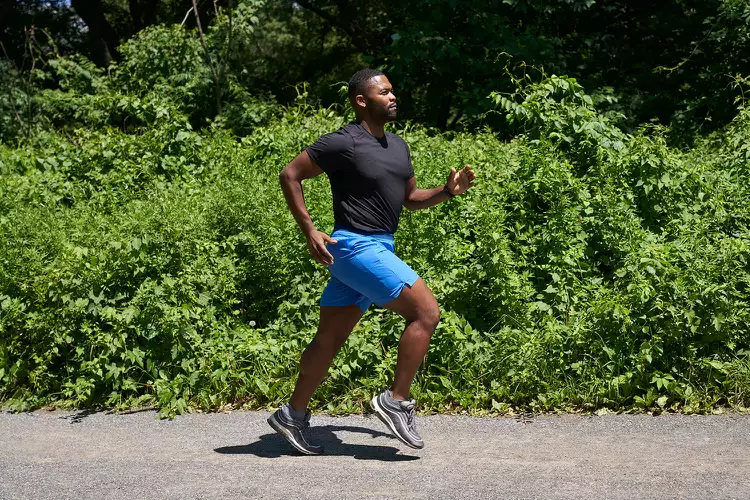
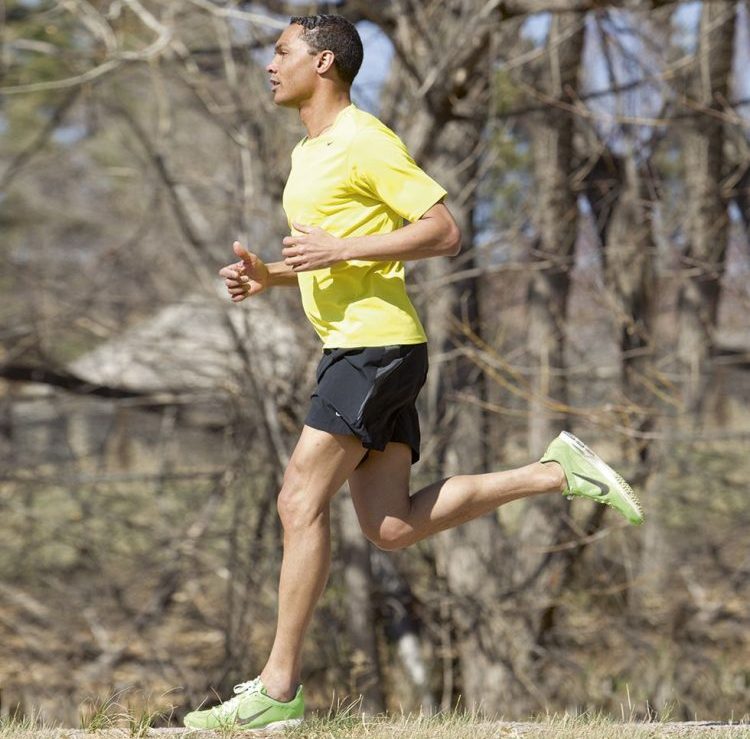
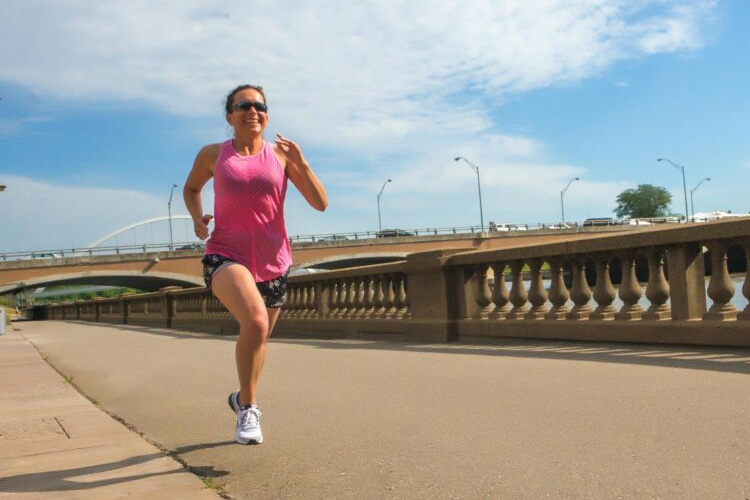 4.ЩҲШ¶Ш№ЫҢШӘ ШЁШҜЩҶ Ш®ЩҲШҜ ШұШ§ ШЁШұШұШіЫҢ Ъ©ЩҶЫҢШҜ
4.ЩҲШ¶Ш№ЫҢШӘ ШЁШҜЩҶ Ш®ЩҲШҜ ШұШ§ ШЁШұШұШіЫҢ Ъ©ЩҶЫҢШҜ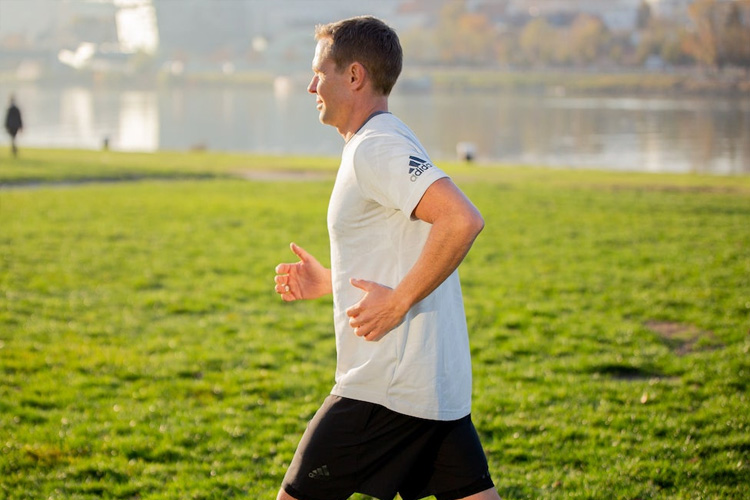
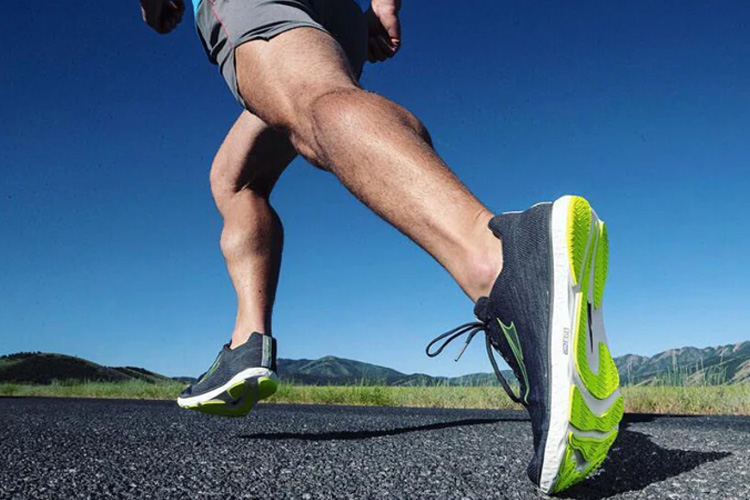 Ш№Щ„Ш§ЩҲЩҮ ШЁШұ Ш§ЫҢЩҶШҢ ЩҫЩҲШҙЫҢШҜЩҶ Ъ©ЩҒШҙ ЩҮШ§ЫҢ ШҜЩҲЫҢШҜЩҶ ШЁШ§ ШҜШұШ§Щҫ ШөЩҒШұ (zero drop running shoes have a 0-millimeter heel-to-toe drop) Щ…ЫҢ ШӘЩҲШ§ЩҶШҜ ШЁЩҮ Ш¬Щ„ЩҲЪҜЫҢШұЫҢ Ш§ШІ ШҜЩҲЫҢШҜЩҶ ШЁШ§ Ш¶ШұШЁЩҮ ЩҫШ§ШҙЩҶЩҮ Ъ©Щ…Ъ© Ъ©ЩҶШҜ.
Ш№Щ„Ш§ЩҲЩҮ ШЁШұ Ш§ЫҢЩҶШҢ ЩҫЩҲШҙЫҢШҜЩҶ Ъ©ЩҒШҙ ЩҮШ§ЫҢ ШҜЩҲЫҢШҜЩҶ ШЁШ§ ШҜШұШ§Щҫ ШөЩҒШұ (zero drop running shoes have a 0-millimeter heel-to-toe drop) Щ…ЫҢ ШӘЩҲШ§ЩҶШҜ ШЁЩҮ Ш¬Щ„ЩҲЪҜЫҢШұЫҢ Ш§ШІ ШҜЩҲЫҢШҜЩҶ ШЁШ§ Ш¶ШұШЁЩҮ ЩҫШ§ШҙЩҶЩҮ Ъ©Щ…Ъ© Ъ©ЩҶШҜ.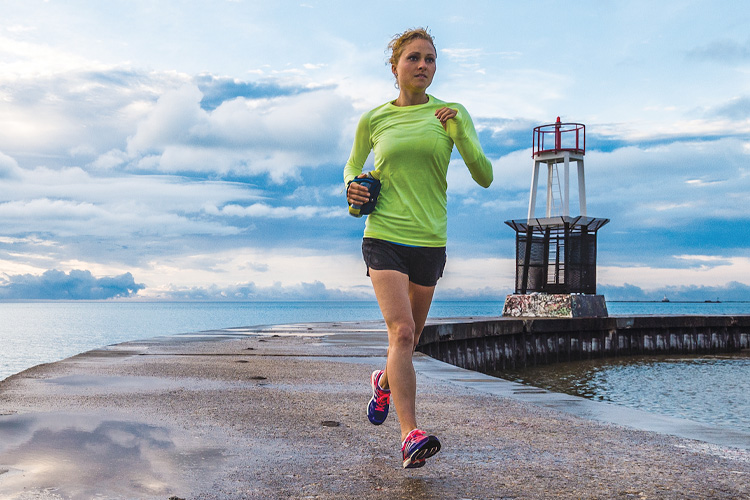 ШЁШұШұШіЫҢ Ъ©ЩҶЫҢШҜ Ъ©ЩҮ ШҙШ§ЩҶЩҮвҖҢЩҮШ§ЫҢШӘШ§ЩҶ ШӘШ§ ЩҶШІШҜЫҢЪ© ЪҜЩҲШҙвҖҢЩҮШ§ЫҢШӘШ§ЩҶ ШЁШ§Щ„Ш§ ЩҶШұЩҲШҜ. ШҜШұ Ш§ЫҢЩҶ ШөЩҲШұШӘШҢ ШӘЫҢШәЩҮ ЩҮШ§ЫҢ ШҙШ§ЩҶЩҮ Ш®ЩҲШҜ ШұШ§ ШЁЩҮ ШіЩ…ШӘ ЩҫШҙШӘ Ш®ЩҲШҜ Щ…ЩҶЩӮШЁШ¶ Ъ©ЩҶЫҢШҜ.
ШЁШұШұШіЫҢ Ъ©ЩҶЫҢШҜ Ъ©ЩҮ ШҙШ§ЩҶЩҮвҖҢЩҮШ§ЫҢШӘШ§ЩҶ ШӘШ§ ЩҶШІШҜЫҢЪ© ЪҜЩҲШҙвҖҢЩҮШ§ЫҢШӘШ§ЩҶ ШЁШ§Щ„Ш§ ЩҶШұЩҲШҜ. ШҜШұ Ш§ЫҢЩҶ ШөЩҲШұШӘШҢ ШӘЫҢШәЩҮ ЩҮШ§ЫҢ ШҙШ§ЩҶЩҮ Ш®ЩҲШҜ ШұШ§ ШЁЩҮ ШіЩ…ШӘ ЩҫШҙШӘ Ш®ЩҲШҜ Щ…ЩҶЩӮШЁШ¶ Ъ©ЩҶЫҢШҜ.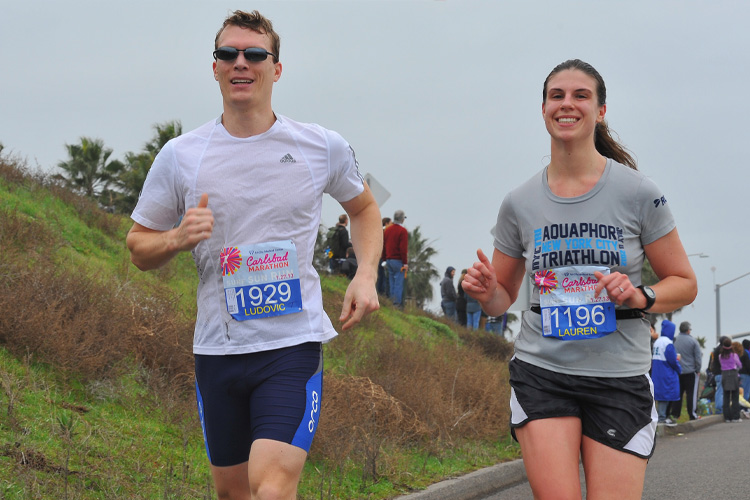 ШІЩ…Ш§ЩҶЫҢ Ъ©ЩҮ ШҜЩҲЩҶШҜЪҜШ§ЩҶ Ш®ШіШӘЩҮ ЫҢШ§ ШӘШӯШӘ ШӘЩҶШҙ ЩҮШіШӘЩҶШҜШҢ ШҜШіШӘвҖҢЩҮШ§ЫҢШҙШ§ЩҶ ШЁЩҮ ШіЩ…ШӘ ШҙШ§ЩҶЩҮвҖҢЩҮШ§ЫҢШҙШ§ЩҶ ШЁШ§Щ„Ш§ Щ…ЫҢвҖҢШұЩҲШҜ ЩҲ ЩҒШ§ШөЩ„ЩҮ ШЁЫҢЩҶ ШЁШ§ШІЩҲ ЩҲ ШіШ§Ш№ШҜ ШұШ§ Ъ©ЩҲШӘШ§ЩҮ Щ…ЫҢвҖҢЪ©ЩҶШҜ. Ш§ЪҜШұ Щ…ШӘЩҲШ¬ЩҮ Ш§ЫҢЩҶ Ш§ШӘЩҒШ§ЩӮ Ш§ЩҒШӘШ§ШҜЫҢШҜШҢ Ш§Ш¬Ш§ШІЩҮ ШҜЩҮЫҢШҜ ШЁШ§ШІЩҲЩҮШ§ЫҢШӘШ§ЩҶ ШҜШұ Ъ©ЩҶШ§ШұШӘШ§ЩҶ ШЁЫҢЩҒШӘЩҶШҜ ЩҲ ШўЩҶЩҮШ§ ШұШ§ ШӘЪ©Ш§ЩҶ ШҜЩҮЫҢШҜ. ШўЩҶЩҮШ§ ШұШ§ ШҜШұ ЫҢЪ© ШІШ§ЩҲЫҢЩҮ 90 ШҜШұШ¬ЩҮ ШҜШұ ШӯШ§Щ„ЫҢ Ъ©ЩҮ ШҙШ§ЩҶЩҮ ЩҮШ§ЫҢ Ш®ЩҲШҜ ШЁЩҮ Ш№ЩӮШЁ ЩҲ ШұЫҢЩ„Ъ©Ші ЩҮШіШӘЩҶШҜШҢ ЩӮШұШ§Шұ ШҜЩҮЫҢШҜ.
ШІЩ…Ш§ЩҶЫҢ Ъ©ЩҮ ШҜЩҲЩҶШҜЪҜШ§ЩҶ Ш®ШіШӘЩҮ ЫҢШ§ ШӘШӯШӘ ШӘЩҶШҙ ЩҮШіШӘЩҶШҜШҢ ШҜШіШӘвҖҢЩҮШ§ЫҢШҙШ§ЩҶ ШЁЩҮ ШіЩ…ШӘ ШҙШ§ЩҶЩҮвҖҢЩҮШ§ЫҢШҙШ§ЩҶ ШЁШ§Щ„Ш§ Щ…ЫҢвҖҢШұЩҲШҜ ЩҲ ЩҒШ§ШөЩ„ЩҮ ШЁЫҢЩҶ ШЁШ§ШІЩҲ ЩҲ ШіШ§Ш№ШҜ ШұШ§ Ъ©ЩҲШӘШ§ЩҮ Щ…ЫҢвҖҢЪ©ЩҶШҜ. Ш§ЪҜШұ Щ…ШӘЩҲШ¬ЩҮ Ш§ЫҢЩҶ Ш§ШӘЩҒШ§ЩӮ Ш§ЩҒШӘШ§ШҜЫҢШҜШҢ Ш§Ш¬Ш§ШІЩҮ ШҜЩҮЫҢШҜ ШЁШ§ШІЩҲЩҮШ§ЫҢШӘШ§ЩҶ ШҜШұ Ъ©ЩҶШ§ШұШӘШ§ЩҶ ШЁЫҢЩҒШӘЩҶШҜ ЩҲ ШўЩҶЩҮШ§ ШұШ§ ШӘЪ©Ш§ЩҶ ШҜЩҮЫҢШҜ. ШўЩҶЩҮШ§ ШұШ§ ШҜШұ ЫҢЪ© ШІШ§ЩҲЫҢЩҮ 90 ШҜШұШ¬ЩҮ ШҜШұ ШӯШ§Щ„ЫҢ Ъ©ЩҮ ШҙШ§ЩҶЩҮ ЩҮШ§ЫҢ Ш®ЩҲШҜ ШЁЩҮ Ш№ЩӮШЁ ЩҲ ШұЫҢЩ„Ъ©Ші ЩҮШіШӘЩҶШҜШҢ ЩӮШұШ§Шұ ШҜЩҮЫҢШҜ.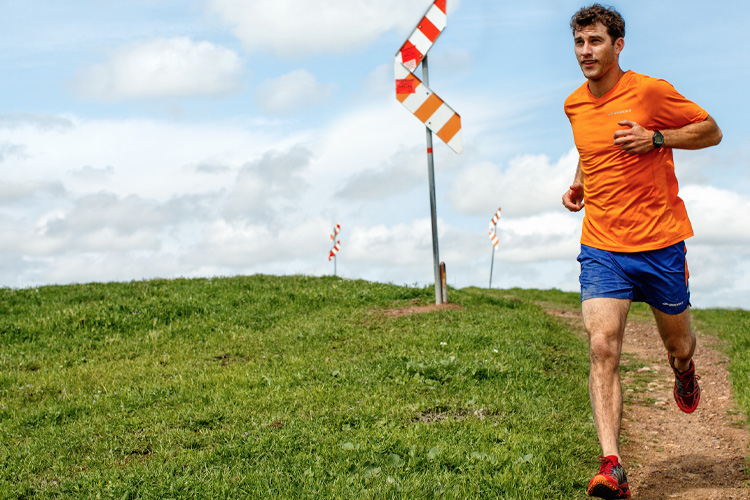 ШЁШ§ШІЩҲЩҮШ§ЫҢШӘШ§ЩҶ ШЁШ§ЫҢШҜ ШҜШұ Ъ©ЩҶШ§ШұШӘШ§ЩҶ ШӯШұЪ©ШӘ Ъ©ЩҶЩҶШҜ. Ш§ЪҜШұ Ш§ШІ ШұЩҲЫҢ ШіЫҢЩҶЩҮ Ш№ШЁЩҲШұ Ъ©ЩҶЩҶШҜШҢ ШҙШұЩҲШ№ ШЁЩҮ ШӯШұЪ©ШӘ ШЁЩҮ ШіЩ…ШӘ ШҙШ§ЩҶЩҮвҖҢЩҮШ§ Щ…ЫҢвҖҢЪ©ЩҶЩҶШҜ ЩҲ Ъ©Щ… Ъ©Щ… Ш®Щ…ЫҢШҜЩҮ ШЁЩҶШёШұ Ш®ЩҲШ§ЩҮЫҢ ШұШіЫҢШҜ.
ШЁШ§ШІЩҲЩҮШ§ЫҢШӘШ§ЩҶ ШЁШ§ЫҢШҜ ШҜШұ Ъ©ЩҶШ§ШұШӘШ§ЩҶ ШӯШұЪ©ШӘ Ъ©ЩҶЩҶШҜ. Ш§ЪҜШұ Ш§ШІ ШұЩҲЫҢ ШіЫҢЩҶЩҮ Ш№ШЁЩҲШұ Ъ©ЩҶЩҶШҜШҢ ШҙШұЩҲШ№ ШЁЩҮ ШӯШұЪ©ШӘ ШЁЩҮ ШіЩ…ШӘ ШҙШ§ЩҶЩҮвҖҢЩҮШ§ Щ…ЫҢвҖҢЪ©ЩҶЩҶШҜ ЩҲ Ъ©Щ… Ъ©Щ… Ш®Щ…ЫҢШҜЩҮ ШЁЩҶШёШұ Ш®ЩҲШ§ЩҮЫҢ ШұШіЫҢШҜ. ШЁШұШ§ЫҢ ШЁЩҮ ШӯШҜШ§ЩӮЩ„ ШұШіШ§ЩҶШҜЩҶ ЩҫШұШҙ ЩҲ ШөШұЩҒЩҮ Ш¬ЩҲЫҢЫҢ ШҜШұ Ш§ЩҶШұЪҳЫҢШҢ ШЁЩҮ ШўШұШ§Щ…ЫҢ ШЁШҜЩҲЫҢШҜ ЩҲ ШЁЩҮ ШўШұШ§Щ…ЫҢ ШұЩҲЫҢ ЩҫШ§ЩҮШ§ЫҢ Ш®ЩҲШҜ ЩҒШұЩҲШҜ ШЁЫҢШ§ЫҢЫҢШҜ. ШіШ№ЫҢ Ъ©ЩҶЫҢШҜ Ш·ЩҲЩ„ ЪҜШ§Щ… Ш®ЩҲШҜ ШұШ§ ЩҫШ§ЫҢЫҢЩҶ ЩҶЪҜЩҮ ШҜШ§ШұЫҢШҜ ЩҲ ШұЩҲЫҢ Ъ©ЫҢШҜЩҶШі ШЁЫҢШҙШӘШұ (ЪҶШұШ®Шҙ ЪҜШ§Щ…) ШӘЩ…ШұЪ©ШІ Ъ©ЩҶЫҢШҜ.
ШЁШұШ§ЫҢ ШЁЩҮ ШӯШҜШ§ЩӮЩ„ ШұШіШ§ЩҶШҜЩҶ ЩҫШұШҙ ЩҲ ШөШұЩҒЩҮ Ш¬ЩҲЫҢЫҢ ШҜШұ Ш§ЩҶШұЪҳЫҢШҢ ШЁЩҮ ШўШұШ§Щ…ЫҢ ШЁШҜЩҲЫҢШҜ ЩҲ ШЁЩҮ ШўШұШ§Щ…ЫҢ ШұЩҲЫҢ ЩҫШ§ЩҮШ§ЫҢ Ш®ЩҲШҜ ЩҒШұЩҲШҜ ШЁЫҢШ§ЫҢЫҢШҜ. ШіШ№ЫҢ Ъ©ЩҶЫҢШҜ Ш·ЩҲЩ„ ЪҜШ§Щ… Ш®ЩҲШҜ ШұШ§ ЩҫШ§ЫҢЫҢЩҶ ЩҶЪҜЩҮ ШҜШ§ШұЫҢШҜ ЩҲ ШұЩҲЫҢ Ъ©ЫҢШҜЩҶШі ШЁЫҢШҙШӘШұ (ЪҶШұШ®Шҙ ЪҜШ§Щ…) ШӘЩ…ШұЪ©ШІ Ъ©ЩҶЫҢШҜ. ЩҮШұ ЪҜЩҲЩҶЩҮ ШӘШәЫҢЫҢШұ ШҜШұ Ъ©ЫҢШҜЩҶШі ЩҲ ЩҒШұЩҲШҜ ЩҫШ§ ШұШ§ ЩҒЩӮШ· ШЁШұШ§ЫҢ ШҜЩҲШұЩҮ ЩҮШ§ЫҢ Ъ©ЩҲШӘШ§ЩҮ ШҜШ§ШҙШӘЩҮ ШЁШ§ШҙЫҢШҜ. ШҜШұ Ш§ШЁШӘШҜШ§ Ш§ШӯШіШ§Ші ШәЫҢШұШ·ШЁЫҢШ№ЫҢ Ш®ЩҲШ§ЩҮЫҢ ШҜШ§ШҙШӘ ЩҲ ШҙЩ…Ш§ ЩҶШЁШ§ЫҢШҜ ШҜШұ Ш§ЫҢЩҶ Ъ©Ш§Шұ ШІЫҢШ§ШҜЩҮ ШұЩҲЫҢ Ъ©ЩҶЫҢШҜ.
ЩҮШұ ЪҜЩҲЩҶЩҮ ШӘШәЫҢЫҢШұ ШҜШұ Ъ©ЫҢШҜЩҶШі ЩҲ ЩҒШұЩҲШҜ ЩҫШ§ ШұШ§ ЩҒЩӮШ· ШЁШұШ§ЫҢ ШҜЩҲШұЩҮ ЩҮШ§ЫҢ Ъ©ЩҲШӘШ§ЩҮ ШҜШ§ШҙШӘЩҮ ШЁШ§ШҙЫҢШҜ. ШҜШұ Ш§ШЁШӘШҜШ§ Ш§ШӯШіШ§Ші ШәЫҢШұШ·ШЁЫҢШ№ЫҢ Ш®ЩҲШ§ЩҮЫҢ ШҜШ§ШҙШӘ ЩҲ ШҙЩ…Ш§ ЩҶШЁШ§ЫҢШҜ ШҜШұ Ш§ЫҢЩҶ Ъ©Ш§Шұ ШІЫҢШ§ШҜЩҮ ШұЩҲЫҢ Ъ©ЩҶЫҢШҜ.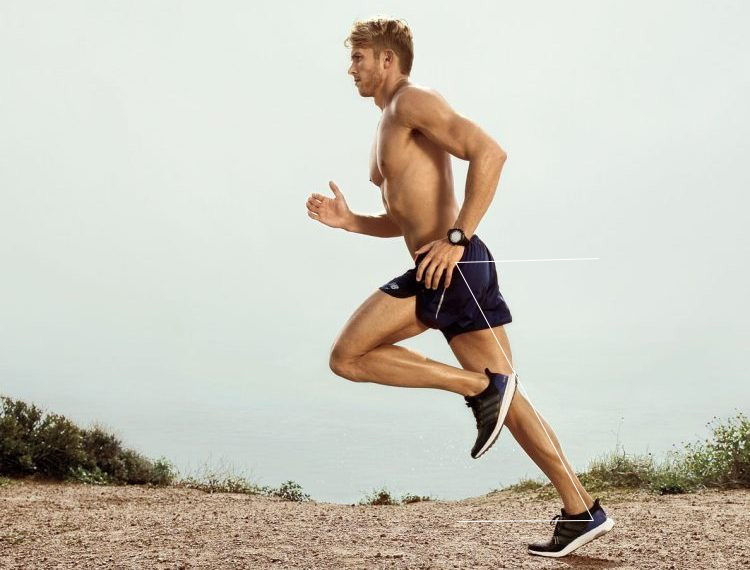
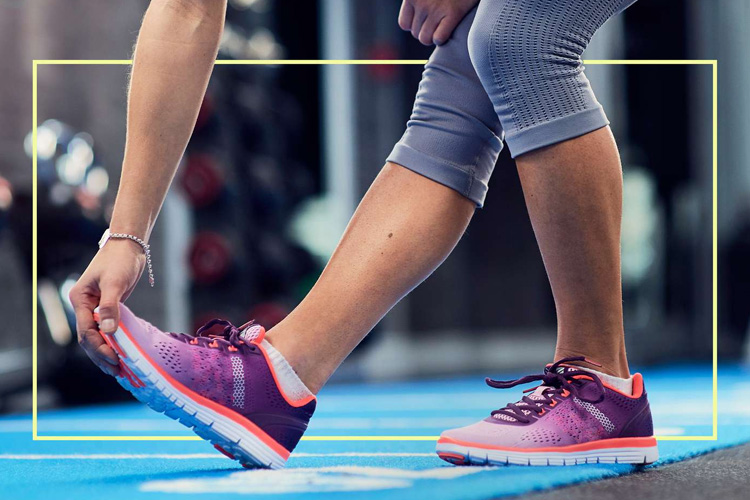 Ш§ЪҜШұ ШІШ§ЩҲЫҢЩҮ ШҜШұ Щ…ЪҶ ЩҫШ§ ШЁШІШұЪҜШӘШұ Ш§ШІ ШІШ§ЩҲЫҢЩҮ Щ„ЪҜЩҶ Ш§ШіШӘШҢ Щ…Щ…Ъ©ЩҶ Ш§ШіШӘ ЩҶШҙШ§ЩҶ ШҜЩҮЩҶШҜЩҮ Ш¶Ш№ЩҒ ЫҢШ§ ШіЩҒШӘ ШҙШҜЩҶ Ш№Ш¶Щ„Ш§ШӘ ШіШ§ЩӮ ЩҫШ§ ШЁШ§ШҙШҜ. ЩҲШұШІШҙвҖҢЩҮШ§ЫҢ Ш®Ш§ШөЫҢ Ъ©ЩҮ Ш§ЫҢЩҶ ЩҶШ§ШӯЫҢЩҮ ШұШ§ ЩҮШҜЩҒ ЩӮШұШ§Шұ Щ…ЫҢвҖҢШҜЩҮЩҶШҜШҢ Щ…Ш§ЩҶЩҶШҜ Ъ©ШҙШҙ ШіШ§ЩӮ ЩҫШ§ ЫҢШ§ ШӘЩӮЩҲЫҢШӘ ШӘЫҢШЁЫҢШ§Щ„ЫҢШі ЩӮШҜШ§Щ…ЫҢШҢ Щ…Щ…Ъ©ЩҶ Ш§ШіШӘ Ъ©Щ…Ъ© Ъ©ЩҶЩҶШҜ.
Ш§ЪҜШұ ШІШ§ЩҲЫҢЩҮ ШҜШұ Щ…ЪҶ ЩҫШ§ ШЁШІШұЪҜШӘШұ Ш§ШІ ШІШ§ЩҲЫҢЩҮ Щ„ЪҜЩҶ Ш§ШіШӘШҢ Щ…Щ…Ъ©ЩҶ Ш§ШіШӘ ЩҶШҙШ§ЩҶ ШҜЩҮЩҶШҜЩҮ Ш¶Ш№ЩҒ ЫҢШ§ ШіЩҒШӘ ШҙШҜЩҶ Ш№Ш¶Щ„Ш§ШӘ ШіШ§ЩӮ ЩҫШ§ ШЁШ§ШҙШҜ. ЩҲШұШІШҙвҖҢЩҮШ§ЫҢ Ш®Ш§ШөЫҢ Ъ©ЩҮ Ш§ЫҢЩҶ ЩҶШ§ШӯЫҢЩҮ ШұШ§ ЩҮШҜЩҒ ЩӮШұШ§Шұ Щ…ЫҢвҖҢШҜЩҮЩҶШҜШҢ Щ…Ш§ЩҶЩҶШҜ Ъ©ШҙШҙ ШіШ§ЩӮ ЩҫШ§ ЫҢШ§ ШӘЩӮЩҲЫҢШӘ ШӘЫҢШЁЫҢШ§Щ„ЫҢШі ЩӮШҜШ§Щ…ЫҢШҢ Щ…Щ…Ъ©ЩҶ Ш§ШіШӘ Ъ©Щ…Ъ© Ъ©ЩҶЩҶШҜ.


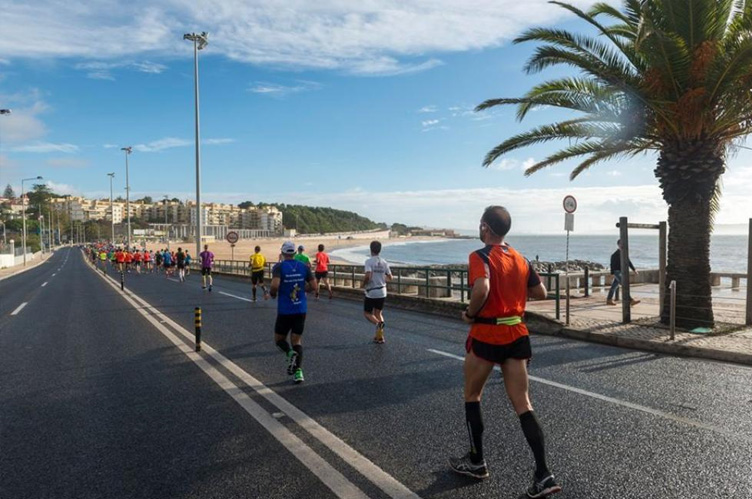


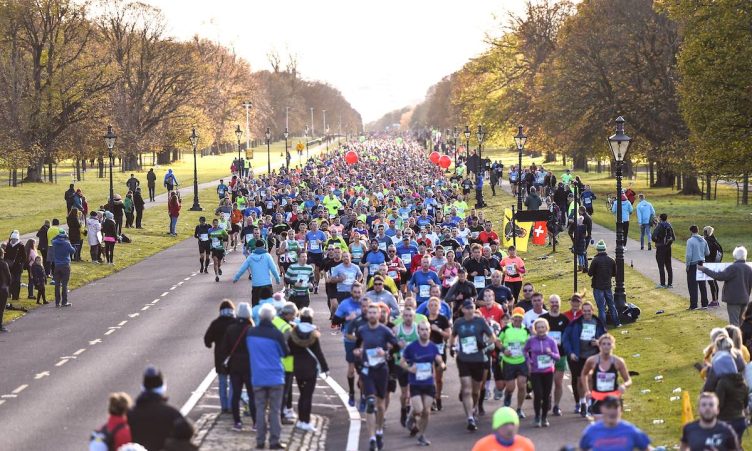

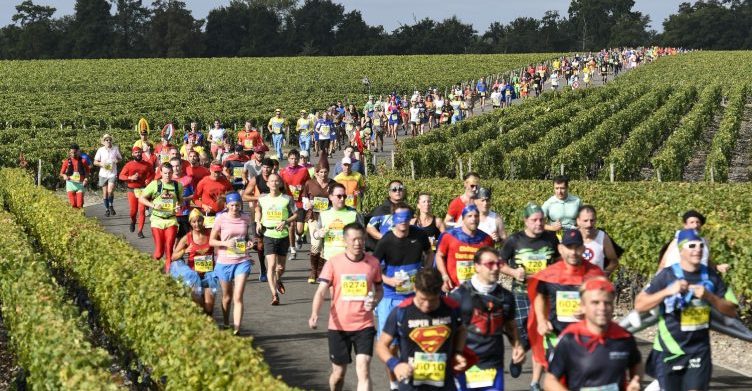





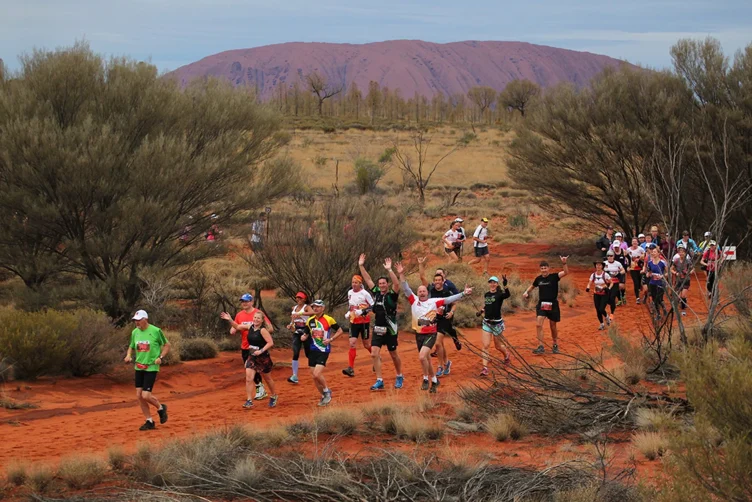







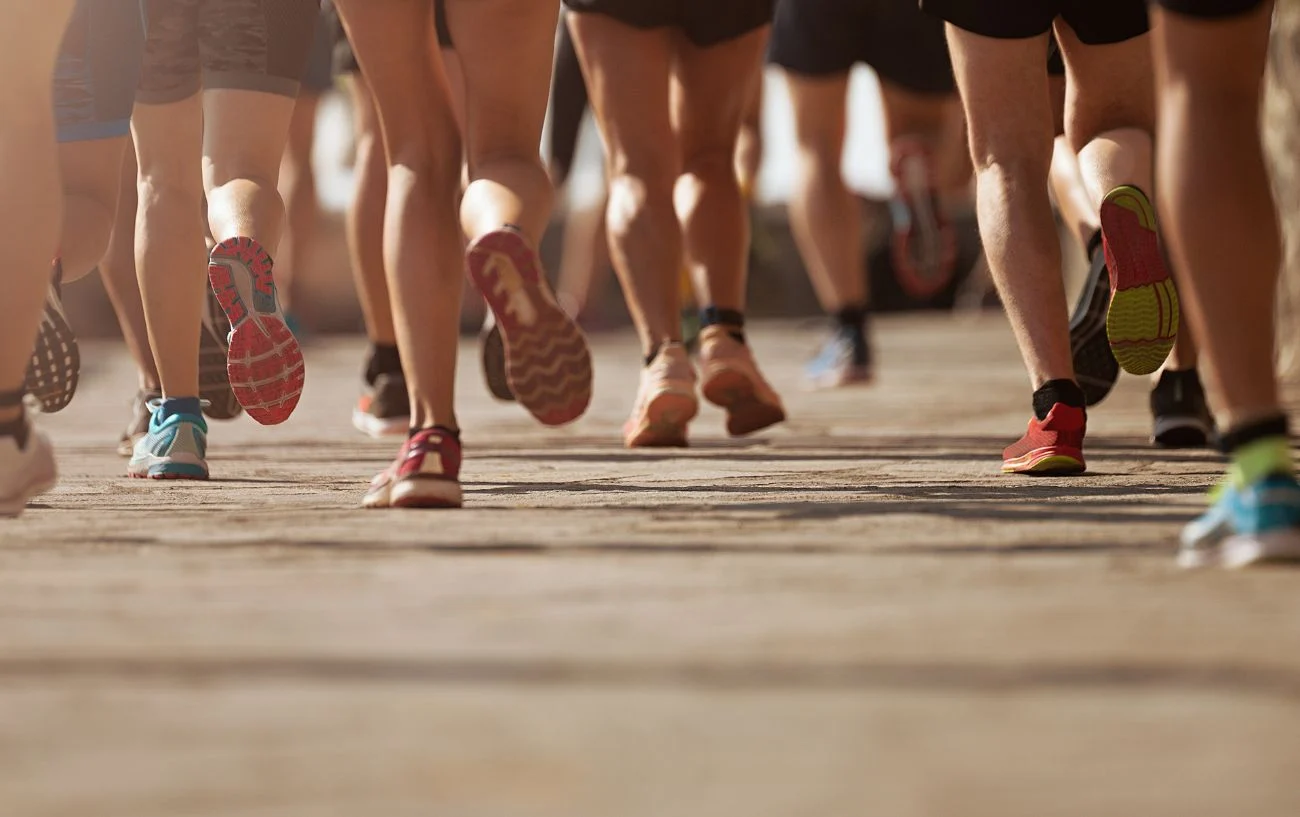
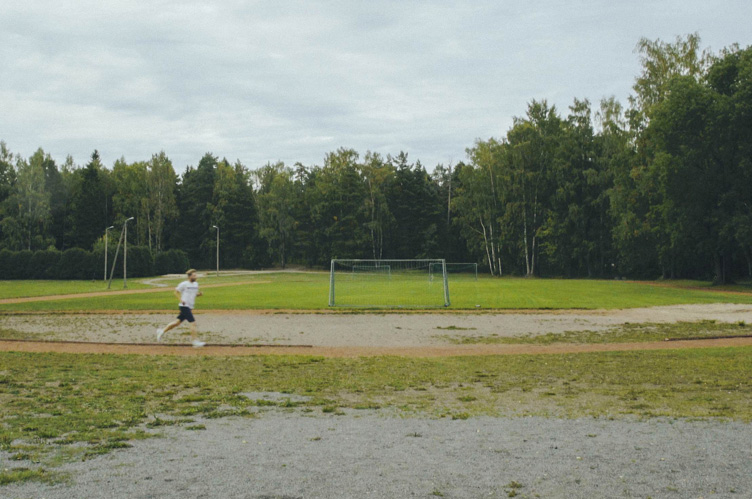
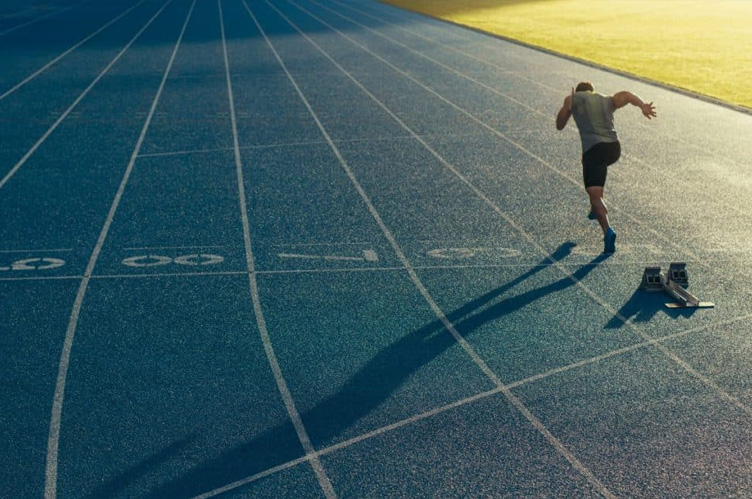
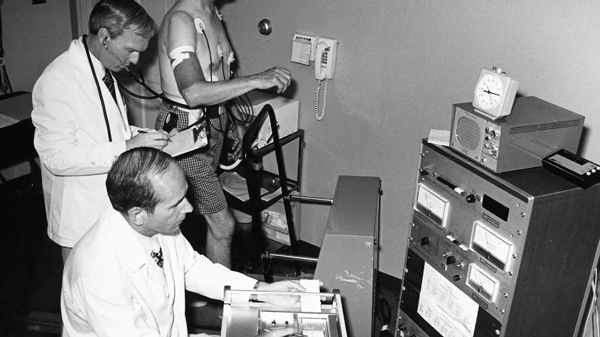 ШӘШіШӘ Ъ©ЩҲЩҫШұ ЪҶЫҢШіШӘШҹ
ШӘШіШӘ Ъ©ЩҲЩҫШұ ЪҶЫҢШіШӘШҹ ЪҶЪҜЩҲЩҶЩҮ ШӘШіШӘ Ъ©ЩҲЩҫШұ ШұШ§ Ш§ЩҶШ¬Ш§Щ… ШҜЩҮЫҢЩ…Шҹ
ЪҶЪҜЩҲЩҶЩҮ ШӘШіШӘ Ъ©ЩҲЩҫШұ ШұШ§ Ш§ЩҶШ¬Ш§Щ… ШҜЩҮЫҢЩ…Шҹ
 ЪҶЪҜЩҲЩҶЩҮ ШӘЩ…ШұЫҢЩҶвҖҢЩҮШ§ЫҢ Ш®ЩҲШҜ ШұШ§ ШЁШұШ§ШіШ§Ші ЩҶШӘЫҢШ¬ЩҮ ШӘШіШӘ Ъ©ЩҲЩҫШұ ШЁШұЩҶШ§Щ…ЩҮвҖҢШұЫҢШІЫҢ Ъ©ЩҶЫҢЩ…Шҹ
ЪҶЪҜЩҲЩҶЩҮ ШӘЩ…ШұЫҢЩҶвҖҢЩҮШ§ЫҢ Ш®ЩҲШҜ ШұШ§ ШЁШұШ§ШіШ§Ші ЩҶШӘЫҢШ¬ЩҮ ШӘШіШӘ Ъ©ЩҲЩҫШұ ШЁШұЩҶШ§Щ…ЩҮвҖҢШұЫҢШІЫҢ Ъ©ЩҶЫҢЩ…Шҹ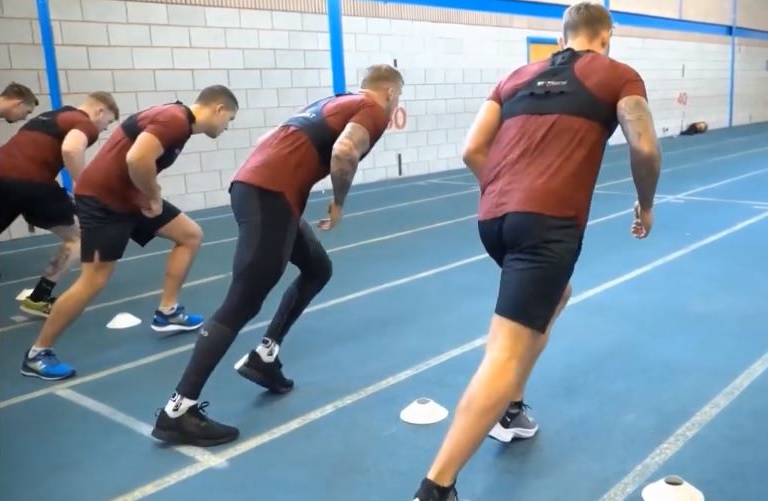
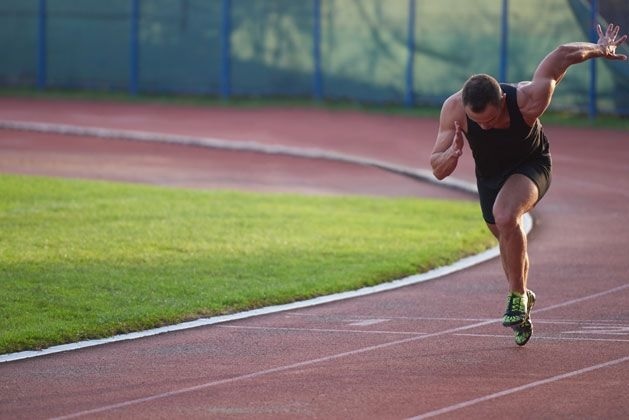
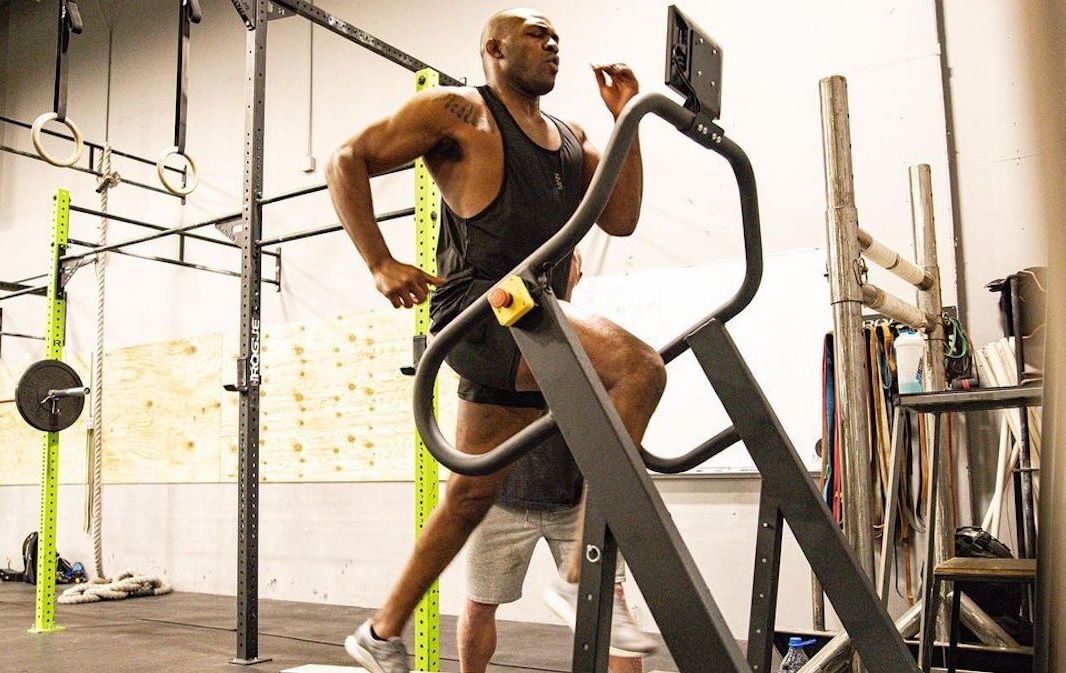
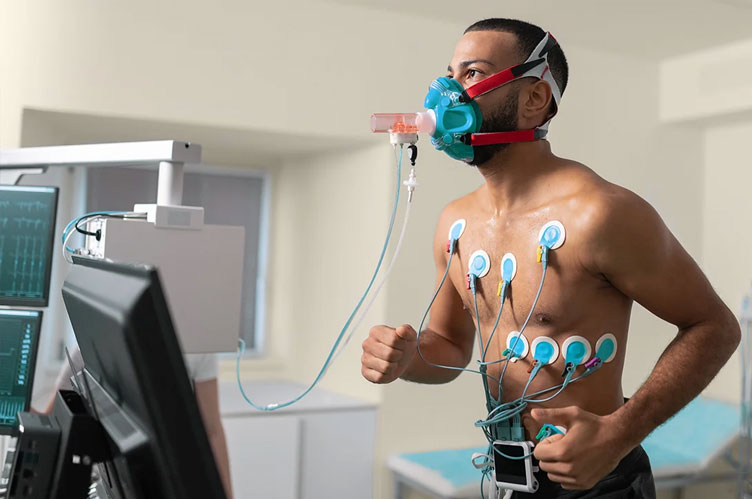
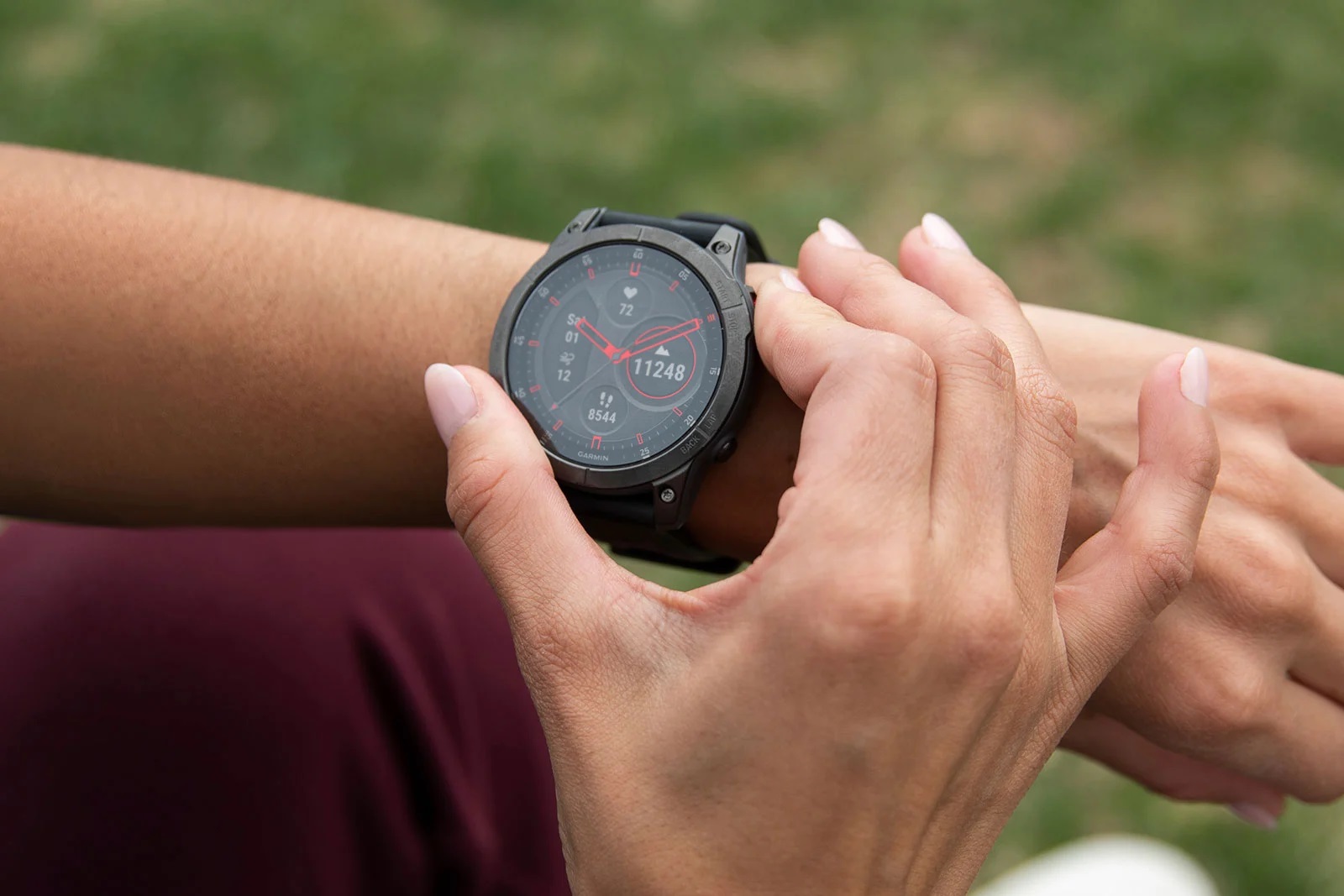
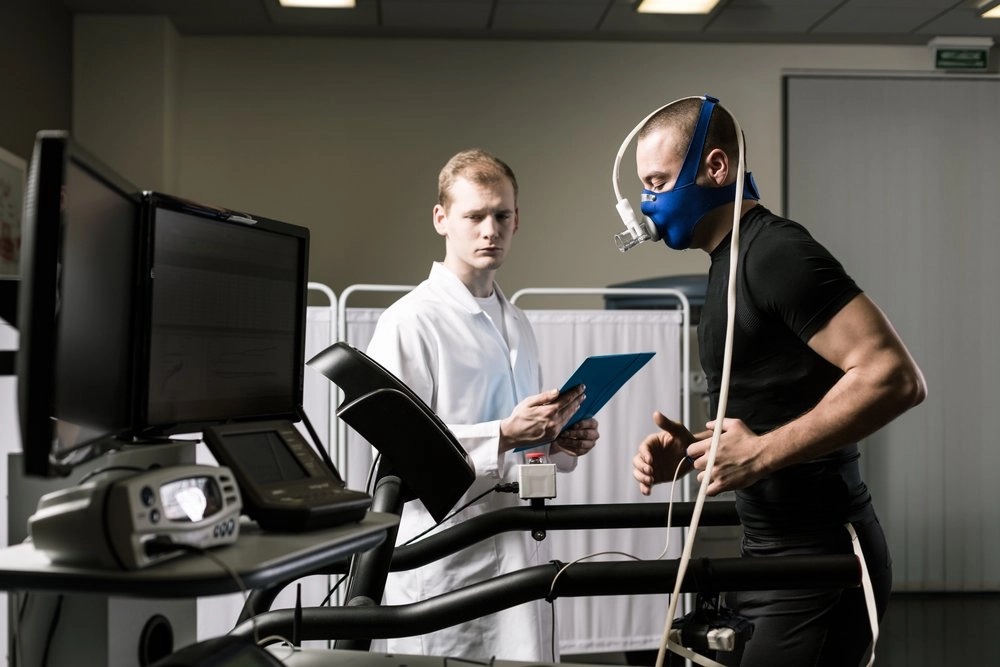 To directly measure oxygen consumption, you need to wear a special mask together with a machine capable of analyzing the contents of your respiratory gases.
To directly measure oxygen consumption, you need to wear a special mask together with a machine capable of analyzing the contents of your respiratory gases. VO2 Max for Men vs. Women
VO2 Max for Men vs. Women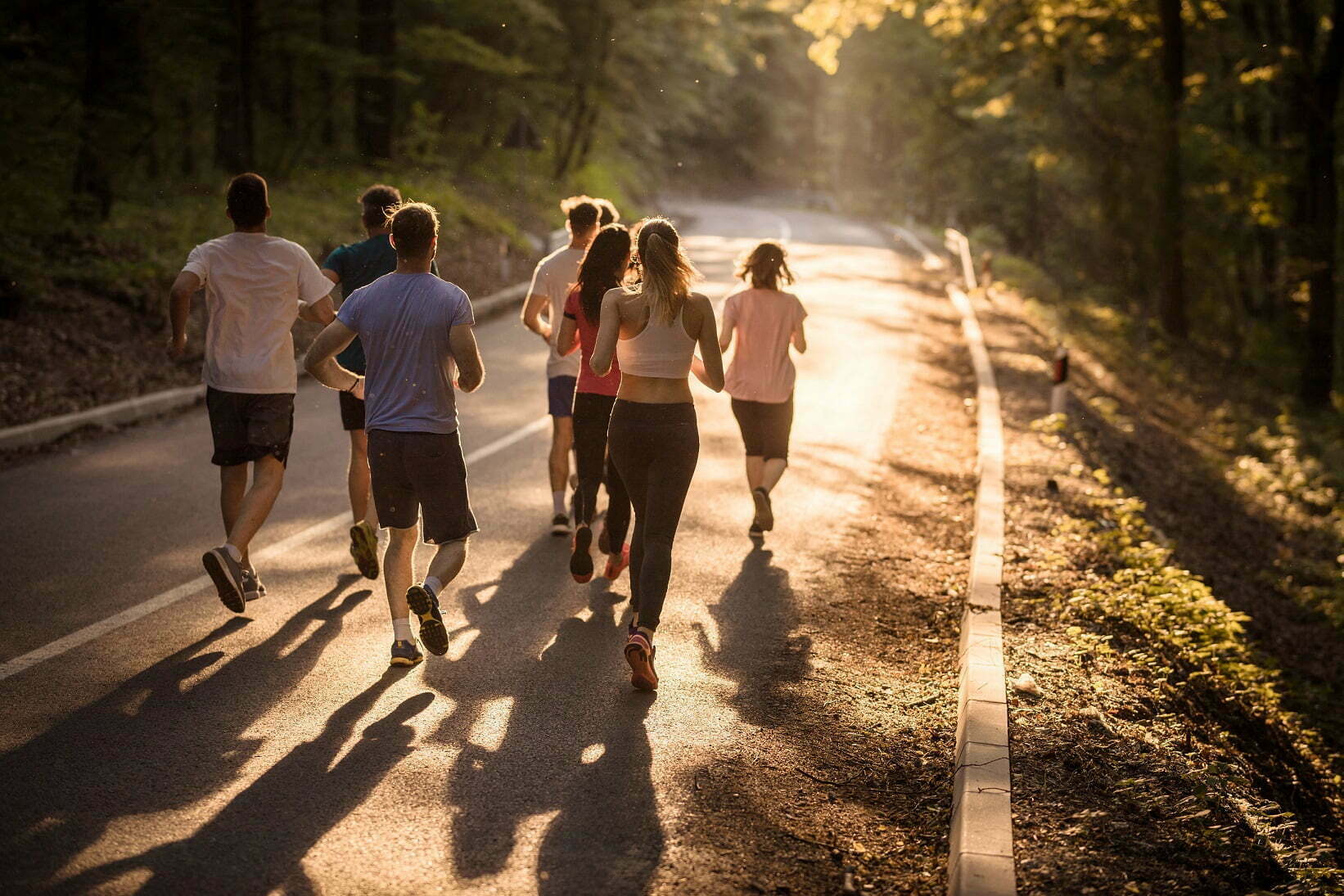 WhatвҖҷs a Good VO2 Max for My Age?
WhatвҖҷs a Good VO2 Max for My Age?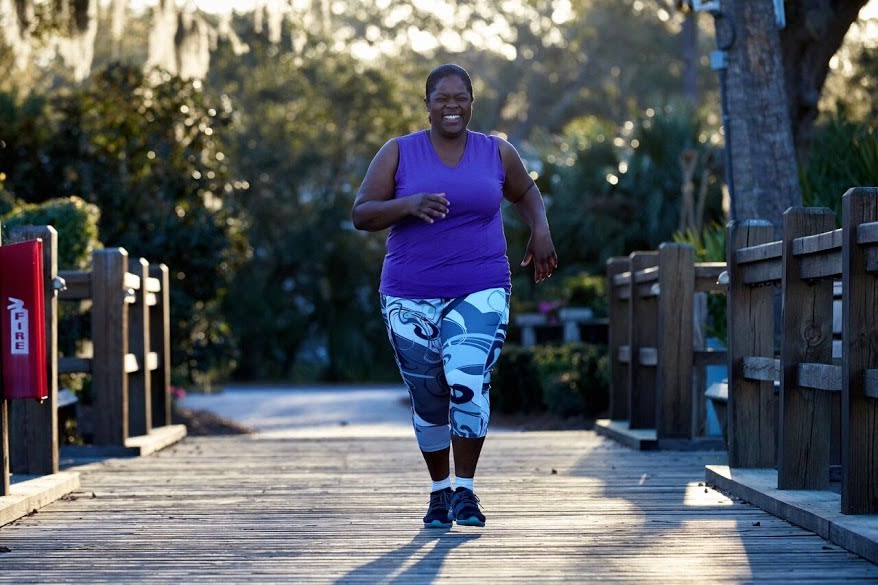 What About My Weight?
What About My Weight?
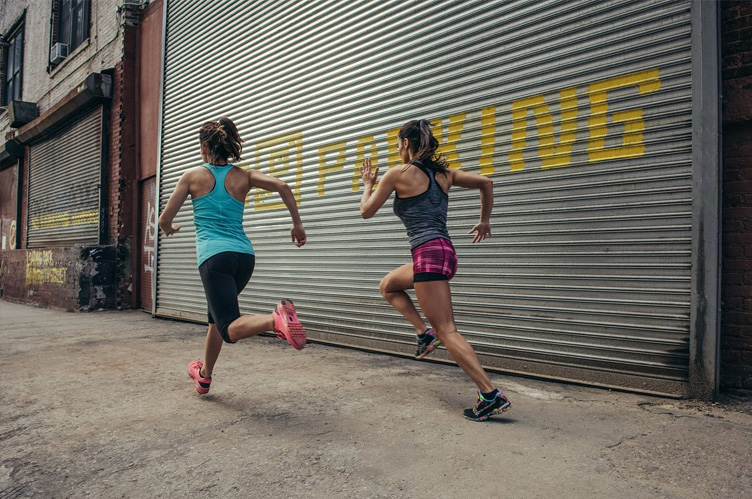

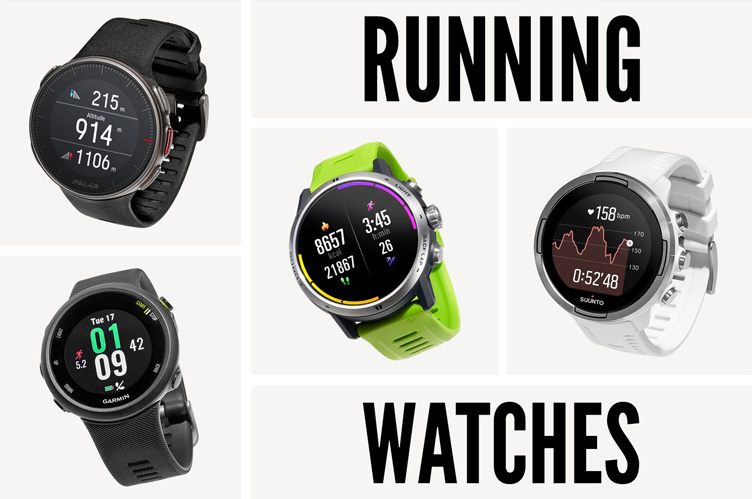


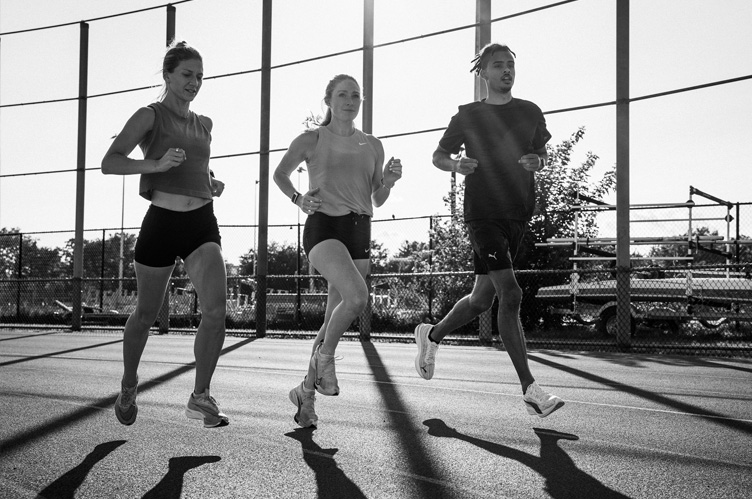 .
.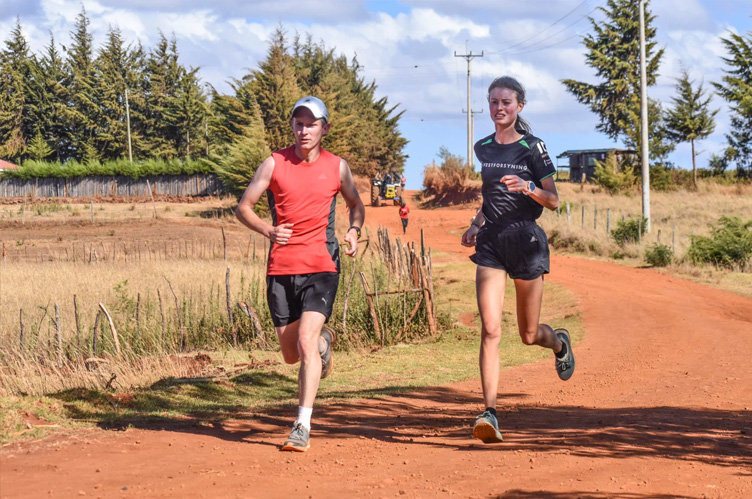
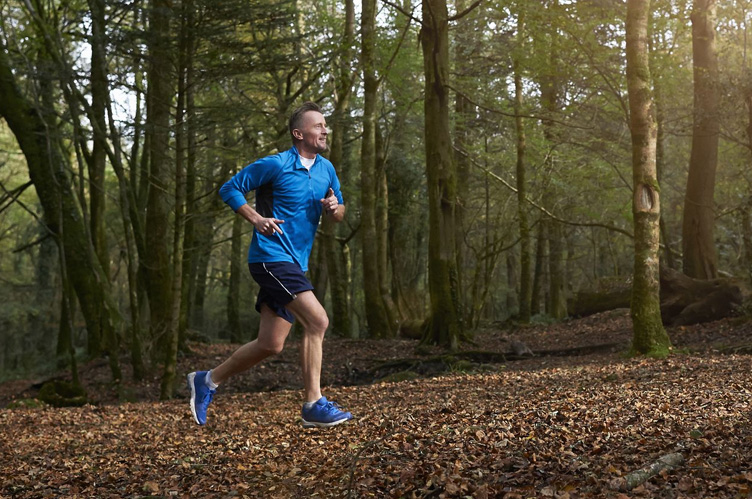
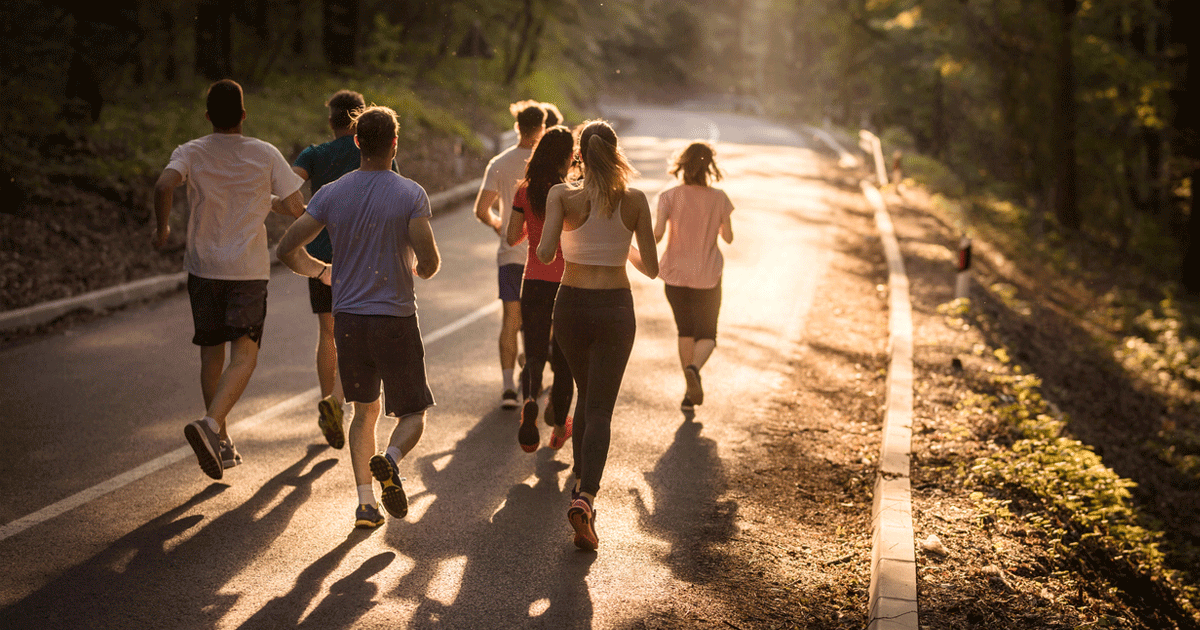


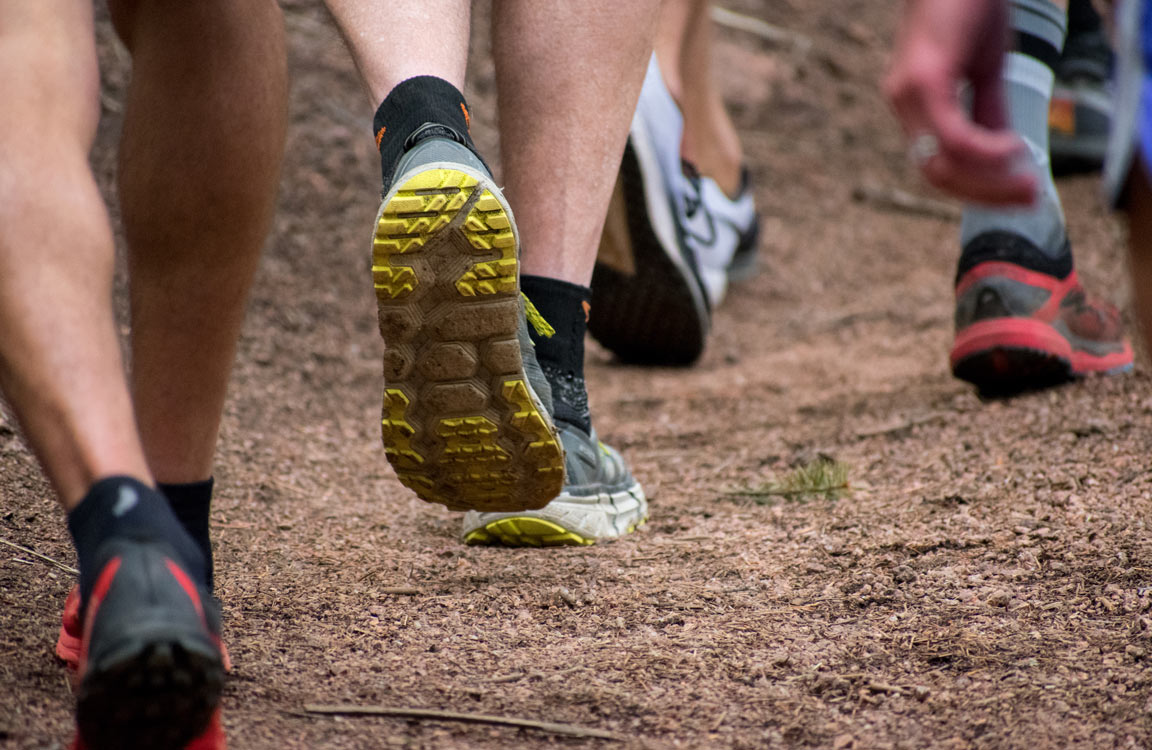

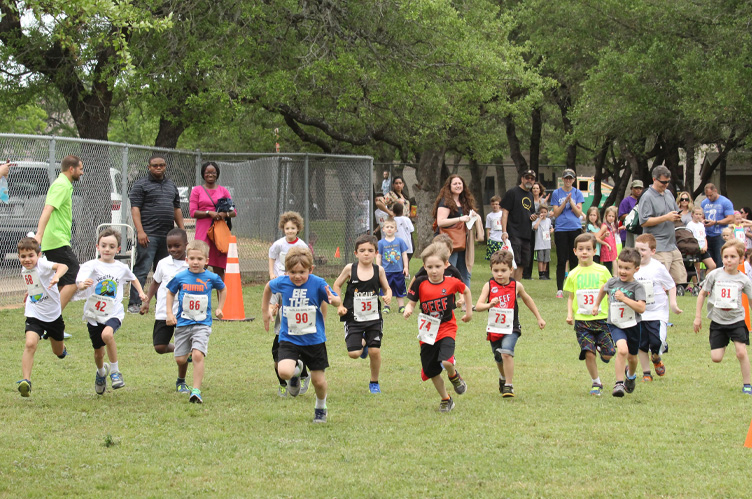

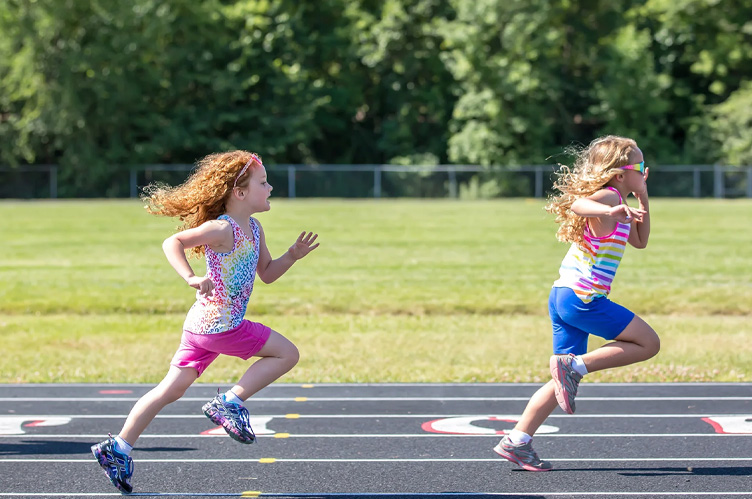
 Watching children and teenagers speeding around the 5K of our local parkrun, I wonder how often theyвҖҷre running that sort of distance and pace. This is something to be mindful of at their ages.
Watching children and teenagers speeding around the 5K of our local parkrun, I wonder how often theyвҖҷre running that sort of distance and pace. This is something to be mindful of at their ages.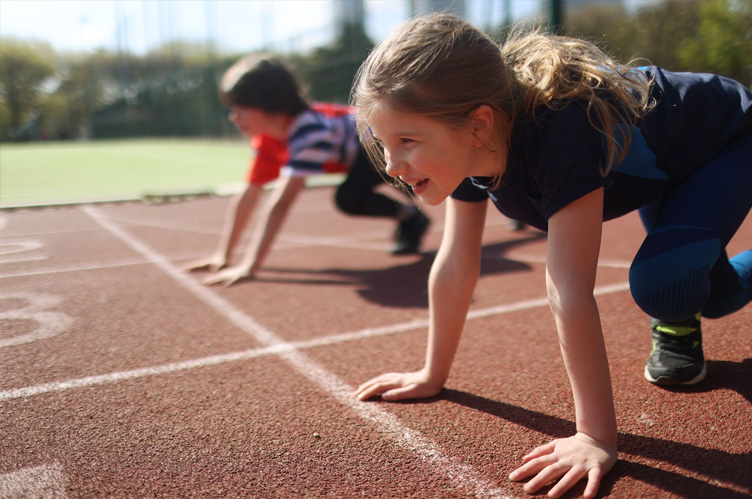
 Former Olympic long-distance runner turned running coach Liz Yelling, who
was coached from an early age, had mild Osgood-Schlatter. She remembers how her coach used to ask his athletes to measure their height weekly to ensure training was modified during a growth spurt.
Former Olympic long-distance runner turned running coach Liz Yelling, who
was coached from an early age, had mild Osgood-Schlatter. She remembers how her coach used to ask his athletes to measure their height weekly to ensure training was modified during a growth spurt.

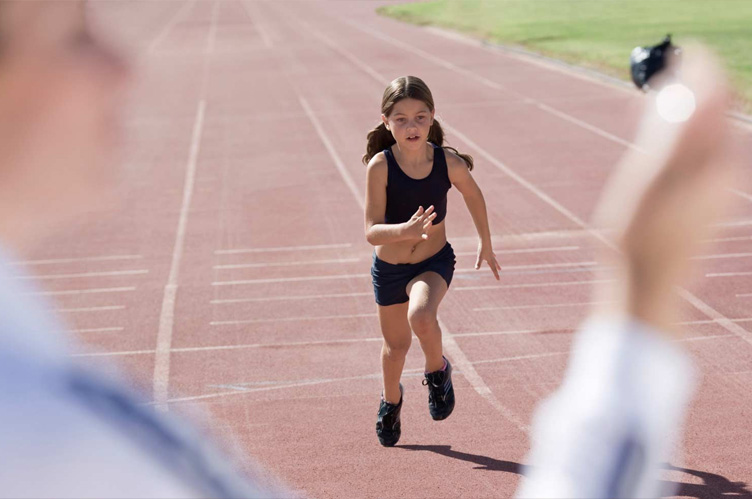 Sometimes, weвҖҷre not our offspringвҖҷs best role models. That can be a difficult pill to swallow, but theyвҖҷre not mini adults and вҖ“ although, aerobically, theyвҖҷre capable of running further and longer вҖ“ physically, they canвҖҷt do this to an extreme level without it being potentially detrimental to their musculoskeletal health over time.
Sometimes, weвҖҷre not our offspringвҖҷs best role models. That can be a difficult pill to swallow, but theyвҖҷre not mini adults and вҖ“ although, aerobically, theyвҖҷre capable of running further and longer вҖ“ physically, they canвҖҷt do this to an extreme level without it being potentially detrimental to their musculoskeletal health over time.
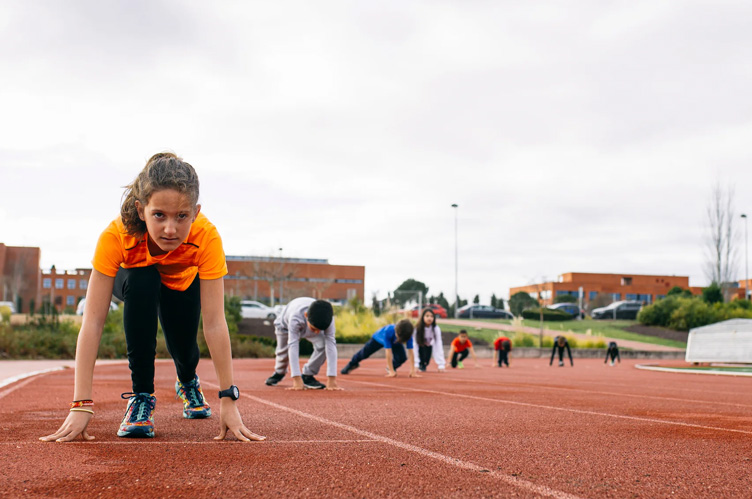 Plus, the two sexes have different biological maturation ages and are different in terms of hormones and musculoskeletal structures. So itвҖҷs key to look at the individual young runner, rather than set limits or targets based on generic advice.
Plus, the two sexes have different biological maturation ages and are different in terms of hormones and musculoskeletal structures. So itвҖҷs key to look at the individual young runner, rather than set limits or targets based on generic advice. but itвҖҷs essential that, with growing bodies, they adequately fuel their runs and recovery. If too much is asked of soft tissue and bones without the essential ingredients for repair, sourced from food, bodies become fatigued and vulnerable to injuries.
but itвҖҷs essential that, with growing bodies, they adequately fuel their runs and recovery. If too much is asked of soft tissue and bones without the essential ingredients for repair, sourced from food, bodies become fatigued and vulnerable to injuries.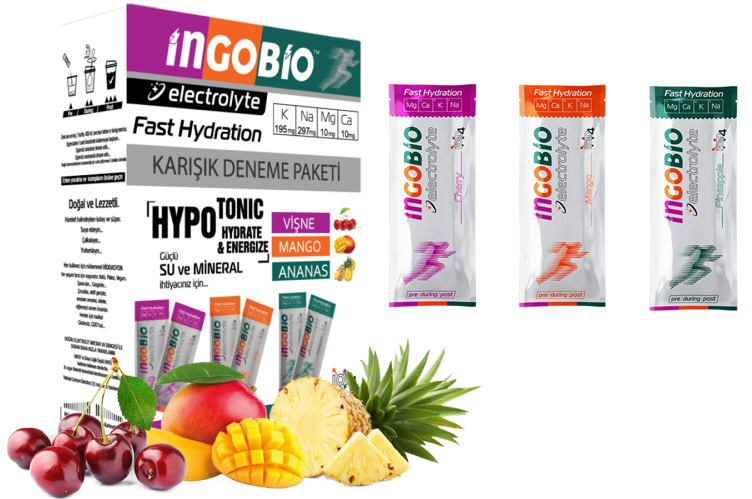
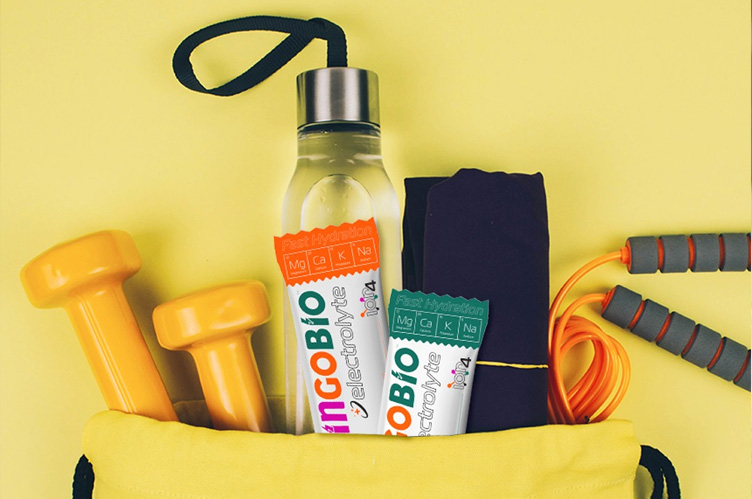
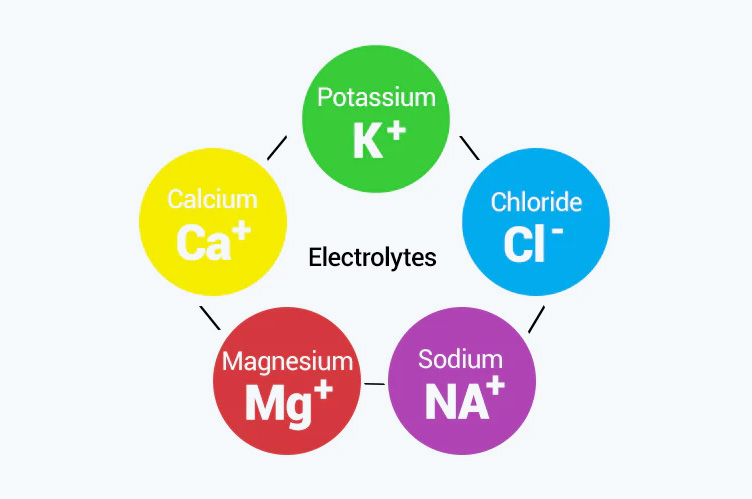 Ш§Щ„Ъ©ШӘШұЩҲЩ„ЫҢШӘвҖҢЩҮШ§ Ш№ШЁШ§ШұШӘЩҶШҜ Ш§ШІ Щ…ЩҲШ§ШҜ Щ…Ш№ШҜЩҶЫҢ ШіШҜЫҢЩ…ШҢ Ъ©Щ„ШұЫҢШҜШҢ ЩҫШӘШ§ШіЫҢЩ…ШҢ Щ…ЩҶЫҢШІЫҢЩ… ЩҲ Ъ©Щ„ШіЫҢЩ…. Ш¬Ш§ЫҢЪҜШІЫҢЩҶЫҢ ЩҮЩ…ЩҮ Ш§ЫҢЩҶ Щ…ЩҲШ§ШҜ Щ…Ш№ШҜЩҶЫҢ Щ…ЩҮЩ… Ш§ШіШӘ. ШЁШ§ Ш§ЫҢЩҶ ШӯШ§Щ„ШҢ ШіШҜЫҢЩ… Щ…ЩҮЩ…ШӘШұЫҢЩҶ Ш§Щ„Ъ©ШӘШұЩҲЩ„ЫҢШӘЫҢШіШӘ Ъ©ЩҮ ШЁШ§ЫҢШҜ ШҜШұ Ш·ЩҲЩ„ ШҜЩҲЫҢШҜЩҶ ШЁЩҮ ШіШ·Шӯ ЩӮШЁЩ„ЫҢ Ш®ЩҲШҜ ШЁШ§ШІЪҜШұШҜШ§ЩҶШҜЩҮ ШҙЩҲШҜ.
Ш§Щ„Ъ©ШӘШұЩҲЩ„ЫҢШӘвҖҢЩҮШ§ Ш№ШЁШ§ШұШӘЩҶШҜ Ш§ШІ Щ…ЩҲШ§ШҜ Щ…Ш№ШҜЩҶЫҢ ШіШҜЫҢЩ…ШҢ Ъ©Щ„ШұЫҢШҜШҢ ЩҫШӘШ§ШіЫҢЩ…ШҢ Щ…ЩҶЫҢШІЫҢЩ… ЩҲ Ъ©Щ„ШіЫҢЩ…. Ш¬Ш§ЫҢЪҜШІЫҢЩҶЫҢ ЩҮЩ…ЩҮ Ш§ЫҢЩҶ Щ…ЩҲШ§ШҜ Щ…Ш№ШҜЩҶЫҢ Щ…ЩҮЩ… Ш§ШіШӘ. ШЁШ§ Ш§ЫҢЩҶ ШӯШ§Щ„ШҢ ШіШҜЫҢЩ… Щ…ЩҮЩ…ШӘШұЫҢЩҶ Ш§Щ„Ъ©ШӘШұЩҲЩ„ЫҢШӘЫҢШіШӘ Ъ©ЩҮ ШЁШ§ЫҢШҜ ШҜШұ Ш·ЩҲЩ„ ШҜЩҲЫҢШҜЩҶ ШЁЩҮ ШіШ·Шӯ ЩӮШЁЩ„ЫҢ Ш®ЩҲШҜ ШЁШ§ШІЪҜШұШҜШ§ЩҶШҜЩҮ ШҙЩҲШҜ.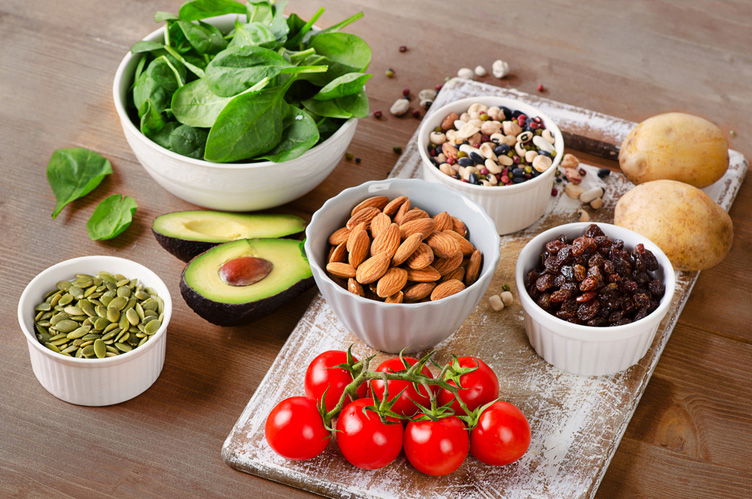 ЩҫШӘШ§ШіЫҢЩ… ЩҮЩ…ЪҶЩҶЫҢЩҶ ШЁЩҮ ШӘШ№Ш§ШҜЩ„ Щ…Ш§ЫҢШ№Ш§ШӘ ШЁЩҮ ЩҲЫҢЪҳЩҮ Щ…Ш§ЫҢШ№Ш§ШӘ ШҜШ§Ш®Щ„ ШіЩ„ЩҲЩ„ЫҢ Ъ©Щ…Ъ© Щ…ЫҢвҖҢЪ©ЩҶШҜ. ЩҫШӘШ§ШіЫҢЩ… ЩҮЩ…ШұШ§ЩҮ ШЁШ§ ШіШҜЫҢЩ…ШҢ Ш§ЩҶШӘЩӮШ§Щ„Ш§ШӘ Ш№ШөШЁЫҢ ШЁЩҮ ШіЩ„ЩҲЩ„вҖҢЩҮШ§ЫҢ Ш№Ш¶Щ„Ш§ЩҶЫҢ ШұШ§ Ш§ШұШӘЩӮШ§ ШҜШ§ШҜЩҮ ЩҲ ШЁЩҮШЁЩҲШҜ Щ…ЫҢвҖҢШЁШ®ШҙШҜ.
ЩҫШӘШ§ШіЫҢЩ… ЩҮЩ…ЪҶЩҶЫҢЩҶ ШЁЩҮ ШӘШ№Ш§ШҜЩ„ Щ…Ш§ЫҢШ№Ш§ШӘ ШЁЩҮ ЩҲЫҢЪҳЩҮ Щ…Ш§ЫҢШ№Ш§ШӘ ШҜШ§Ш®Щ„ ШіЩ„ЩҲЩ„ЫҢ Ъ©Щ…Ъ© Щ…ЫҢвҖҢЪ©ЩҶШҜ. ЩҫШӘШ§ШіЫҢЩ… ЩҮЩ…ШұШ§ЩҮ ШЁШ§ ШіШҜЫҢЩ…ШҢ Ш§ЩҶШӘЩӮШ§Щ„Ш§ШӘ Ш№ШөШЁЫҢ ШЁЩҮ ШіЩ„ЩҲЩ„вҖҢЩҮШ§ЫҢ Ш№Ш¶Щ„Ш§ЩҶЫҢ ШұШ§ Ш§ШұШӘЩӮШ§ ШҜШ§ШҜЩҮ ЩҲ ШЁЩҮШЁЩҲШҜ Щ…ЫҢвҖҢШЁШ®ШҙШҜ.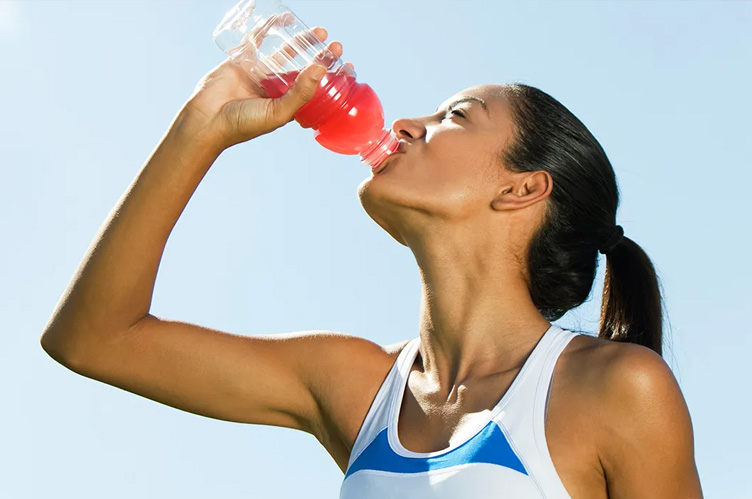 ШЁШұШ§ЫҢ ЩҒШ№Ш§Щ„ЫҢШӘвҖҢЩҮШ§ЫҢ ШұЩҲШІШ§ЩҶЩҮШҢ ШәШ°Ш§ЩҮШ§ЫҢ Ш§ЩҲШұЪҜШ§ЩҶЫҢЪ© Щ…ЫҢвҖҢШӘЩҲШ§ЩҶЩҶШҜ Ш§Щ„Ъ©ШӘШұЩҲЩ„ЫҢШӘвҖҢЩҮШ§ЫҢ Щ„Ш§ШІЩ… ШұШ§ ЩҒШұШ§ЩҮЩ… Ъ©ЩҶЩҶШҜ. ШЁШ§ Ш§ЫҢЩҶ ШӯШ§Щ„ШҢ ЩҲШұШІШҙЪ©Ш§ШұШ§ЩҶ Ш§ШіШӘЩӮШ§Щ…ШӘЫҢ ЩҶЫҢШ§ШІ ШЁЩҮ Ш§Щ„Ъ©ШӘШұЩҲЩ„ЫҢШӘ ШЁЫҢШҙШӘШұЫҢ ШҜШ§ШұЩҶШҜШҢ ШЁЩҮ ЩҲЫҢЪҳЩҮ ШҜШұ Ш·ЩҲЩ„ Щ…ШіШ§ШЁЩӮШ§ШӘ ШЁШ§ Щ…ШіШ§ЩҒШӘ Ш·ЩҲЩ„Ш§ЩҶЫҢШҢ ШҜЩҲЩҮШ§ЫҢ Ш·ЩҲЩ„Ш§ЩҶЫҢвҖҢЩ…ШҜШӘ ЩҲ ШӘЩ…ШұЫҢЩҶШ§ШӘ ШӘШ§ШЁШіШӘШ§ЩҶЫҢ.
ШЁШұШ§ЫҢ ЩҒШ№Ш§Щ„ЫҢШӘвҖҢЩҮШ§ЫҢ ШұЩҲШІШ§ЩҶЩҮШҢ ШәШ°Ш§ЩҮШ§ЫҢ Ш§ЩҲШұЪҜШ§ЩҶЫҢЪ© Щ…ЫҢвҖҢШӘЩҲШ§ЩҶЩҶШҜ Ш§Щ„Ъ©ШӘШұЩҲЩ„ЫҢШӘвҖҢЩҮШ§ЫҢ Щ„Ш§ШІЩ… ШұШ§ ЩҒШұШ§ЩҮЩ… Ъ©ЩҶЩҶШҜ. ШЁШ§ Ш§ЫҢЩҶ ШӯШ§Щ„ШҢ ЩҲШұШІШҙЪ©Ш§ШұШ§ЩҶ Ш§ШіШӘЩӮШ§Щ…ШӘЫҢ ЩҶЫҢШ§ШІ ШЁЩҮ Ш§Щ„Ъ©ШӘШұЩҲЩ„ЫҢШӘ ШЁЫҢШҙШӘШұЫҢ ШҜШ§ШұЩҶШҜШҢ ШЁЩҮ ЩҲЫҢЪҳЩҮ ШҜШұ Ш·ЩҲЩ„ Щ…ШіШ§ШЁЩӮШ§ШӘ ШЁШ§ Щ…ШіШ§ЩҒШӘ Ш·ЩҲЩ„Ш§ЩҶЫҢШҢ ШҜЩҲЩҮШ§ЫҢ Ш·ЩҲЩ„Ш§ЩҶЫҢвҖҢЩ…ШҜШӘ ЩҲ ШӘЩ…ШұЫҢЩҶШ§ШӘ ШӘШ§ШЁШіШӘШ§ЩҶЫҢ.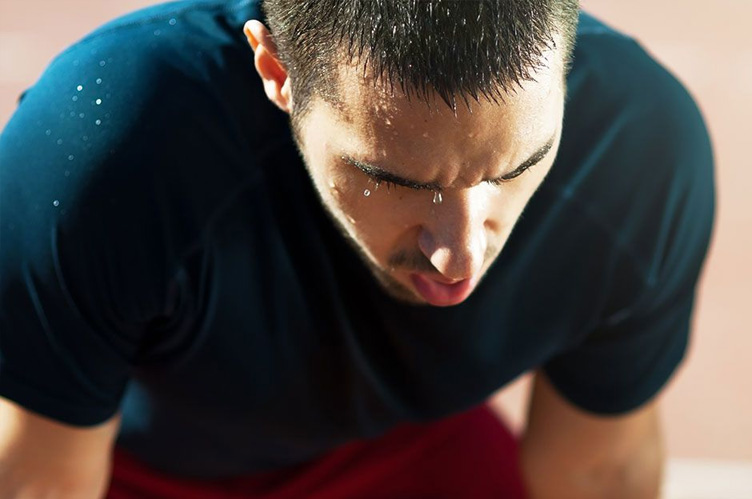 ЫҢЪ© Щ…Ш·Ш§Щ„Ш№ЩҮ ШҜШұ ШіШ§Щ„ 2017 ШҜШұ Щ…Ш¬Щ„ЩҮ Ш§ШіЪ©Ш§ЩҶШҜЫҢЩҶШ§ЩҲЫҢ ЩҫШІШҙЪ©ЫҢ ЩҲ Ш№Щ„Щ… ШҜШұ ЩҲШұШІШҙ (Scandinavian Journal of Medicine and Science in Sport)ШҢ ШіШ·Шӯ ШіШҜЫҢЩ… ШұШ§ ШҜШұ ШҜЩҲЩҶШҜЪҜШ§ЩҶ ШЁШ§ШӘШ¬ШұШЁЩҮ Щ…Ш§ШұШ§ШӘЩҶ Ш§ЩҶШҜШ§ШІЩҮвҖҢЪҜЫҢШұЫҢ Ъ©ШұШҜ. Ъ©ШіШ§ЩҶЫҢ Ъ©ЩҮ Ш§Щ…Щ„Ш§Шӯ Ъ©Щ…ЫҢ ШҜШұ Ш№ШұЩӮ Ш®ЩҲШҜ Ш§ШІ ШҜШіШӘ Щ…ЫҢвҖҢШҜЩҮЩҶШҜ ШЁЩҮ Ш·ЩҲШұ Щ…ШӘЩҲШіШ· 388 Щ…ЫҢЩ„ЫҢ ЪҜШұЩ… ШіШҜЫҢЩ… ШҜШұ Щ„ЫҢШӘШұ Ш№ШұЩӮ Щ…ЫҢвҖҢЪ©ЩҶЩҶШҜ. ЪҜШұЩҲЩҮ Ш§ЩҒШұШ§ШҜ Щ…Ш№Щ…ЩҲЩ„ЫҢ ШЁЩҮ Ш·ЩҲШұ Щ…ШӘЩҲШіШ· 1000 Щ…ЫҢЩ„ЫҢ ЪҜШұЩ… ШҜШұ Щ„ЫҢШӘШұ Ш§ШІ ШҜШіШӘ ШҜШ§ШҜЩҶШҜ.
ЫҢЪ© Щ…Ш·Ш§Щ„Ш№ЩҮ ШҜШұ ШіШ§Щ„ 2017 ШҜШұ Щ…Ш¬Щ„ЩҮ Ш§ШіЪ©Ш§ЩҶШҜЫҢЩҶШ§ЩҲЫҢ ЩҫШІШҙЪ©ЫҢ ЩҲ Ш№Щ„Щ… ШҜШұ ЩҲШұШІШҙ (Scandinavian Journal of Medicine and Science in Sport)ШҢ ШіШ·Шӯ ШіШҜЫҢЩ… ШұШ§ ШҜШұ ШҜЩҲЩҶШҜЪҜШ§ЩҶ ШЁШ§ШӘШ¬ШұШЁЩҮ Щ…Ш§ШұШ§ШӘЩҶ Ш§ЩҶШҜШ§ШІЩҮвҖҢЪҜЫҢШұЫҢ Ъ©ШұШҜ. Ъ©ШіШ§ЩҶЫҢ Ъ©ЩҮ Ш§Щ…Щ„Ш§Шӯ Ъ©Щ…ЫҢ ШҜШұ Ш№ШұЩӮ Ш®ЩҲШҜ Ш§ШІ ШҜШіШӘ Щ…ЫҢвҖҢШҜЩҮЩҶШҜ ШЁЩҮ Ш·ЩҲШұ Щ…ШӘЩҲШіШ· 388 Щ…ЫҢЩ„ЫҢ ЪҜШұЩ… ШіШҜЫҢЩ… ШҜШұ Щ„ЫҢШӘШұ Ш№ШұЩӮ Щ…ЫҢвҖҢЪ©ЩҶЩҶШҜ. ЪҜШұЩҲЩҮ Ш§ЩҒШұШ§ШҜ Щ…Ш№Щ…ЩҲЩ„ЫҢ ШЁЩҮ Ш·ЩҲШұ Щ…ШӘЩҲШіШ· 1000 Щ…ЫҢЩ„ЫҢ ЪҜШұЩ… ШҜШұ Щ„ЫҢШӘШұ Ш§ШІ ШҜШіШӘ ШҜШ§ШҜЩҶШҜ.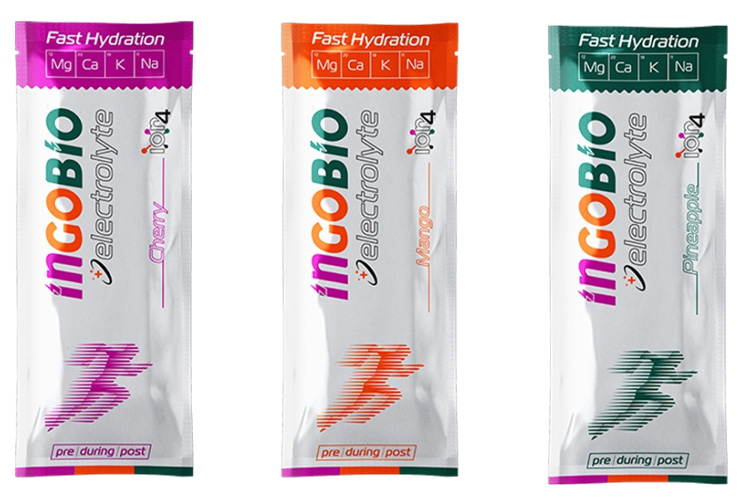 ЩӮШұШ§Шұ ЩҶЫҢШіШӘ ШҙЩ…Ш§ Ш§ЫҢЩҶ Щ…ЩҲШ§ШҜ ШұШ§ ШЁЩҮ Ш·ЩҲШұ Ъ©Ш§Щ…Щ„ Ш¬Ш§ЫҢЪҜШІЫҢЩҶ Ъ©ЩҶЫҢШҜ ЩҲ ЩҶЫҢШ§ШІЫҢ ЩҮЩ… ШЁЩҮ Ш§ЫҢЩҶ Ъ©Ш§Шұ ЩҶШҜШ§ШұЫҢШҜ. ЩҮШҜЩҒ ЩҶЩҮШ§ЫҢЫҢ ШӘЩӮШұЫҢШЁШ§ЩӢ ЩҶЫҢЩ…ЫҢ Ш§ШІ Ш§ЫҢЩҶ Щ…ЩӮШҜШ§Шұ Ш§ШіШӘ (ЫҢШ№ЩҶЫҢ ШӘЩӮШұЫҢШЁШ§ЩӢ 400 Щ…ЫҢЩ„ЫҢ ЪҜШұЩ… ШіШҜЫҢЩ… ШЁШұШ§ЫҢ ЩҮШұ ЫҢЪ© ШіШ§Ш№ШӘ ЩҲШұШІШҙ ШҙШҜЫҢШҜ). ШӯШӘЩ…Ш§ ШЁШ§ЫҢШҜ ШӯЩҲШ§ШіШӘШ§ЩҶ ШЁШ§ШҙШҜ Ъ©ЩҮ ШҜШұ Щ…ШөШұЩҒ ШіШҜЫҢЩ… ШІЫҢШ§ШҜЩҮ ШұЩҲЫҢ ЩҶЪ©ЩҶЫҢШҜ.
ЩӮШұШ§Шұ ЩҶЫҢШіШӘ ШҙЩ…Ш§ Ш§ЫҢЩҶ Щ…ЩҲШ§ШҜ ШұШ§ ШЁЩҮ Ш·ЩҲШұ Ъ©Ш§Щ…Щ„ Ш¬Ш§ЫҢЪҜШІЫҢЩҶ Ъ©ЩҶЫҢШҜ ЩҲ ЩҶЫҢШ§ШІЫҢ ЩҮЩ… ШЁЩҮ Ш§ЫҢЩҶ Ъ©Ш§Шұ ЩҶШҜШ§ШұЫҢШҜ. ЩҮШҜЩҒ ЩҶЩҮШ§ЫҢЫҢ ШӘЩӮШұЫҢШЁШ§ЩӢ ЩҶЫҢЩ…ЫҢ Ш§ШІ Ш§ЫҢЩҶ Щ…ЩӮШҜШ§Шұ Ш§ШіШӘ (ЫҢШ№ЩҶЫҢ ШӘЩӮШұЫҢШЁШ§ЩӢ 400 Щ…ЫҢЩ„ЫҢ ЪҜШұЩ… ШіШҜЫҢЩ… ШЁШұШ§ЫҢ ЩҮШұ ЫҢЪ© ШіШ§Ш№ШӘ ЩҲШұШІШҙ ШҙШҜЫҢШҜ). ШӯШӘЩ…Ш§ ШЁШ§ЫҢШҜ ШӯЩҲШ§ШіШӘШ§ЩҶ ШЁШ§ШҙШҜ Ъ©ЩҮ ШҜШұ Щ…ШөШұЩҒ ШіШҜЫҢЩ… ШІЫҢШ§ШҜЩҮ ШұЩҲЫҢ ЩҶЪ©ЩҶЫҢШҜ. ШӯШӘЫҢ Ш§ЪҜШұ ШіШ·Шӯ ШіШҜЫҢЩ… ШҙЩ…Ш§ ШЁЩҮ ШўШіШӘШ§ЩҶЩҮ Ш®Ш·ШұЩҶШ§Ъ©ЫҢ Ъ©Ш§ЩҮШҙ ЩҶЫҢШ§ЩҒШӘЩҮ ШЁШ§ШҙШҜ ЩҮЩ…ШҢ Ш¬Ш§ЫҢЪҜШІЫҢЩҶЫҢ Щ…Ш¬ШҜШҜ
ШӯШӘЫҢ Ш§ЪҜШұ ШіШ·Шӯ ШіШҜЫҢЩ… ШҙЩ…Ш§ ШЁЩҮ ШўШіШӘШ§ЩҶЩҮ Ш®Ш·ШұЩҶШ§Ъ©ЫҢ Ъ©Ш§ЩҮШҙ ЩҶЫҢШ§ЩҒШӘЩҮ ШЁШ§ШҙШҜ ЩҮЩ…ШҢ Ш¬Ш§ЫҢЪҜШІЫҢЩҶЫҢ Щ…Ш¬ШҜШҜ  Ш§Щ…Ш§ ШЁШұШ§ЫҢ ШҜЩҲЫҢШҜЩҶ ШҜШұ Щ…ШіШ§ЩҒШӘвҖҢЩҮШ§ЫҢ Ш·ЩҲЩ„Ш§ЩҶЫҢШҢ Ш§Щ„Ъ©ШӘШұЩҲЩ„ЫҢШӘвҖҢЩҮШ§ ЩҮЩ… ШЁШұШ§ЫҢ Ш№Щ…Щ„Ъ©ШұШҜ ЩҲ ЩҮЩ… ШЁШұШ§ЫҢ ШіЩ„Ш§Щ…ШӘЫҢ Ш¶ШұЩҲШұЫҢ ЩҮШіШӘЩҶШҜ. Ш№ШҜЩ… ШӘШ№Ш§ШҜЩ„ Ш¬ШІШҰЫҢ
Ш§Щ…Ш§ ШЁШұШ§ЫҢ ШҜЩҲЫҢШҜЩҶ ШҜШұ Щ…ШіШ§ЩҒШӘвҖҢЩҮШ§ЫҢ Ш·ЩҲЩ„Ш§ЩҶЫҢШҢ Ш§Щ„Ъ©ШӘШұЩҲЩ„ЫҢШӘвҖҢЩҮШ§ ЩҮЩ… ШЁШұШ§ЫҢ Ш№Щ…Щ„Ъ©ШұШҜ ЩҲ ЩҮЩ… ШЁШұШ§ЫҢ ШіЩ„Ш§Щ…ШӘЫҢ Ш¶ШұЩҲШұЫҢ ЩҮШіШӘЩҶШҜ. Ш№ШҜЩ… ШӘШ№Ш§ШҜЩ„ Ш¬ШІШҰЫҢ 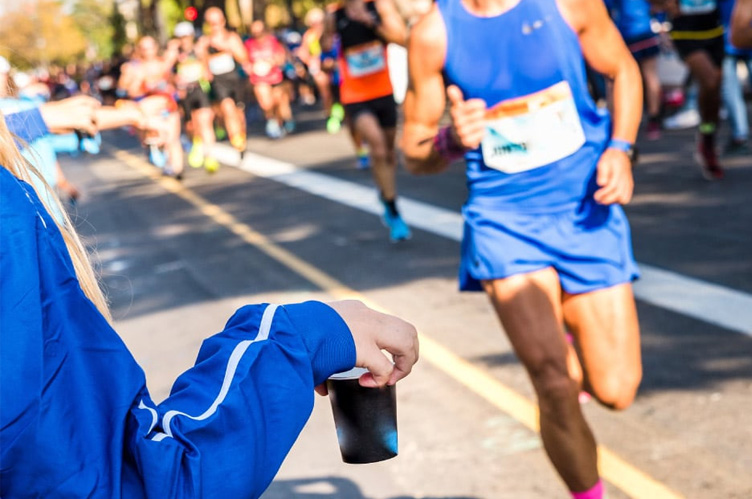 ШӯШ§Щ„Ш§ Ш§ШұШІШҙ ШҜШ§ШұШҜ ШЁЪҜЩҲЫҢЫҢЩ… Ъ©ЩҮ ШҙЩ…Ш§ ШЁЩҮШӘШұ Ш§ШіШӘ
ШӯШ§Щ„Ш§ Ш§ШұШІШҙ ШҜШ§ШұШҜ ШЁЪҜЩҲЫҢЫҢЩ… Ъ©ЩҮ ШҙЩ…Ш§ ШЁЩҮШӘШұ Ш§ШіШӘ 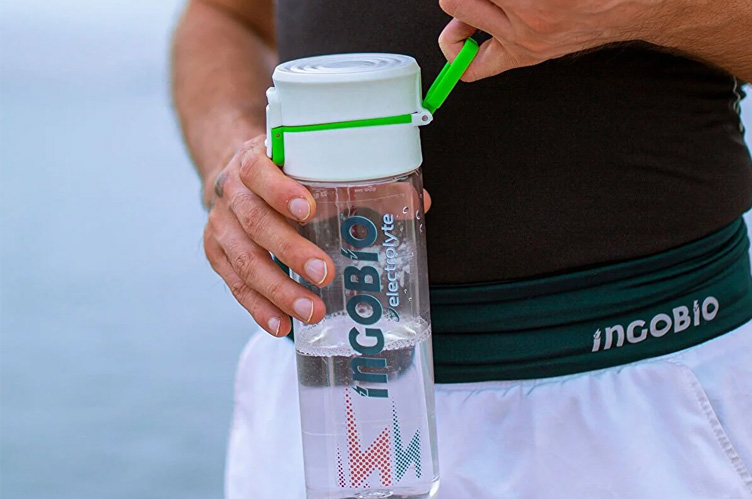 Ш§Щ„Ъ©ШӘШұЩҲЩ„ЫҢШӘвҖҢЩҮШ§ ШЁЩҮ Ш№Щ…Щ„Ъ©ШұШҜ ШөШӯЫҢШӯ Щ…Ш§ЩҮЫҢЪҶЩҮвҖҢЩҮШ§ Ъ©Щ…Ъ© Щ…ЫҢвҖҢЪ©ЩҶЩҶШҜ. ШЁШ§ Ш§ЫҢЩҶ ШӯШ§Щ„ШҢ Щ…ЩҮЩ… ШӘШұЫҢЩҶ ШӘШ§Ш«ЫҢШұ Ш§Щ„Ъ©ШӘШұЩҲЩ„ЫҢШӘвҖҢЩҮШ§ ШЁШұ Ш№Щ…Щ„Ъ©ШұШҜ Щ…ШұШЁЩҲШ· ШЁЩҮ ЩҮЫҢШҜШұШ§ШӘШ§ШіЫҢЩҲЩҶ Ш§ШіШӘ. ШҙЩҲШ§ЩҮШҜ Щ…ШӘШ№ШҜШҜ ЩҶШҙШ§ЩҶ Щ…ЫҢвҖҢШҜЩҮШҜ Ъ©ЩҮ Ш§ШІ ШҜШіШӘ ШҜШ§ШҜЩҶ Щ…Ш§ЫҢШ№Ш§ШӘ ШЁЫҢШҙ Ш§ШІ 2-4ЩӘ ЩҲШІЩҶ ШЁШҜЩҶ Щ…ЫҢвҖҢШӘЩҲШ§ЩҶШҜ Ш№Щ…Щ„Ъ©ШұШҜ ШұШ§ Щ…Ш®ШӘЩ„ Ъ©ЩҶШҜ. ЩҮШұЪҶЩҮ Ш§ШІ ШҜШіШӘ ШҜШ§ШҜЩҶ Щ…Ш§ЫҢШ№Ш§ШӘ ШЁЫҢШҙШӘШұ ШЁШ§ШҙШҜШҢ Ш§ЩҒШӘ Ш№Щ…Щ„Ъ©ШұШҜ ШҙШҜЫҢШҜШӘШұ Ш®ЩҲШ§ЩҮШҜ ШЁЩҲШҜ. ШҜШұ Ъ©Ш§ЩҮШҙ 4 ШӘШ§ 7 ШҜШұШөШҜ Ш§ШІ ЩҲШІЩҶ ШЁШҜЩҶ Ш§ШІ Ш·ШұЫҢЩӮ ШӘШ№ШұЫҢЩӮШҢ Ш№Щ…Щ„Ъ©ШұШҜ ЩҮЩҲШ§ШІЫҢ ШЁЩҮ ШіШұШ№ШӘ Ъ©Ш§ЩҮШҙ Щ…ЫҢвҖҢЫҢШ§ШЁШҜ.
Ш§Щ„Ъ©ШӘШұЩҲЩ„ЫҢШӘвҖҢЩҮШ§ ШЁЩҮ Ш№Щ…Щ„Ъ©ШұШҜ ШөШӯЫҢШӯ Щ…Ш§ЩҮЫҢЪҶЩҮвҖҢЩҮШ§ Ъ©Щ…Ъ© Щ…ЫҢвҖҢЪ©ЩҶЩҶШҜ. ШЁШ§ Ш§ЫҢЩҶ ШӯШ§Щ„ШҢ Щ…ЩҮЩ… ШӘШұЫҢЩҶ ШӘШ§Ш«ЫҢШұ Ш§Щ„Ъ©ШӘШұЩҲЩ„ЫҢШӘвҖҢЩҮШ§ ШЁШұ Ш№Щ…Щ„Ъ©ШұШҜ Щ…ШұШЁЩҲШ· ШЁЩҮ ЩҮЫҢШҜШұШ§ШӘШ§ШіЫҢЩҲЩҶ Ш§ШіШӘ. ШҙЩҲШ§ЩҮШҜ Щ…ШӘШ№ШҜШҜ ЩҶШҙШ§ЩҶ Щ…ЫҢвҖҢШҜЩҮШҜ Ъ©ЩҮ Ш§ШІ ШҜШіШӘ ШҜШ§ШҜЩҶ Щ…Ш§ЫҢШ№Ш§ШӘ ШЁЫҢШҙ Ш§ШІ 2-4ЩӘ ЩҲШІЩҶ ШЁШҜЩҶ Щ…ЫҢвҖҢШӘЩҲШ§ЩҶШҜ Ш№Щ…Щ„Ъ©ШұШҜ ШұШ§ Щ…Ш®ШӘЩ„ Ъ©ЩҶШҜ. ЩҮШұЪҶЩҮ Ш§ШІ ШҜШіШӘ ШҜШ§ШҜЩҶ Щ…Ш§ЫҢШ№Ш§ШӘ ШЁЫҢШҙШӘШұ ШЁШ§ШҙШҜШҢ Ш§ЩҒШӘ Ш№Щ…Щ„Ъ©ШұШҜ ШҙШҜЫҢШҜШӘШұ Ш®ЩҲШ§ЩҮШҜ ШЁЩҲШҜ. ШҜШұ Ъ©Ш§ЩҮШҙ 4 ШӘШ§ 7 ШҜШұШөШҜ Ш§ШІ ЩҲШІЩҶ ШЁШҜЩҶ Ш§ШІ Ш·ШұЫҢЩӮ ШӘШ№ШұЫҢЩӮШҢ Ш№Щ…Щ„Ъ©ШұШҜ ЩҮЩҲШ§ШІЫҢ ШЁЩҮ ШіШұШ№ШӘ Ъ©Ш§ЩҮШҙ Щ…ЫҢвҖҢЫҢШ§ШЁШҜ.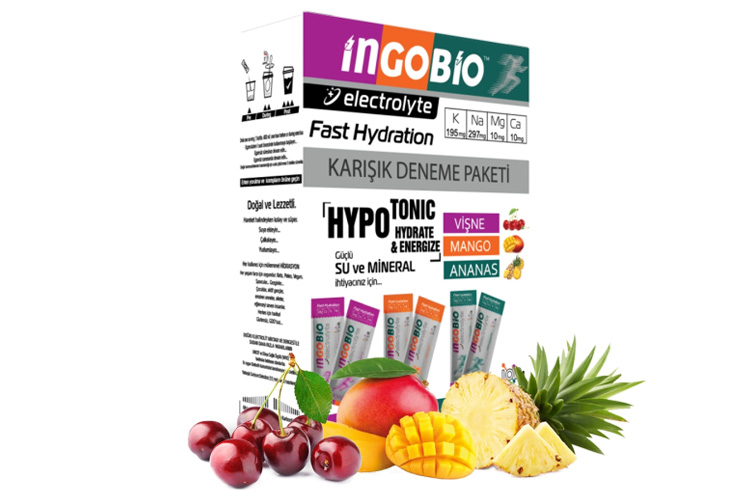 ЩҮЩ…Ш§ЩҶШ·ЩҲШұ Ъ©ЩҮ ШҜШұ ШЁШ§Щ„Ш§ ШӘЩҲШ¶ЫҢШӯ ШҜШ§ШҜЩҮ ШҙШҜШҢ
ЩҮЩ…Ш§ЩҶШ·ЩҲШұ Ъ©ЩҮ ШҜШұ ШЁШ§Щ„Ш§ ШӘЩҲШ¶ЫҢШӯ ШҜШ§ШҜЩҮ ШҙШҜШҢ 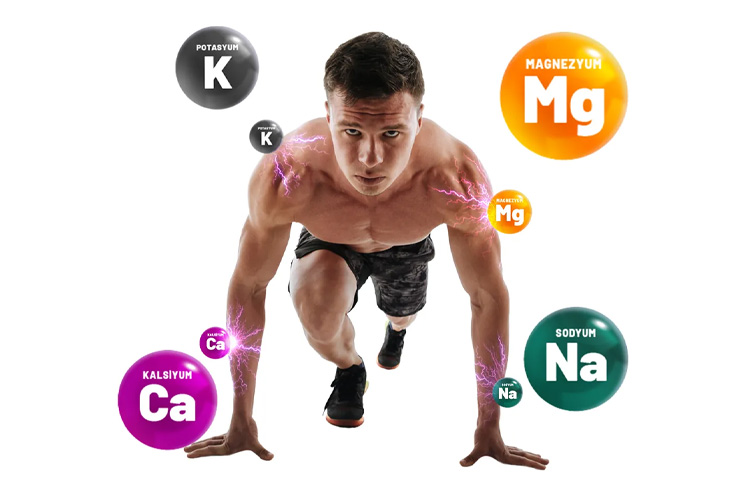 ЫҢЪ© Щ…Ш·Ш§Щ„Ш№ЩҮ ШҜШұ ШіШ§Щ„ 2016 ШҜШұ Щ…Ш¬Щ„ЩҮ ЩҫШІШҙЪ©ЫҢ ЩҲ Ш№Щ„ЩҲЩ… ЩҲШұШІШҙЫҢ Ш§ШіЪ©Ш§ЩҶШҜЫҢЩҶШ§ЩҲЫҢЫҢ ЩҲШұШІШҙЪ©Ш§ШұШ§ЩҶ ШіЩҮ ЪҜШ§ЩҶЩҮ ШұШ§ ШҜШұ Щ…ШіШ§ЩҒШӘ ЩҶЫҢЩ…ЩҮ Щ…Ш§ШұШ§ШӘЩҶШҢ ШЁШ§ ЪҜШұЩҲЩҮ Ъ©ЩҶШӘШұЩ„ (Ъ©ЩҮ ШҜШ§ШұЩҲЩҶЩ…Ш§ (placebos) Щ…ШөШұЩҒ Ъ©ШұШҜЩҶШҜ) ЩҲ ЪҜШұЩҲЩҮЫҢ Ъ©ЩҮ ЩӮШұШөвҖҢЩҮШ§ЫҢ Ш§Щ„Ъ©ШӘШұЩҲЩ„ЫҢШӘ Ш®ЩҲШұШ§Ъ©ЫҢ Щ…ШөШұЩҒ Ъ©ШұШҜЩҶШҜШҢ Щ…ЩҲШұШҜ ШўШІЩ…Ш§ЫҢШҙ ЩӮШұШ§Шұ ШҜШ§ШҜ.
ЫҢЪ© Щ…Ш·Ш§Щ„Ш№ЩҮ ШҜШұ ШіШ§Щ„ 2016 ШҜШұ Щ…Ш¬Щ„ЩҮ ЩҫШІШҙЪ©ЫҢ ЩҲ Ш№Щ„ЩҲЩ… ЩҲШұШІШҙЫҢ Ш§ШіЪ©Ш§ЩҶШҜЫҢЩҶШ§ЩҲЫҢЫҢ ЩҲШұШІШҙЪ©Ш§ШұШ§ЩҶ ШіЩҮ ЪҜШ§ЩҶЩҮ ШұШ§ ШҜШұ Щ…ШіШ§ЩҒШӘ ЩҶЫҢЩ…ЩҮ Щ…Ш§ШұШ§ШӘЩҶШҢ ШЁШ§ ЪҜШұЩҲЩҮ Ъ©ЩҶШӘШұЩ„ (Ъ©ЩҮ ШҜШ§ШұЩҲЩҶЩ…Ш§ (placebos) Щ…ШөШұЩҒ Ъ©ШұШҜЩҶШҜ) ЩҲ ЪҜШұЩҲЩҮЫҢ Ъ©ЩҮ ЩӮШұШөвҖҢЩҮШ§ЫҢ Ш§Щ„Ъ©ШӘШұЩҲЩ„ЫҢШӘ Ш®ЩҲШұШ§Ъ©ЫҢ Щ…ШөШұЩҒ Ъ©ШұШҜЩҶШҜШҢ Щ…ЩҲШұШҜ ШўШІЩ…Ш§ЫҢШҙ ЩӮШұШ§Шұ ШҜШ§ШҜ.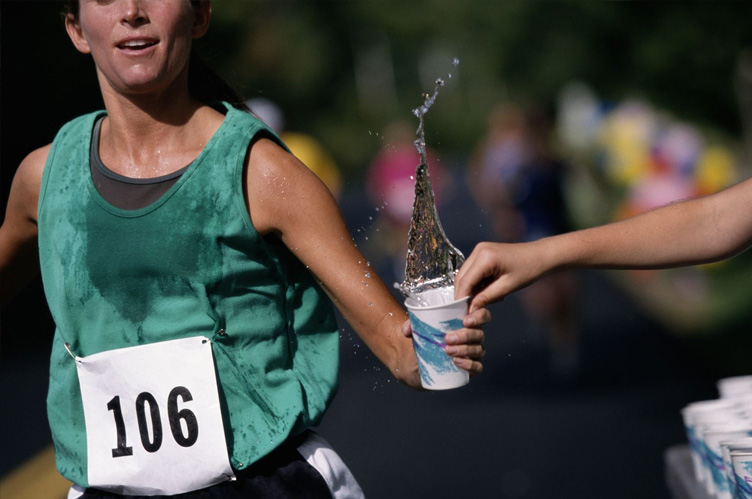 ЩҮЩҶЪҜШ§Щ…ЫҢ Ъ©ЩҮ ШҜШұ ШӯЫҢЩҶ ЩҲШұШІШҙ ШўШЁ ШІЫҢШ§ШҜ ШЁШҜЩҲЩҶ ШіШҜЫҢЩ… Ъ©Ш§ЩҒЫҢ Щ…ШөШұЩҒ Щ…ЫҢвҖҢЪ©ЩҶЫҢШҜШҢ ШӯШ¬Щ… Ш®ЩҲЩҶ ШҙЩ…Ш§ Щ…ЫҢвҖҢШӘЩҲШ§ЩҶШҜ ШЁШіЫҢШ§Шұ ШұЩӮЫҢЩӮ ШҙЩҲШҜ. Ш§ЫҢЩҶ ЩҲШ¶Ш№ЫҢШӘ ЩҮЫҢЩҫЩҲЩҶШ§ШӘШұЩ…ЫҢ ЩҶШ§Щ…ЫҢШҜЩҮ Щ…ЫҢвҖҢШҙЩҲШҜ ЩҲ ЩҶЫҢШ§ШІ ШЁЩҮ Щ…ШұШ§ЩӮШЁШӘвҖҢЩҮШ§ЫҢ ЩҫШІШҙЪ©ЫҢ ШӯШұЩҒЩҮвҖҢШ§ЫҢ ЩҲ ЩҒЩҲШұЫҢ ШҜШ§ШұШҜ. Ш№Щ„Ш§ШҰЩ… ШҙШ§Щ…Щ„ ШӘЩҮЩҲШ№ШҢ Ш§ШіШӘЩҒШұШ§ШәШҢ ШіШұЪҜЫҢШ¬ЩҮШҢ ЪҜЫҢШ¬ЫҢШҢ ШіШұШҜШұШҜ ЩҲ Ш®ШіШӘЪҜЫҢ ШҙШҜЫҢШҜ Ш§ШіШӘ.
ЩҮЩҶЪҜШ§Щ…ЫҢ Ъ©ЩҮ ШҜШұ ШӯЫҢЩҶ ЩҲШұШІШҙ ШўШЁ ШІЫҢШ§ШҜ ШЁШҜЩҲЩҶ ШіШҜЫҢЩ… Ъ©Ш§ЩҒЫҢ Щ…ШөШұЩҒ Щ…ЫҢвҖҢЪ©ЩҶЫҢШҜШҢ ШӯШ¬Щ… Ш®ЩҲЩҶ ШҙЩ…Ш§ Щ…ЫҢвҖҢШӘЩҲШ§ЩҶШҜ ШЁШіЫҢШ§Шұ ШұЩӮЫҢЩӮ ШҙЩҲШҜ. Ш§ЫҢЩҶ ЩҲШ¶Ш№ЫҢШӘ ЩҮЫҢЩҫЩҲЩҶШ§ШӘШұЩ…ЫҢ ЩҶШ§Щ…ЫҢШҜЩҮ Щ…ЫҢвҖҢШҙЩҲШҜ ЩҲ ЩҶЫҢШ§ШІ ШЁЩҮ Щ…ШұШ§ЩӮШЁШӘвҖҢЩҮШ§ЫҢ ЩҫШІШҙЪ©ЫҢ ШӯШұЩҒЩҮвҖҢШ§ЫҢ ЩҲ ЩҒЩҲШұЫҢ ШҜШ§ШұШҜ. Ш№Щ„Ш§ШҰЩ… ШҙШ§Щ…Щ„ ШӘЩҮЩҲШ№ШҢ Ш§ШіШӘЩҒШұШ§ШәШҢ ШіШұЪҜЫҢШ¬ЩҮШҢ ЪҜЫҢШ¬ЫҢШҢ ШіШұШҜШұШҜ ЩҲ Ш®ШіШӘЪҜЫҢ ШҙШҜЫҢШҜ Ш§ШіШӘ.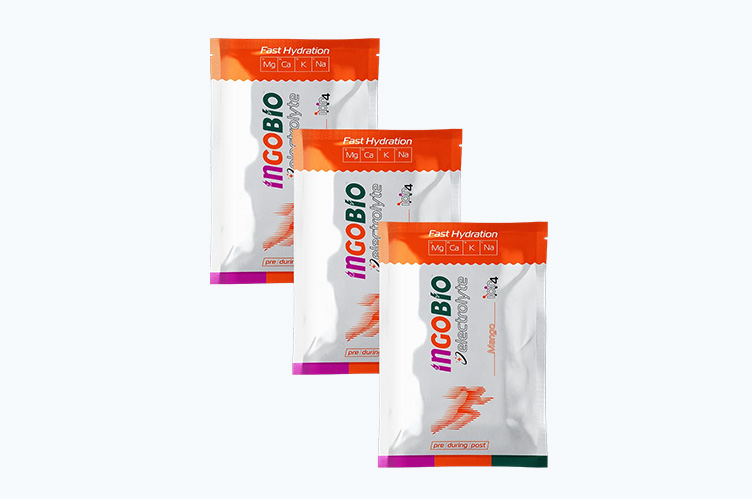 ШЁШұШ§ЫҢ ШӘШ¬ШІЫҢЩҮ ЩҲ ШӘШӯЩ„ЫҢЩ„ Ш№Щ…ЫҢЩӮвҖҢШӘШұ Ш§Щ„Ъ©ШӘШұЩҲЩ„ЫҢШӘвҖҢЩҮШ§ ЩҲ ЩҮЫҢЩҫЩҲЩҶШ§ШӘШұЩ…ЫҢШҢ
ШЁШұШ§ЫҢ ШӘШ¬ШІЫҢЩҮ ЩҲ ШӘШӯЩ„ЫҢЩ„ Ш№Щ…ЫҢЩӮвҖҢШӘШұ Ш§Щ„Ъ©ШӘШұЩҲЩ„ЫҢШӘвҖҢЩҮШ§ ЩҲ ЩҮЫҢЩҫЩҲЩҶШ§ШӘШұЩ…ЫҢШҢ 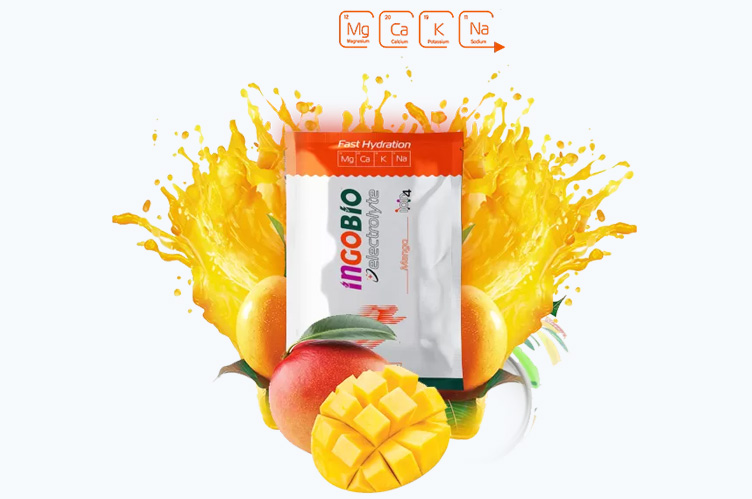 ШЁШіЫҢШ§ШұЫҢ Ш§ШІ ШҜЩҲЩҶШҜЪҜШ§ЩҶ
ШЁШіЫҢШ§ШұЫҢ Ш§ШІ ШҜЩҲЩҶШҜЪҜШ§ЩҶ 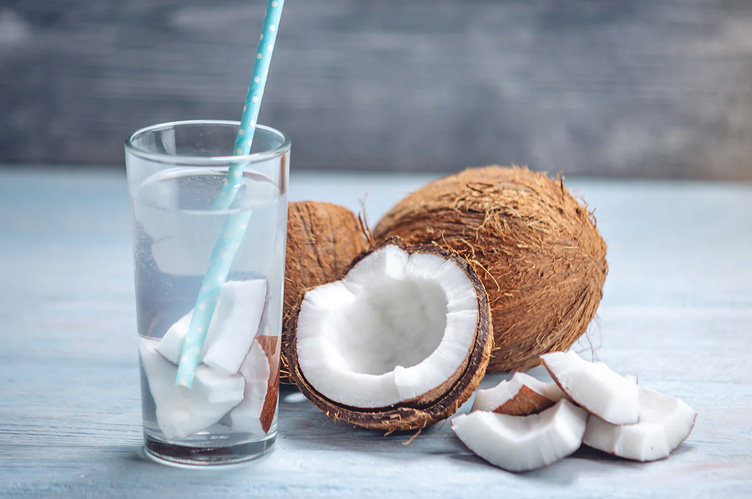 ШўШЁ ЩҶШ§ШұЪҜЫҢЩ„ ШҜШұ ШіШ§Щ„вҖҢЩҮШ§ЫҢ Ш§Ш®ЫҢШұ Щ…ШӯШЁЩҲШЁЫҢШӘ ШЁЫҢШҙШӘШұЫҢ ЩҫЫҢШҜШ§ Ъ©ШұШҜЩҮ Ш§ШіШӘ. Щ…Ш·Ш§Щ„Ш№ЩҮвҖҢШ§ЫҢ ШҜШұ ШіШ§Щ„ 2017 ШҜШұ Щ…Ш¬Щ„ЩҮ ШЁЫҢЩҶ Ш§Щ„Щ…Щ„Щ„ЫҢ ШӘШәШ°ЫҢЩҮ ЩҲШұШІШҙЫҢ ЩҲ Щ…ШӘШ§ШЁЩҲЩ„ЫҢШіЩ… ЩҲШұШІШҙЫҢ (International Journal of Sport Nutrition and Exercise Metabolism)ШҢ ЩҮЫҢЪҶ ШӘЩҒШ§ЩҲШӘ ЩӮШ§ШЁЩ„ ШӘЩҲШ¬ЩҮЫҢ ШЁЫҢЩҶ ШўШЁ ЩҶШ§ШұЪҜЫҢЩ„ ШЁШ§ ШўШЁ Щ…Ш№Щ…ЩҲЩ„ЫҢ ШҜШұ ЩҮЫҢШҜШұШ§ШӘШ§ШіЫҢЩҲЩҶ ЫҢШ§ Ш№Щ…Щ„Ъ©ШұШҜ time trial ЩҶШҙШ§ЩҶ ЩҶШҜШ§ШҜ.
ШўШЁ ЩҶШ§ШұЪҜЫҢЩ„ ШҜШұ ШіШ§Щ„вҖҢЩҮШ§ЫҢ Ш§Ш®ЫҢШұ Щ…ШӯШЁЩҲШЁЫҢШӘ ШЁЫҢШҙШӘШұЫҢ ЩҫЫҢШҜШ§ Ъ©ШұШҜЩҮ Ш§ШіШӘ. Щ…Ш·Ш§Щ„Ш№ЩҮвҖҢШ§ЫҢ ШҜШұ ШіШ§Щ„ 2017 ШҜШұ Щ…Ш¬Щ„ЩҮ ШЁЫҢЩҶ Ш§Щ„Щ…Щ„Щ„ЫҢ ШӘШәШ°ЫҢЩҮ ЩҲШұШІШҙЫҢ ЩҲ Щ…ШӘШ§ШЁЩҲЩ„ЫҢШіЩ… ЩҲШұШІШҙЫҢ (International Journal of Sport Nutrition and Exercise Metabolism)ШҢ ЩҮЫҢЪҶ ШӘЩҒШ§ЩҲШӘ ЩӮШ§ШЁЩ„ ШӘЩҲШ¬ЩҮЫҢ ШЁЫҢЩҶ ШўШЁ ЩҶШ§ШұЪҜЫҢЩ„ ШЁШ§ ШўШЁ Щ…Ш№Щ…ЩҲЩ„ЫҢ ШҜШұ ЩҮЫҢШҜШұШ§ШӘШ§ШіЫҢЩҲЩҶ ЫҢШ§ Ш№Щ…Щ„Ъ©ШұШҜ time trial ЩҶШҙШ§ЩҶ ЩҶШҜШ§ШҜ.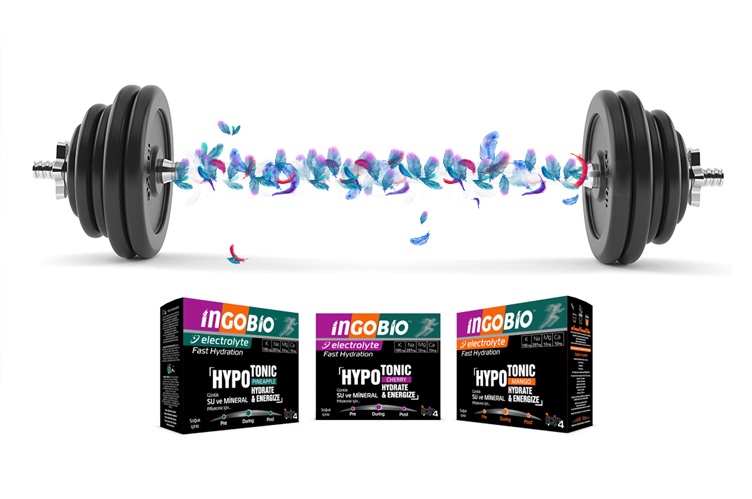 ЩҫШӘШ§ШіЫҢЩ… ШҜШұ Щ…ЩӮШ§ЫҢШіЩҮ ШЁШ§ ШіШҜЫҢЩ… ШЁЩҮ Щ…ЩӮШҜШ§Шұ Ъ©Щ…ЫҢ ШҜШұ Ш№ШұЩӮ Ш§ШІ ШҜШіШӘ Щ…ЫҢвҖҢШұЩҲШҜ. Ш§ЪҜШұ ШўШЁ ЩҶШ§ШұЪҜЫҢЩ„ ШұШ§ ШЁЩҮ ЩҶЩҲШҙЫҢШҜЩҶЫҢ ЩҲШұШІШҙЫҢ ШӘШұШ¬ЫҢШӯ Щ…ЫҢвҖҢШҜЩҮЫҢШҜШҢ Ш§ШІ ШўЩҶ Ш§ШіШӘЩҒШ§ШҜЩҮ Ъ©ЩҶЫҢШҜ. ШЁШ§ Ш§ЫҢЩҶ ШӯШ§Щ„ШҢ ШўШЁ ЩҶШ§ШұЪҜЫҢЩ„ ЩҶШіШЁШӘ ШЁЩҮ ШіШ§ЫҢШұ ЩҶЩҲШҙЫҢШҜЩҶЫҢвҖҢЩҮШ§ЫҢ
ЩҫШӘШ§ШіЫҢЩ… ШҜШұ Щ…ЩӮШ§ЫҢШіЩҮ ШЁШ§ ШіШҜЫҢЩ… ШЁЩҮ Щ…ЩӮШҜШ§Шұ Ъ©Щ…ЫҢ ШҜШұ Ш№ШұЩӮ Ш§ШІ ШҜШіШӘ Щ…ЫҢвҖҢШұЩҲШҜ. Ш§ЪҜШұ ШўШЁ ЩҶШ§ШұЪҜЫҢЩ„ ШұШ§ ШЁЩҮ ЩҶЩҲШҙЫҢШҜЩҶЫҢ ЩҲШұШІШҙЫҢ ШӘШұШ¬ЫҢШӯ Щ…ЫҢвҖҢШҜЩҮЫҢШҜШҢ Ш§ШІ ШўЩҶ Ш§ШіШӘЩҒШ§ШҜЩҮ Ъ©ЩҶЫҢШҜ. ШЁШ§ Ш§ЫҢЩҶ ШӯШ§Щ„ШҢ ШўШЁ ЩҶШ§ШұЪҜЫҢЩ„ ЩҶШіШЁШӘ ШЁЩҮ ШіШ§ЫҢШұ ЩҶЩҲШҙЫҢШҜЩҶЫҢвҖҢЩҮШ§ЫҢ